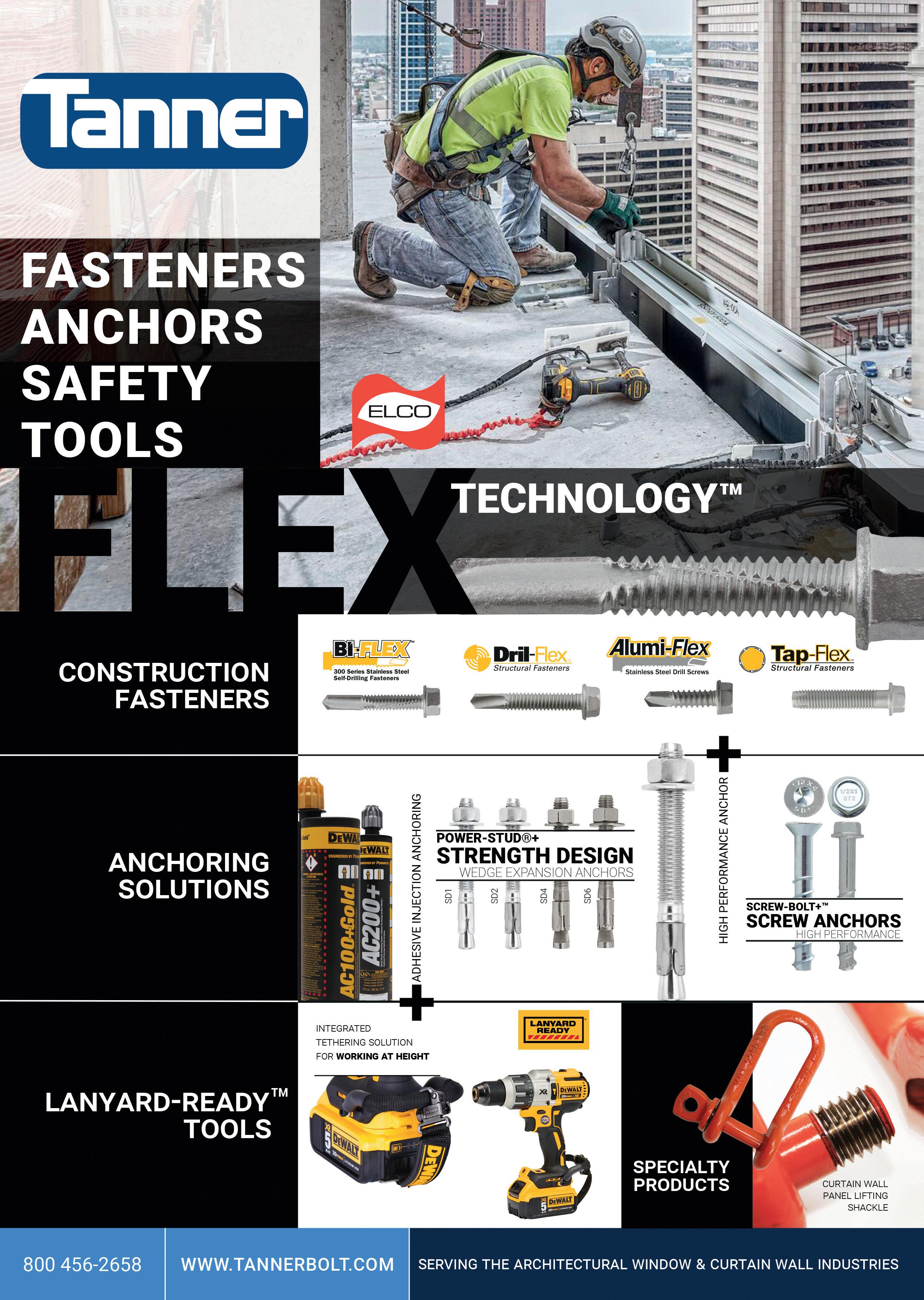Health & safety
Prevent serious incidents and save reputations by seeking expert advice

Health & safety
Prevent serious incidents and save reputations by seeking expert advice
Can everything made from fossil-based materials today, be made from a tree tomorrow? Find out from Stora Enso
Why developers should consider adopting a strategic procurement approach

Digital operations
Digital transformation and the need to include mobile data capture solutions
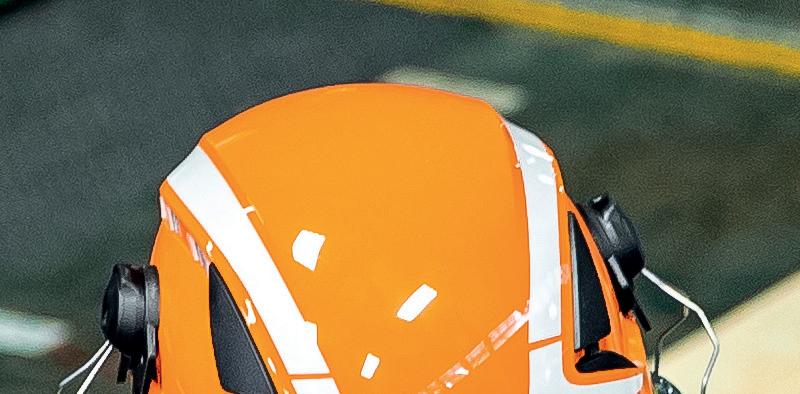










Say goodbye to disconnected systems and boost operational e ciency. It’s time to experience SMARTER HR, PAYROLL & FINANCE.

CEO Andrew Schofield
Group COO Joe Woolsgrove
Creative Consultant Tom Vince

Data & Insights Director Jaione Soga
Editor Libbie Hammond

Assistant Editor Mary Floate
Content Editors Alex Caesari, Danielle Champ, Steven Dobinson
Editorial Administrator Amy Gilks
Creative Lead Lee Protheroe
Managing Art Editor Fleur Daniels
Art Editors Paul Gillings, David Howard, Charlie Protheroe
Artwork Administrator
Rochelle Broderick-White
Sales Director Alasdair Gamble
Project Directors
Philip Monument, Joy Francesconi
Head of Content Management
Adam Blanch
Client Sales Executives Chloe Allman
Project Managers Lewis Bush, Jo-Ann Jeffery, Natalie Griffiths, Ben Richell, Laura Thompson
Content Managers
Mark Cowles, Jeff Goldenberg, Melanie Joyce, Tarjinder Kaur de Silva, James Page, Wendy Russell, Richard Saunders, Kieran Shukri
Media Sales Executives
Jessica Eglington, Will Gwyther, Sam Surrell
Social Media Co-ordinator Rosie Clegg
IT Support Iain Kidd
Administration Natalie Fletcher, Rory Gallacher, Ibby Mundhir
Hello and welcome to the January issue of Construction & Civil Engineering. We start 2023 with a look at some essential topics for this year’s agenda. From health & safety to digital operations, the features this month highlight not just the issues, but also the benefits of changing and adapting where needed, learning and education, and why it’s worth the pain of introducing new approaches. I was particularly interested in the Design feature on page 20 – and how nature-inspired interiors continue to gain the popularity that began to peak at the beginning of the pandemic. Enriching spaces through not just the use of physical plants, but also natural forms, shapes, colours, patterns and textures brings with it not just pleasing aesthetics but improved wellbeing. I hope more projects begin to include thoughtful design theories such as this in the future.


Executive Vice President and Head
Wood
© 2023 Finelight Media Group
Corporate Head Office
Cringleford Business Centre, 10 Intwood Road. Cringleford, Norwich NR4 6AU U.K.
T: (312) 854-0123 T: +44 (0) 1603 274130
www.ccemagazine.com
US Office 2240 West Woolbright Road, Suite 402 Boynton Beach. FI 33426
T: (561) 778-2396






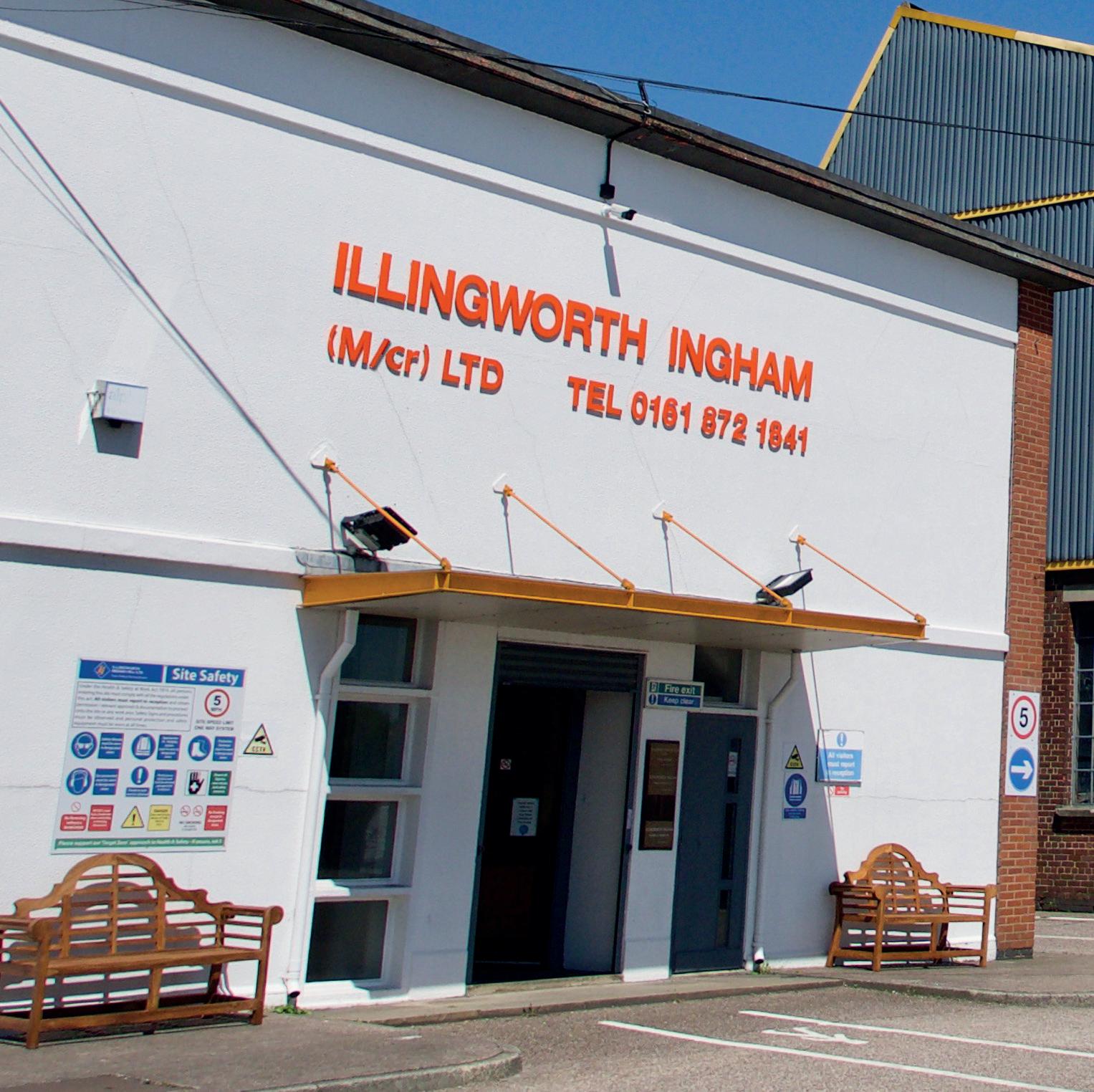


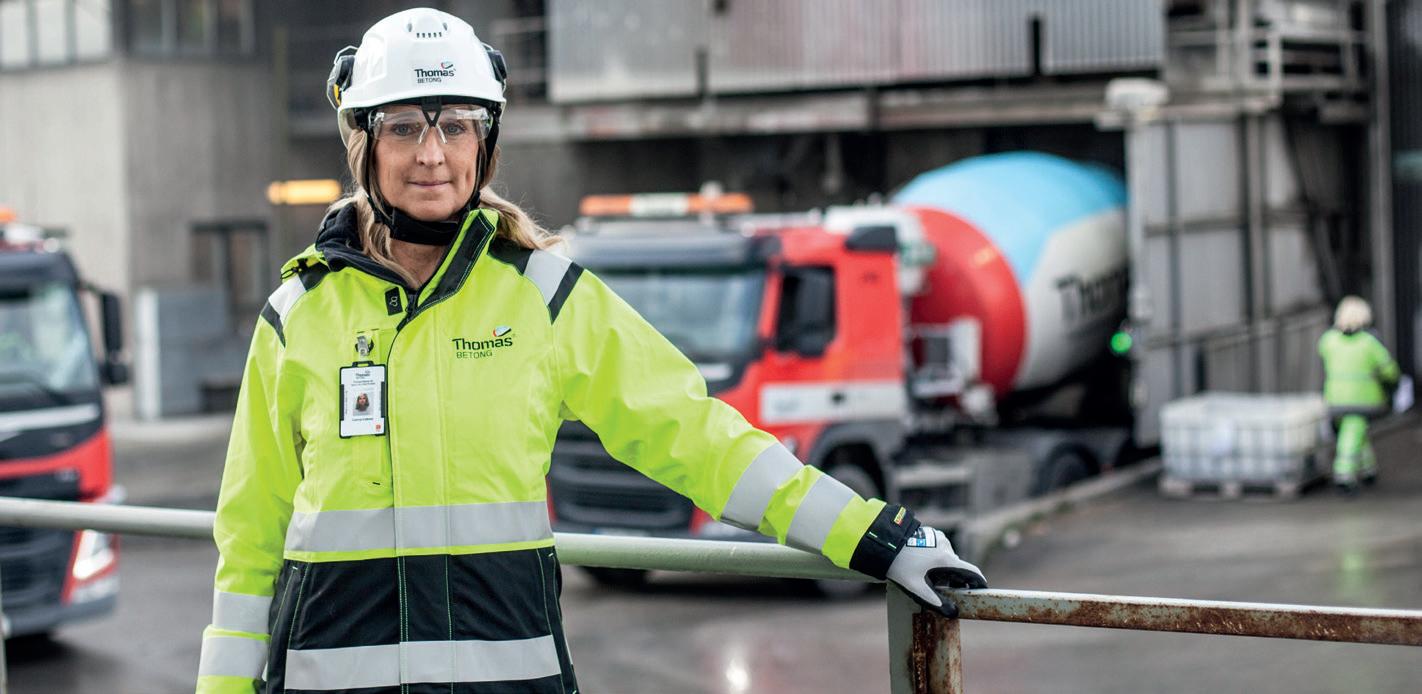












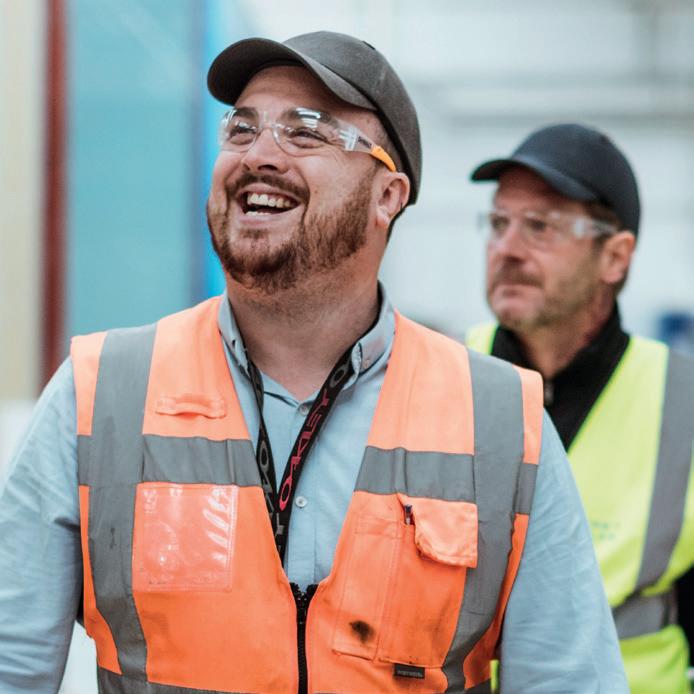
Most modern businesses have to deal with global competition and evolving business processes. To meet the ever-increasing demand, making technology a part of your organisation’s operational workflows is crucial.
Workflow management aims to optimise the steps in any type of workflow. This ensures that the task is completed correctly, efficiently, and consistently. With the right workflow management in place, it can help streamline and automate repeatable business tasks. It can further minimise room for errors and increase overall efficiency.
With workflow management in place, it can dramatically improve how your business operates. In addition, managers can make smarter and quicker decisions and workers can easily collaborate in a more productive and agile way.
Any innovative business knows that reliable technology, effective strategy, and a digitalised workflow system will ultimately help employees reduce cycle times, reduce errors, improve compliance and streamline repetitive tasks.
Consistency on tasks - With the creation and documentation of workflows, your teams can easily distinguish when tasks should get started and completed. This means completing tasks will not rely on one person but rather be taught and repeated by others. With workflow management, you can expect a more resilient organisation.
Improved visibility - Workflow management means managers can easily spot and change where bottlenecks, barriers, redundancies or efficiencies dwell within the workflow.
Savings - An optimised workflow means your business will ultimately save time and money.
Productive employees - An efficient workflow helps employees be more productive and satisfied. Gone are the repetitive and mundane parts of their jobs and each task produces better results.
improvementThrough workflow management, managers will be able to identify areas and skills that your staff or business may lack. This will help put the right individuals into the best roles where they can thrive.
The benefits that
realised through the right workflow management solution
Mobility solutions - With workflows becoming more mobile, rugged devices can play a major role in ensuring activities are monitored anytime and anywhere. Activities and deliverables can be put in a single centralised area through the help of rugged tablets, rugged handhelds or wearables.
Workflow automation software - Good and reliable software will help your team better manage workflow, documentation, frameworks and other tasks. ■
Conker was founded in 2008 and offers a wide range of rugged devices for mobile workforces built on both Android and Windows platforms. UK-based, Conker devices are shipped from and serviced in the UK. The company was recognised as one of the FT 1000 Europe’s Fastest Growing Companies (2018) and is a Winner Deloitte Technology Fast 500 (2017).
With businesses across the UK now facing the threat of recession and economic uncertainty, fears are growing that some may choose to cut corners when it comes to keeping on top of their health and safety obligations.

In the past year, we have already seen a steep increase in the number of businesses being fined for not carrying out regular surveys and assessments, which is something I believe we could see continue well into 2023 and beyond.
But turning your back on health and safety is the worst thing you can do. In fact, being proactive and engaging with a health and safety expert at the very beginning of your project could be the best decision you ever make.
Take asbestos for example.
If you think it’s a problem which has been consigned to the history books, it’s important to think again.
Despite being banned from all new buildings since 1999, a report published by the Asbestos Testing and Consultancy Association (ATaC) has highlighted the enormous scale of the asbestos problem currently facing the UK.
Of more than 128,000 buildings surveyed between October 2021 and March 2022, a staggering 78 per cent were found to contain asbestos. In total more than 700,000 individual items of asbestos were found and 71 per cent of those were damaged, potentially posing a significant threat to health.
On some construction sites, building work has begun without an asbestos survey even taking place, putting everyone on site at risk of developing deadly mesothelioma.
This is just one example, but experience shows us that many businesses don’t usually contact health and safety experts until it’s too late. If an accident happens, they will often bring in an external consultant to record it and say what can be done about it after the event.

But to avoid serious incidents happening in the first place, contractors need to be more proactive and get health and safety experts involved in their projects at the beginning. If we are employed at the start, we can take the time to fully understand the project and allow the client to take our lead.
If they don’t, they end up paying for an investigation and costs for remedial works. They may also have lost time on their project and earned themselves a bad reputation in the process.
While attitudes are starting to change, I believe we still have some way to go when it comes to education. For health and safety to work, there has to be a commitment to make sure everyone is aware of their roles and responsibilities. Sadly, this is not always the case.
I often run health and safety refresher courses and you would be surprised at the number of professionals, including architects and designers, who don’t fully understand their obligations. This is something which has to change.

Out on site, however, we do have new technology at our fingertips which is helping to make working
environments safer and much more secure. The introduction of GPS on machinery enables roads to be laid correctly, making it much safer for those involved in construction.
PPE is constantly evolving and improving allowing us all to be better protected. I recently visited a BSI test centre where I witnessed impact testing on safety eyewear, which was tested by firing a ball bearing at the lenses from varying distances. Legislation has meant that safety equipment has been upgraded for the better and that can only be a good thing, particularly when working from height, which is still one of the biggest causes of deaths among construction workers in the UK.
I have no doubt that this year will be challenging for many businesses, but health and safety in all its forms should remain right at the top of everyone’s agenda – now and in the future. ■
www.acornhealthandsafety.co.uk
John Crockett is Health and Safety Manager at Acorn Safety Services, a leading, independent health and safety consultancy...you would be surprised at the number of professionals, including architects and designers, who don’t fully understand their obligations


Agreat construction procurement strategy is a key element to successful construction projects. By clearly outlining procurement options, the plan should effectively guide the developer through each stage of the project and ensure success.
Here, Jonathan Spencer provides his insight into what a construction procurement strategy is. He goes on to discuss how it will help to deliver a successful project, whilst reviewing the key routes and factors involved in establishing your procurement strategy.
A formal document, setting out the process of sourcing and obtaining materials and supplies for a construction project, is known as a construction procurement strategy. This document will give particular attention to tendering and contracts. It is often a collaborative effort between the construction
team and client, to ensure all parties agree to the chosen strategy.
to ensure the success of your
Your chosen strategy will influence a range of key decisions throughout the construction process, including:
■ At what stage your construction team are appointed.
■ The structure of the project programme.
■ The tools used to manage risk.
■ Who holds responsibility for inspecting the work at key stages.
■ Who is contractually responsible for project risks.
■ At what stage specialist contractors become involved in design work.
These decisions, and more, can have a considerable effect on the time, cost and quality aspects of your project; ultimately highlighting the importance of establishing a great construction procurement strategy.
The most popular procurement route is traditional contract - often referred to as design-bid-build. Here, a building consultancy will develop the design alongside the client, following the client’s development of a detailed brief and budget for the project. Once the design is complete, a building contractor will be responsible for completing the project - as specified in the design brief - within the budget and time constraints.
For those interested in low-risk procurement options with defined timescales and costs, traditional contract is the leading choice.
In both tender approaches for directing the construction procurement process that design and build offers, the process will begin with a main contractor being appointed to design and construct the building. This can be a sensible choice from the perspective of a client, as the contractor will become the single point of contact responsible for project delivery.
The first approach is the single-stage tender, in which interested contractors submit a tender response including a fixed lump-sum cost. After a sufficient number of responses, a contract will be awarded to the best submission.
The second approach is the two-stage tender, in which a contractor is appointed prior to the availability of the information with which they would be able to calculate a fixed price. In this approach, the selected contractor - who will have submitted their programme, preliminaries, project team, profits and overheads - will be appointed with a preconstruction services agreement, meaning they can advise the client on a consultancy basis. Following this, the client and contractor will negotiate a fixed price for the project.
Whilst a less common procurement route, the management contract is gaining popularity. This route sees the client appoint designers and a management contractor, the latter of which is paid to manage both the construction works and the subcontractors enlisted to complete the work. The management contractor will undertake a consultancy role, working closely with the designers in the effort to determine the program for construction.
This procurement route gives the management contractor the responsibility to make the majority of the key decisions throughout the project; providing progress reports to the client at a pre-agreed frequency. Should your project have a short timescale, this may be the most suitable option, although it does pose a greater financial risk.
It’s important to consider the key goals of the project. You may be looking to keep a strong focus on the management and mitigation of risks throughout the project, in which case, traditional procurement is probably the most suitable route to take, whilst the management contract route is clearly unsuitable.
The project requirements must also be considered. Certain procurement routes, for example, will be unsuitable should you require just a single point of contact. In this specific case, you’re likely to find the management contract route to suit your requirements.
Next, consider what timeframes the project requires. For a project that needs to be delivered as soon as possible, the design and build procurement route is understandably the favored option, especially for less complex projects. On the other hand, significantly complex builds would be more suited to the traditional contract route.

Finally, look back over your previous projects and consider the lessons you have learned from these. You may have found the management contract route poses a significant financial risk when applied to your sector, for example. Prior understanding like this should be applied to future projects to avoid unnecessary hassle and ensure you select the most suitable construction procurement route. ■
www.jpspms.co.uk
Jonathan Spencer is Founder and
 Director
Director
of JPS Project Management Services. JPS Project Management Services brings a wealth of experience as a contractor, designer, and project manager to ensure every client’s vision is met. Jonathan builds strong relationships with each and every client, enabling him to manage one, some, or all aspects of their development project.
Alack of productivity has been a known issue in the construction industry for some time now. Over the past two decades, productivity growth in UK construction has averaged just 0.4 per cent per year, compared with 3.2 per cent in manufacturing, according to the ONS.
Management consulting firm McKinsey has suggested this could be because the sector has been particularly slow to adopt process and technology innovations. So, the question is, what technologies can companies in the construction sector be implementing right now to improve their own productivity?
Mobile data capture solutions, such as apps, allow data to be collected digitally and stored remotely. This is done via the use of electronic versions of forms and reports, instead of relying on paperbased systems. Here are a few of the ways that implementing this type of technology could help the construction industry to boost its productivity:


Employees working between sites, and without regular access to a desk, can often find managing physical paperwork a challenge. Documents can easily be lost, damaged or incorrectly filed. And when document management is poor, this can mean incomplete audit trails, time wasted on searching for information, miscommunication, and even the ultimate failure of the project. It can also lead to endless compliancy issues that put the business at risk of legal action. This could result in potential
penalties or mean that they are unable to invoice for completed work.
By replacing traditional paper forms, field workers can easily collect, monitor and share data via their mobile device, such as job report forms, timesheets, time stamps and locations, photos and signatures. Some data capture apps can also give organizations live updates of when the status of a job changes –such as whether a specific task has been completed. This can help to digitally record the exact progress of a project, making it easier to report back to clients or project managers.

In an environment where construction businesses are under increasing pressure to cut operational costs, whilst maintaining a high productivity level, adopting cloud technology is a great way for firms to become more agile and improve employee communication. A major project will often involve people from several disciplines with differing skill-sets – from engineers to admin teams, collaborating together. With the development of cloud technology, it is now easier than ever before for front facing operatives working at different locations, and without regular access to a desk, to stay in contact with colleagues from other sites.
For instance, workers who have been tasked with updating a building’s interior can digitally record updates on the status of an individual job, and take photographs and videos to show progress. This data can then be uploaded to a platform hosted on the cloud and instantly accessed by head office; so, work can be actioned straight away, and results recorded and signed off quickly enabling speedier invoicing.
Remaining competitive is an important focus for any construction firm, particularly given the current economic climate, so businesses need to keep their eyes open for opportunities that can help to drive the company forward. Adopting new technology, such as mobile devices, data capture services and cloud technology, clearly provides great cost-effective and efficiency benefits for construction companies and now is the time to take advantage and stay ahead of the competition.
Perhaps most importantly of all, digital data capture solutions allow businesses to collect and have access to much higher quality data quickly.
Information is gathered more consistently, as all data captured in the forms or reports is then saved automatically. They can also help businesses to access data that it would otherwise be almost impossible to collect, allowing operatives, for example, to GPS tag and time stamp documents.
Businesses should look for a front end data capture solution that can be connected to back end business intelligence tools, because this means that this high-quality data can be analysed quickly and easily, helping to identify patterns that will influence important business decisions. As a result, digital data capture can enable plant hire companies to be more agile, responding to customer needs in a more informed, intelligent and ultimately profitable way.
With productivity likely to be a priority for all businesses operating in the construction sector in the coming years, a willingness to embrace digital technology could prove crucial. Offering a host of invaluable benefits, mobile data capture solutions should form a key part of any plant hire firm’s digital transformation plans. ■
Colin Yates www.workmobileforms.comColin Yates is Chief Support Officer at WorkMobile, an award winning mobile data capture service that replaces paper forms. Using the API, data captured may be integrated into back-office or ERP systems and further extended into a bespoke workflow solution that includes a variety of management information reporting options. WorkMobile® was founded in 2001 as eSAY Solutions Ltd and rebranded as WorkMobile® in 2015.
By replacing traditional paper forms, field workers can easily collect, monitor and share data via their mobile device

It’s the idea that people - since the beginning of time - must feel linked to their natural environment, and the other living things in it, not only to survive but to thrive. It’s a fundamental part of who we are.
Sally Coulthard, ‘Biophilia: You + Nature + Home’
Biophilic design isn’t just the interior trend of the moment – it’s a much needed design movement. Google shows that US searches for biophilic design over recent years seemed to peak sharply around the beginning of pandemic lockdowns.
The stress of the pandemic spotlighted the importance of good mental and physical wellbeing while living and working indoors or returning to the office. It’s easy to understand why seeking comfort through a connection with nature resonates with people. And this form of comfort has a name: biophilia.
Interior design brand Hovia discusses the vital benefits of biophilia, and its customers’ preference for nature-inspired wallpapers.
It’s an architectural and interior
strategy based on the idea of biophilia. Simply bringing plant life into an indoor office space can boost wellbeing by 47 per cent, creativity by 45 per cent and productivity by 38 per cent.
But biophilic design isn’t limited to plants, and the benefits don’t stop there. In his book ‘Design a Healthy Home’, biophilic design expert Oliver Heath breaks down the three core principles of the approach:
Bringing real forms of nature and ways to connect to natural systems into your space.
Including references to nature, taking inspiration from its forms, shapes, colors, patterns and textures, and even the way technology can copy them.
Mimicking the spatial qualities of natural environments to enhance or evoke human responses. This could be as simple as creating safe spaces for retreat or configuring your space to allow for longer sight lines.
And how to achieve them in a home or office space:
Helping out our circadian rhythms and happiness
■ Make the most of the day by letting sunlight flood in as much as possible. In the office, turn off florescent lights and let day light in through windows. Living with natural light positively affects our circadian rhythm, productivity, mood, and sleep.
Reducing our cortisol levels, allowing better recovery from stress
■ The cognitive benefits of being in nature are well known and wellstudied. You can also add elements that remind you of nature to your indoor space to get the same benefits, including improved focus, lower stress, better mood, and reduced risk of psychiatric disorders.
Improving your wellbeing and effectiveness at work
■ Research into workplace biophilic design shows that it makes us more creative, energised and productive. We’re also less likely to take sick days. In your office or home desk room, get a good view out the window, let in the daylight, and add plant life to naturally make the air more humid.
Better sleep, temperature regulation, and relaxation
■ Create total darkness in the bedroom while you sleep to aid your body clock with shutters or blackout curtains. Use a quiet fan and a wool duvet to prevent overheating at night, and create a bedtime ritual - like listening to nature sounds and going to bed at the same time each night.
The team behind wallpaper brand and design studio Hovia has always been interested in biophilic design, and they’ve observed how it plays a part in their customers’ choices. In a recent press release on nature’s effect on mental health, Hovia referenced studies that show viewing photos of nature can improve peoples’ moods and make it easier to recover from stress.
In line with the core principles of biophilic design, Hovia often encourages customers to pair their nature-inspired wallpaper with potted plants, raw materials, soft furniture shapes, good lighting and other natural analogues via their styling advice and lifestyle product shots.
With a few tweaks and additions to their interior design and decor, anyone can create a biophilic space - where they will be positively impacted by natural features in their home or office. ■
For a list of the sources used in this article, please contact the editor.
Hovia is a design brand, dedicated to the art of decorating. It enriches the spaces where people live, work, and play, by providing modern wallpaper designs.
Nature-themed wallpapers are some of our top bestsellers. Designs with calm flowing lines or handpainted elements are always popular, too.
Catherine Jacob, Head of Design at Hovia

 By Arturo Leon
By Arturo Leon
With regulation tightening across every industry, a solid Environmental, Social and Governance (ESG) strategy isn’t just about reputation, it makes commercial sense too. While building a strong ESG track record is difficult in any industry, in few is the task more demanding than in the built environment (buildings, roads and rail).
In this article, I will explore how digital twin technology, when delivered in a visually intelligent way, can super-charge sustainability strategies in the built environment.
Buildings are responsible for up to 40 per cent of global energy consumption and 33 per cent of greenhouse gas emissions. Cement production is not only the largest contributor to carbon in the built environment, but its manufacture also accounts for some seven per cent of the world’s CO2 emissions.
After notable successes in reducing the operational energy of built spaces, decision-makers

now face a different challenge: reducing the carbon generated by the built asset itself, also known as embodied carbon. This includes emissions caused by extraction, manufacture, processing, transportation and assembly of every product and element in that asset. Embodied carbon is expected to make up nearly 50 per cent of the overall carbon footprint of new construction between now and 2050.
As urgent as the case for sustainable spaces may be, it is quite difficult to assemble an aligned environmental strategy for your built environment. Collecting the complex web of environmental data in one place can be an uphill battle, to say nothing of mining it for insights. The reason is thatin many organisations - most data is ‘dark data’ existing in disparate formats and siloed systems that decision-makers can’t holistically access, much less interpret. And then there is data on emissions and other invisible particulate matters that you may not have even captured yet.
Now, however, with a new suite of technologies, things are changing. Decisionmakers have more ways to collect, connect and communicate their data than ever before.
In the domain of sustainability, perhaps the most powerful of these is the digital twin, a 3D construction of your space that, when connected to various data sets from the real world, serves as a living, breathing recreation of your building or asset. Because it responds and behaves like its real-world counterpart, a digital twin allows decisionmakers to manage anything in their space remotely. From insight and management of environmental emissions to forecasting the future performance of any asset or space, digital twins are fast becoming indispensable.
For sustainability planners, one of the most critical data sets for an effective digital

twin comes from environmental and health-based sensors. Monitoring ‘invisibles’ such as emissions, pollutants, humidity and noise, such devices generate a steady stream of environmental data that delivers powerful insights into how your asset is performing against an agreed set of criteria. But collecting and connecting this information within a digital twin is only part of the challenge. People must be empowered to act on these insights. For this, an advanced level of communication is needed – something that constantly communicates, that provides dynamic guidance and actionable intelligence to the people that really need it.
VQ is rapidly improving our ability to understand, communicate and, most importantly, respond to what the data in your digital twin is telling us. It is the practice of translating data from mere information into a dynamic source of visual and actionable intelligence for everyone involved in the operation of your built environment.
Once sensor-based environmental data is overlaid with a 2D or 3D digital twin, VQ creates a golden thread of rich visual insight that allows you to see your data in situ and to observe how changes impact the space and environment either in a moment, in recurring time slices or as a predictor of future states.
Thus, VQ is good news for companies that are currently striving towards net zero targets with little or no idea of what their carbon footprint is today. Assisted by a VQpowered digital twin, planners can establish a factual baseline of their assets and assess how far shy they are of their net-zero ambitions. In addition, a VQ powered digital twin allows decision makers to visualise, assess and resource future scenarios. This helps in the setting of realistic targets and roadmaps, shedding light on which levers to pull for an effective decarbonisation strategy.
Digital twins have broken new ground for decision-makers. But now, augmented by VQ, the insights needed for every stakeholder in your operation to manage their day-to-day actions are never more than a touch - or visual cue - away. VQ empowers everyone who needs a holistic view of the environmental footprint and who needs to act with real-time, pinpoint accuracy to manage its impact.
That’s real progress along the path to Net Zero.
Spinview https://spinview.io/
Arturo Leon is BIM Sustainability Manager at Spinview. Spinview creates measurement accurate volumetric digital twins of buildings and infrastructure to deliver insights on both the health and structure of any building or space. Combining IoT, BIM, Scanning and advanced visualisation, data is processed into one simple to use visual model of the asset, and its AI translates and automates this data into usable information for all the employees in a business.
Rising global temperatures are making weather patterns more extreme, and the recent summer of major droughts in the UK and across Europe raised questions of how our urban environments will cope with the effects of a rapidly changing climate. So, why is closing the water loop crucial to creating more resilient urban environments?
The summer of 2022 was clear evidence that the weather effects of climate change have arrived in the UK, and that our cities are ill-equipped to cope with extreme droughts or the flash floods that often follow. Without significant changes to our infrastructure, these events will continue to be a danger to our towns and cities.
As demand for water increases and supplies of safe drinking water are under threat around the world, urban environments will soon find their resources squeezed. It is estimated that it will take just 20 years for parts of England to begin running short of water, shifting the emphasis firmly onto making the best use of what we have at our disposal. All of this demonstrates the need to urgently start upgrading current infrastructure. Currently, these are large-scale, long-term changes that cannot be achieved overnight.
Any updates to infrastructure need to include a fundamental change in our attitude towards water. The UK has long benefitted from an
abundance of rainwater to the point that our drainage systems are built to quickly divert water out of our cities to prevent flooding. As water becomes scarcer and drought more frequent, we can no longer afford to be so wasteful. Drainage systems that collect, store and re-distribute water are crucial to urban environments remaining resilient in the face of ever more extreme weather patterns.
Alongside civil engineering projects that are designed to increase the capacity of ageing public drainage and water supply systems, strategies should also focus on more varied stormwater management plans, rather than simply getting it out of town. We need to champion cyclical water management systems, where rainwater can be filtered, stored, and fed back into systems for use when it’s needed most.
This was one of the challenges Wavin set for the next generation of young civil engineers and engineering students as part of the Water Futures Challenge, run in collaboration with the Institution of Civil Engineers (ICE). One of the shortlisted entries came from Naomi Betts, a civil engineering student at the University of Warwick, which answered the question: ‘How can we make use of existing rainfall?’. Her proposal suggested using vertical storage tanks for domestic roof water harvesting, an innovative solution that could relieve the strain on water supply systems by providing nonpotable water during periods of drought.
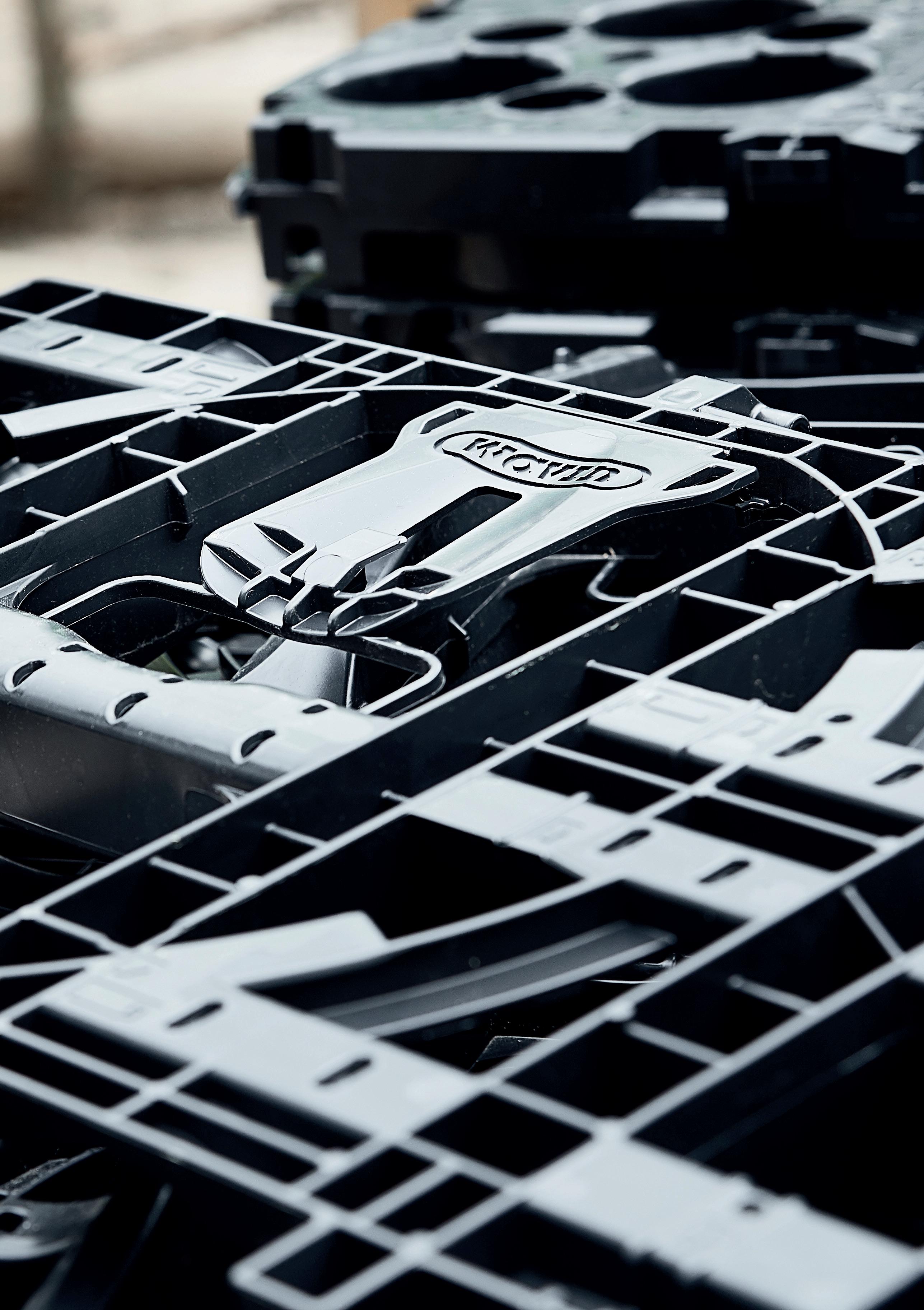

Although Naomi’s idea faces several challenges before it is suitable on a wide scale, it is an example of the type of forward thinking needed to boost urban resilience into the future. As an industry, we need to look proactively at renovating and retrofitting existing buildings, as well as applying a forward-thinking approach to water on new developments.
Forging a better relationship between urban environments and water is at the heart of Wavin’s vision and purpose: to build healthy, sustainable environments. A sustainable city, for example, is one that not only minimises its own impact on the climate, but also effectively manages the impact that a changing climate has on it.
Last summer was a stark reminder that we can no longer take water for granted, and that we are not prepared for the vicious cycle of drought and flash flooding that is set to continue. However, it also presents an opportunity to work collaboratively towards a circular-first mindset, that can be applied to the different disciplines, partners, technologies, designs, and solutions needed to build resilient, futureproof infrastructure. Civil engineers have their own crucial role to play in this transition, by beginning to consider the long-term impact of population growth and climate change on the projects they are working on.
Bringing more stakeholders to the table broadens the scope of possible intervention and helps to create connections between systems which have traditionally been viewed as independent. Waste-, rain- and tap water should all be integrated into larger circular water cycles that can be applied at building, neighbourhood, and city-level.
In this context, manufacturers have a major role to play. Sustainable Drainage
Systems (SuDS) are crucial in improving the resilience of new builds and renovations, with the latest technology designed to do just that in urban environments. Wavin’s AquaCell NG is an attenuation tank that is optimised for efficiency and ease of installation, making it a more viable option on projects with tight deadlines. Its lightweight and compact shape is also a great example of how the latest technology is designed specifically to address the unique challenges of urban water management.
Given the specialist nature of SuDS, manufacturers also have a responsibility to support in the installation of these types of systems. End-to-end product journeys such as Wavin’s StormForce take this one step further though, helping specifiers and developers throughout the whole process, accounting for regulations, site conditions, and co-ordinating on design and installation to ensure the optimum water management solution is delivered. Drainage cannot be an afterthought, which is where the latest technology, combined with design expertise, has a vital role to play in improving urban resilience.
With experts suggesting that British rivers could lose more than half of their water by 2050, the cost of not acting will dwarf that of building for the future. Effective action will transform our cities, ensuring we can use the water we have during drought events. Rather than saving for a rainy day, it’s the rainy days that we need to save. ■
Wavin North West Europe www.wavin.com/en-gb/stormwater
Martin Lambley is Product Manager, Urban Climate Resilience for Wavin North West Europe. Wavin is an innovative solution provider for the building and infrastructure industry across multiple continents. Backed up by 60 plus years of expertise, it is geared up to tackle some of the world’s biggest challenges around water supply, sanitation, climate-resilient cities and building performance.
A million construction workers say they need a side-hustle says Simon Harris

Over a million construction workers will have a second job or ‘side hustle’ if the cost of living does not fall, according to our research. A poll we undertook revealed that 55 per cent of workers said they would consider taking on a second job if the economy continued along its current trajectory. A few years ago, if you did have a second or third job, it was about improving your life financially - paying down an old credit card balance or saving for a deposit for a first home, perhaps. It might even have
been something you did to fill the time or if you were bored in your current role. Even as recently as the summer, only one in five of us had a side hustle.

Well, not any more.
The cost of almost everything has gone up, while pay has not been increasing; in real terms pay for most people has been declining. This gives people an incentive to develop extra income. Increasingly, the cost of living crisis means a side hustle is about keeping your head above water and people are relying on second and third jobs to survive. The worrying
thing is that such a huge swathe of the industry thinks they’re going to need one in the near future.
But side hustles aren’t without their costs, specifically, they impact on time to relax, socialise and unwind. These are all key to good mental health in the workplace.

Most people cannot realistically fit in another 15 hours of work every week without it impacting on their lives significantly - whether that’s driving customers, delivering takeaways or walking other people’s dogs. While we’re past the peak of the post pandemic hiring spree, the demand for construction workers is still there. Over two million people are employed in construction in the United Kingdom currently, and there are 1481 construction and property jobs on our website right nowthere is an acute labour shortage.
The worst option for construction bosses is people taking on night work, closely followed by weekend labouring. Mark Sherman, chief executive of construction firm Crondall Builders says anyone working nights will quickly find themselves ejected from their day job: most people will get burnt out pretty quickly without a day of rest. This could contribute to the increased number of construction businesses reporting an outbreak of ‘quiet quitting’. Sherman has noticed a difference between the generations, too. He says Millennial workers are more likely to moonlight with tech-focused white-collar work - typically dropshipping businesses - while older workers look at more manual work. He’s happy for entrepreneurial workers to set up online shops as a side
hustle given the limited impact he sees on his employees’ productivity and the cost of living crisis.
This is an interesting take. Workers tell us they want more support from employers and government to help them manage the cost of living crisis - that’s according to a multi-national survey we undertook recently. Indeed, half of British workers (53 per cent) place primary responsibility on governmentwhile a third of Australians (37 per cent) and only a fifth (21 per cent) of US workers think the same.
Despite this, 81 per cent have told us that they haven’t received any monetary perks from their employer to assist with the cost of living crisis. The volume of workers in the construction industry looking at taking on a side-hustle of some kind suggests this isn’t driven by a lack of self-reliance, however. There is a big opportunity for employers to step up and those who are offering an above-average salary along with an impressive benefits package and flexible work policies are going to attract interest from top talent. It is key that companies review their benefits to reflect the current market. From monthly cost of living pay boosts to one-off payments and subsidies for daily costs like travel and energy, candidates want employers to counter rising costs with attractive offers that will help them to navigate the choppy waters ahead.
I’d recommend that anyone thinking of taking on another job, should evaluate their current role first. While you could launch a dropshipping business, for example, fairly quickly and without having to invest too much of your own
money, it’ll be time-consuming and it’s unlikely you’ll see instant results. I’d suggest asking yourself if you think you are getting paid enough to cover the rise in living costs? If not, can you increase your salary through pay negotiations, upskilling or, ultimately, looking for a new job with a pay rise? It’s important to consider your current job before you start trying to squeeze in another. Working too hard for too long is going to have a negative impact on your work-life balance, your wellbeing and your mental health. And I would suggest that this is not great news for workplace health and safety either. If you are absolutely shattered when you start your week, you could well end up making mistakes. Imagine the consequences on a building site. ■
Randstad UK
www.randstad.co.uk
Simon Harris is Director of Construction and Property at Randstad UK. Randstad is the world’s largest provider of recruitment and HR services (by revenue, gross profit and market share), employing more than 40000 people in 5,000 locations. In 2021, it generated revenue of almost €25 billion across 38 markets. Last year, Randstad helped two million people find a job.
“
“
Workers tell us they want more support from employers and government to help them manage the cost of living crisis


The chairman of one of the UK’s largest independent timber companies, Illingworth Ingham, talks agility, supply chains and mastering the North West

Simon Graveley is the Chairman of Illingworth Ingham (M/cr) Ltd. Founded by his great-grandfather in 1929, the company is in its fourth generation of family ownership, which in time will lead to a fifth with Simon’s children now also working at the organisation. Based out of its manufacturing facility in Trafford Park, Illingworth Ingham is one of the largest independent timber
companies in the UK and specialises in the production and profiling of hardwoods and softwoods. Among its bespoke offering, between both small and larger runs, the diversity of Illingworth Ingham’s product range extends from more affordable white woods to more high-end options, such as walnut. Through a separate arm of the business, Illingworth Ingham also supplies the North West of England through its six timber merchants.
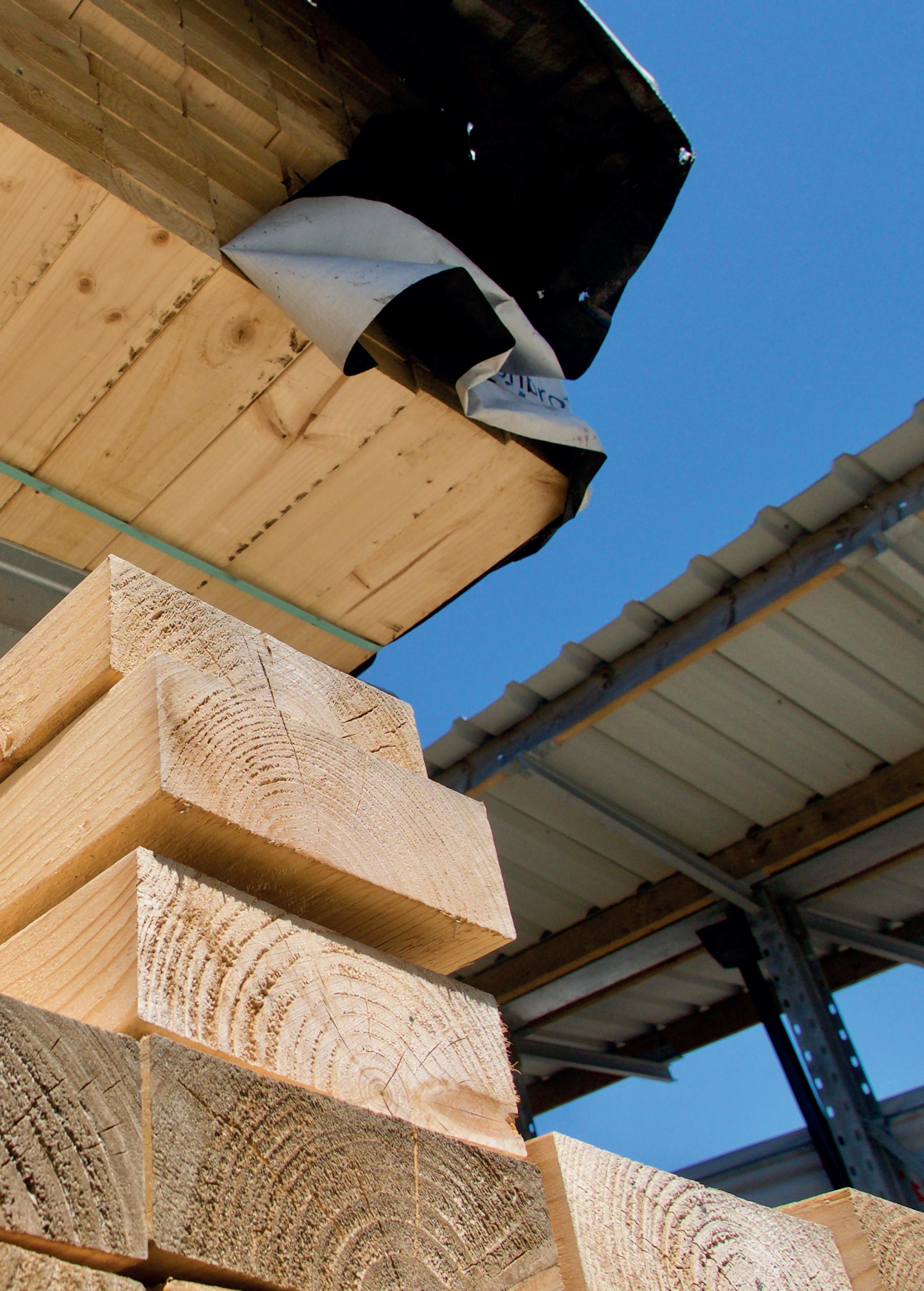
“Our ethos is: everything we’ve got, we own,” Simon opens. “We deliver predominantly with our own fleet of vehicles from the Midlands up to Carlisle, Hull, and everything in between; and as far down as South Birmingham, which is our core region. We even deliver nationally on request. We employ around 130 people who we generally train onsite, through our internal training scheme, in everything from machinist roles to yard operatives. Even for the positions that need external bodies to certify, we like to think that our teams already know the content when they take offsite courses.

“We turn over around £29 million a year and our fleet is made up of nine vehicles that range from 28 tons down to 12. I like to think we’re at the Rolls

I like to think we’re at the Rolls Royce end of the market, but that’s not to say we don’t stock lower-price items as well
“ “ “
Royce end of the market, but that’s not to say we don’t stock lower-price items as well. In today’s age, I think that people appreciate our independence, as everybody is getting bigger and bigger. Meanwhile, we continue to grow within our niche of being by no means small but still a family run company with the personal touch. Growth is a key element, high on our agenda, but really it’s up to the next generation now. I’m 60 and although I’ve still got the drive and enjoyment to power the Illingworth Ingham machine, at some point it will be time to pass the baton.
“In continuing the analogy, I always say that the mill’s tool room is the company’s engine,” Simon adds. “It
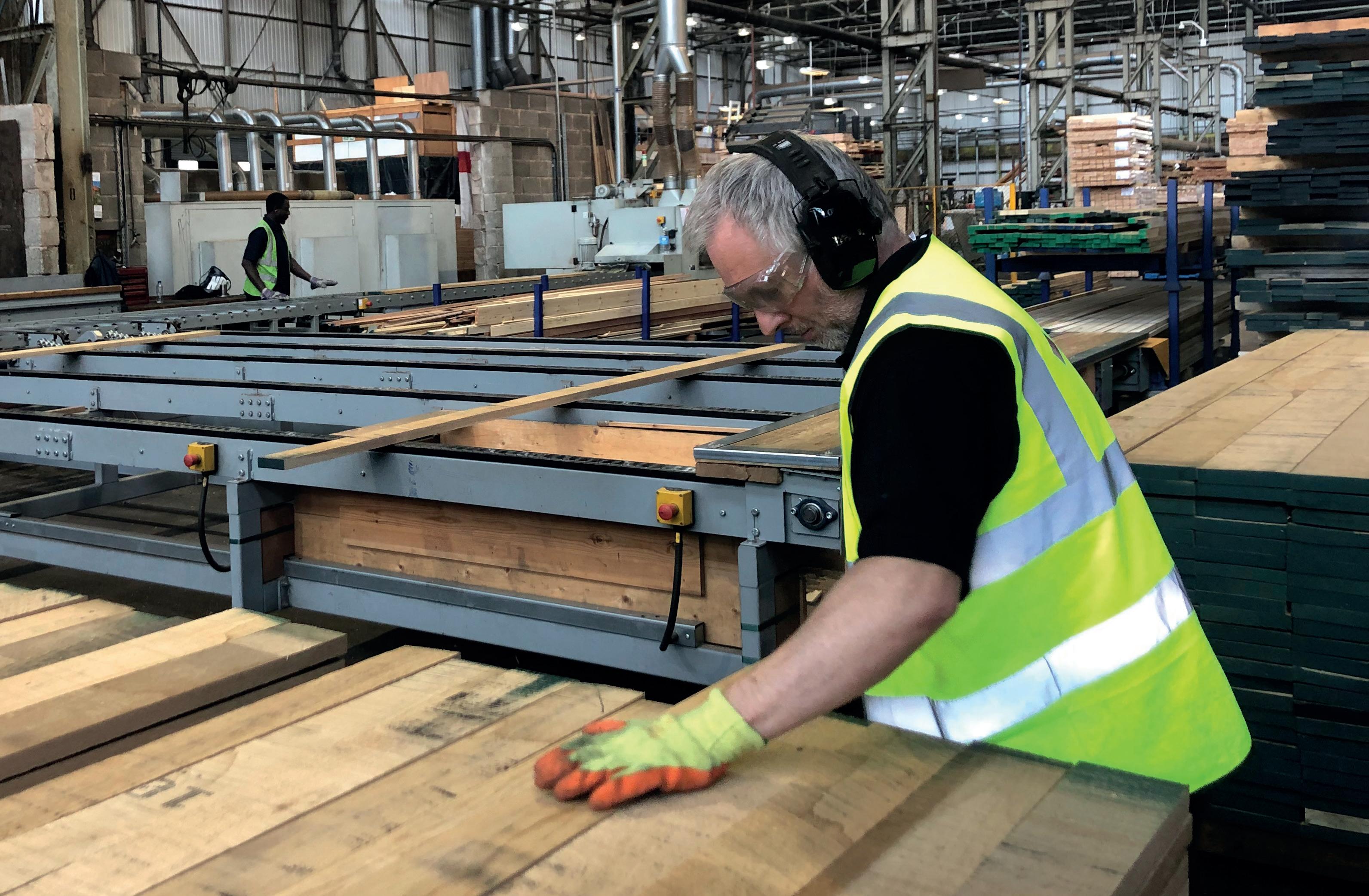
features three standalone grinders, an automatic grinder that feeds its eight molding machines, two multi-rip saws, two resaws, two crosscut saw lines, two priming facilities, a treatment plant and a tailor laminating machine. The internal extraction system is designed to shut off whenever it’s not in use, to save on energy, and the site’s roof is fitted with a 200 KVA solar power system too. Furthermore, we have replaced all of the original lighting with LEDs and upgraded all of our representatives’ cars to electric vehicles. We are doing everything we can to keep our costs and emissions low and would like to extend our solar at some point in the future.”
In commenting on Illingworth Ingham’s tremendous growth and popularity within the market, he states:
“Besides our independence, people appreciate the caring and personal nature with which we deal with our clients. We don’t say no, and we will always adjust our services to meet our customers’ requirements. This agility comes from being the size that we are. Our quality is second to none compared with elsewhere in the industry, which is resultant of our constant stream of reinvestments in the latest technology and processes. As a bespoke company, this is not always easy, but it clearly works really well.
“In recent years there’s been a continued high demand. We’ve had a good hand on managing our incoming stock and the company’s productivity has been steadily high. Business will always be a challenge, with whatever ongoing external factors you have to

deal with, but it’s all about how you mitigate these issues and keep things running. We are very much on the ball with that, we don’t have any back offices directing us, so everything we do is always what we feel is right.
“Our supply chain relationships have also been crucial in this,” Simon continues. “We are a well-established business that maintains strong relationships. Through the pandemic, everyone was transparent in supplying us to the best of their capabilities, generally within a percentage of the volume that we requested, because they know that we’re a good customer. I don’t like this just-in-time, open-to-themarket method of importing timber, but, unfortunately, gone are the days of ordering the boatload that you want, and it being delivered directly to your yard.”
The regional arm of Illingworth Ingham was established around 40 years ago and comprises six timber merchants based strategically around the North West of England. The specific areas include Hyde, Stretford, Stockport, Clitheroe and Macclesfield, which has two separate yards, as Simon details further: “Our satellite locations are designed to supply everyone; from developers, and builders to the general public. The smallest employs five people and the largest 12 and they distribute all of their materials locally with their own fleets of vehicles. Where we, at Trafford Park, don’t stock certain items, such as carcassing and sheet materials, they do. They do the whole lot as timber merchants.
“We have the North West really well covered. The branches have done exceptionally well. In fact, the Builders’ Merchants Awards recognised us as Timber

Merchant of the Year in 2022. Our branches successfully run their own operations within the wider business. We like to give them the flexibility to do their own thing and view them as being independent teams while upholding the Illingworth Ingham ethos. Head office is there for support when needed. The only condition is that we ask them to purchase all materials that we already stock in house directly from Trafford Park, but otherwise they are free to buy from the open market, particularly through the H&B buying society. Waterloo Timber in Clitheroe was the latest edition, but we should really be looking to move further north next. If there’s an obvious path for future growth, it’s in purchasing more branches and further investment in our production facilities.” ■
www.iitimber.co.uk


In the earlier days of western industrialization, during the 19th century, when the widespread use of concrete had begun to grow across the US and northern Europe, we, as a species, must have thought that the future was finally in our hands. Little did we know that with the evergrowing concerns of how to tackle global warming and the irreversible damage we stand to inflict upon our planet, industries far and wide would be looking for solutions today.
Stora Enso is one of the companies that can provide genuine solutions to slow the damaging effects of climate change whilst maintaining our lives as close as possible to the ones we already know. Stora Enso is a leading renewable materials company and global provider of products such as packaging, biomaterials, paper and wooden constructions, as well as one of the largest private forest owners in the world.
Founded in 1998, after the merger of Swedish company, Stora Kopparbergs Bergslags Aktiebolag, and Finnish company, Enso Gutzeit, the business possesses a wealth of intergenerational knowledge, which it combines with modern technology and youthful ambition to deliver some of the world’s most ground-breaking solutions in terms of the future of construction. In recent years, its Wood Products Division (WPD) has been building momentum, and all it needs now is some effective education in the construction industry, so planet earth can start to reap the benefits.
Lars Völkel, Executive Vice President and Head of Wood Products, explains further: “As a company, our primary focus is to provide alternatives to fossilbased materials such as concrete, plastic and steel. We believe that everything made from fossil-based materials today can be made from
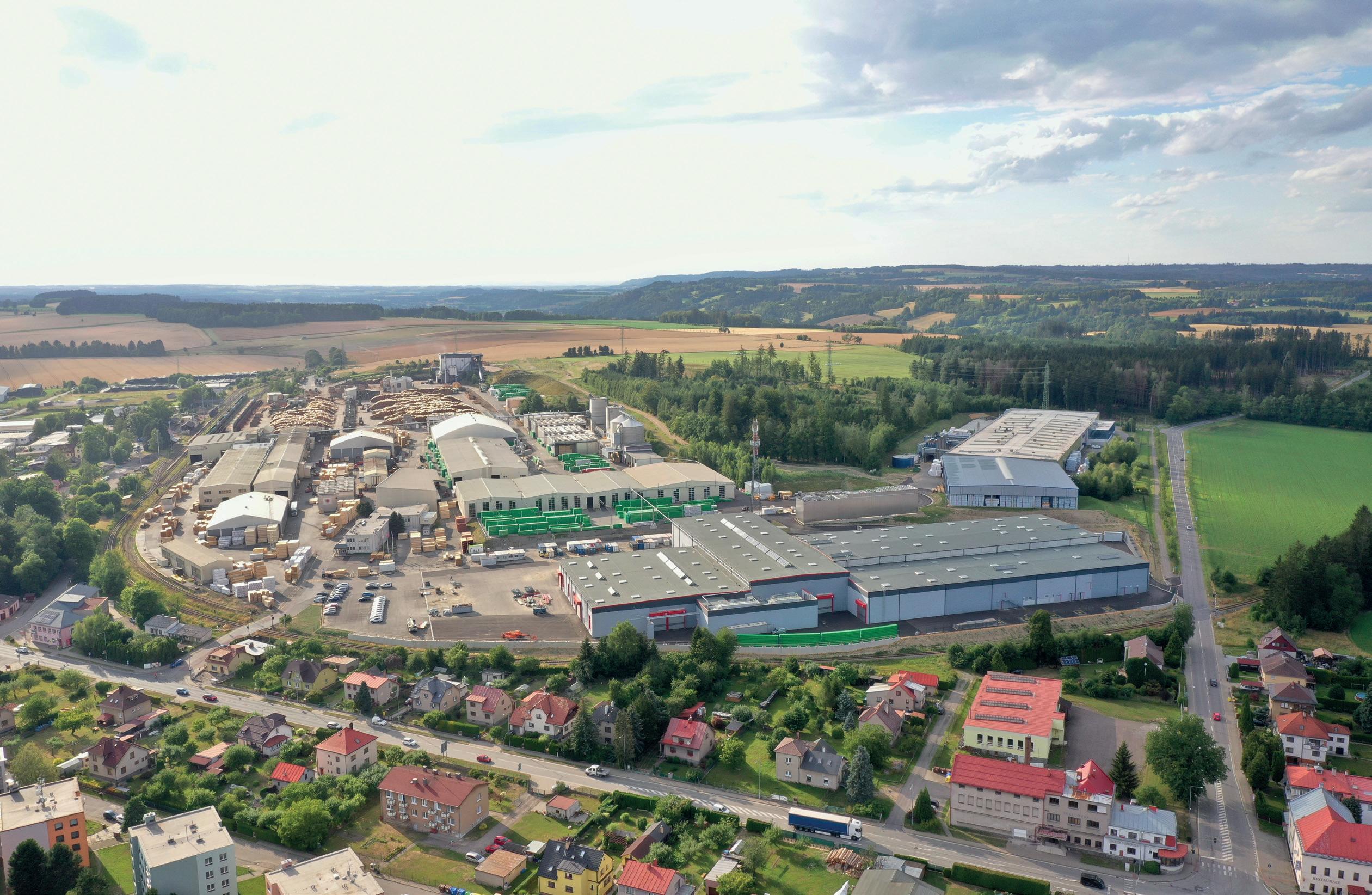
a tree tomorrow. Under my division, specifically, we adjust that scope to grow wood as a building material. The WPD’s competitors, such as saw millingand timber companies, are not found in our industry. Our main competition actually resides within the concrete and steel manufacturing industries, but, fortunately, we have the upper hand.
“The construction materials that we rely on are far more sustainably sourced and far better for the environment. By replacing one cubic meter of concrete with wood, you can save a tonne of CO₂, whilst substituting the same volume of steel with, again, wood, you’re looking at two and a half tonnes of CO₂. These substantial savings in carbon emissions are the biggest competitive differentiator we have within our industry. Our comprehensive range of products for timber construction makes us one of the global industry leaders.
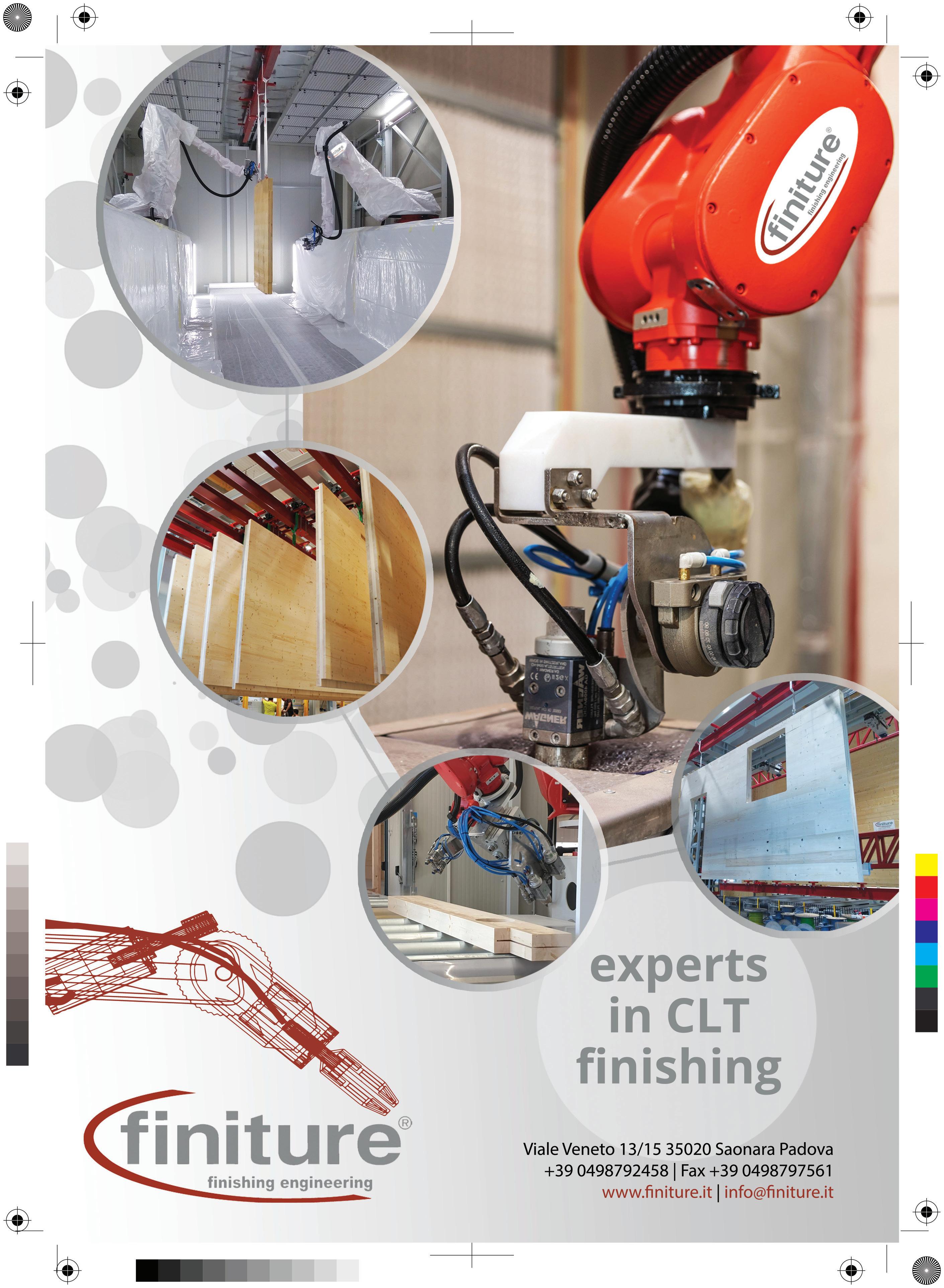

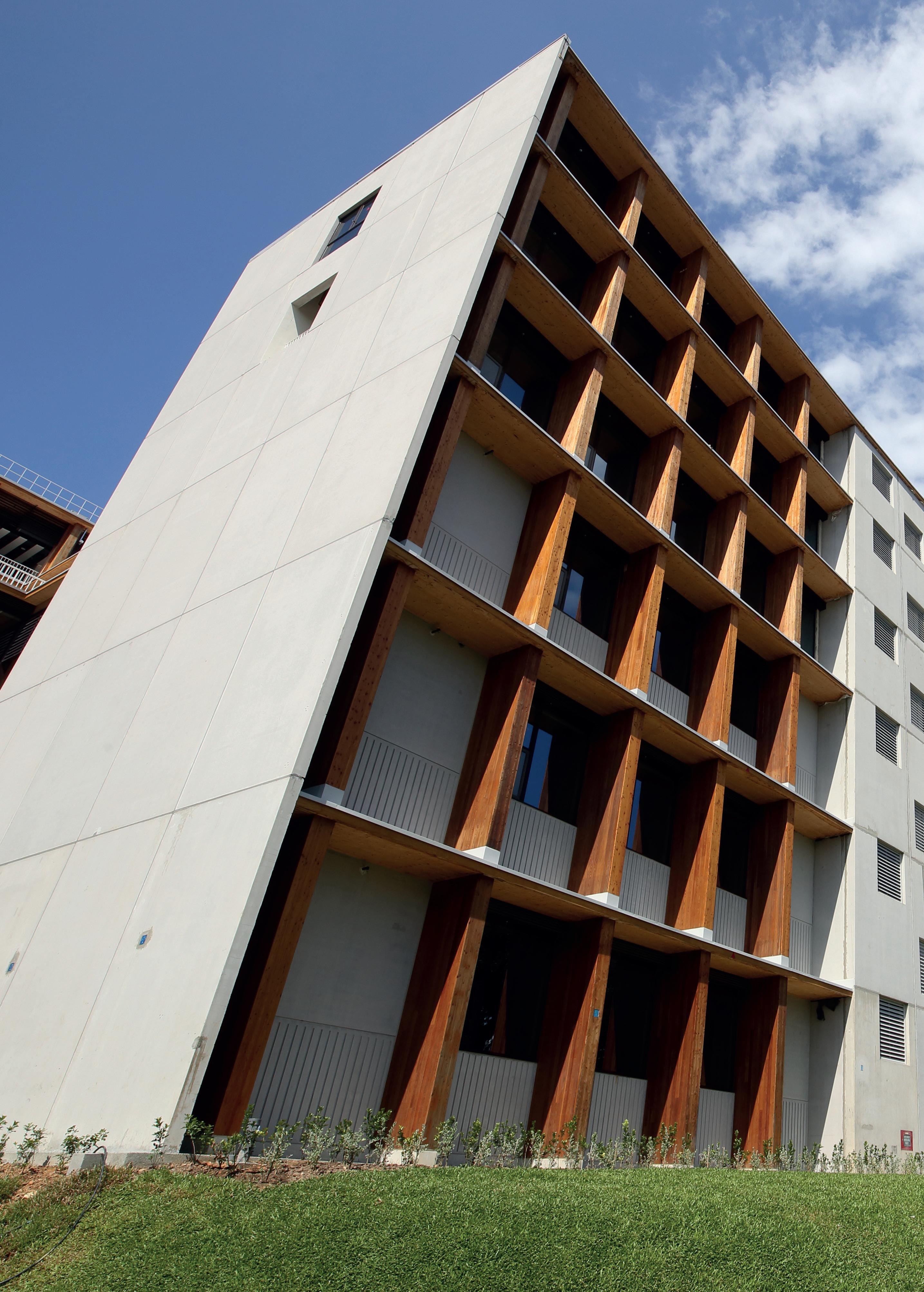
“Alongside the likes of cross laminated and solid structural timber, we also offer Laminated Veneer Lumber (LVL), all of which are complemented by our experiential expertise,” he continues. “We can recommend the best timber solutions for any specific building project, no matter from where in the world our customer hails. Our global positioning bolsters our ranking as an industry leader, given that our competitors only operate on regional, or even smaller, networks.”

In terms of the business’ production facilities, Stora Enso currently has
16 sawmills located across Europe. This gives a total timber capacity of almost six million cubic metres and over two million for its engineered product range. This includes four Cross-Laminated Timber (CLT) mills, with a combined capacity of more than 410,000 cubic metres and a dedicated LVL site that can produce over 80,000 cubic metres. The total of which, makes Stora Enso the largest mass timber construction company in the world. These great strides have aided the business in developing its latest launch SylvaTM by Stora Enso.
We can recommend the best timber solutions for any specific building project, no matter from where in the world our customer hails

Sylva™ by Stora Enso is a building kit in massive wood comprising pre-manufactured, custom-made applications delivered justin-time to the building site. The solution enables faster construction, reduced costs, more efficient use of raw material and less emissions than concrete or steel. Essentially, a kit that provides everything a builder needs to create a modern, sustainable, low carbon wooden structure. As Lars details further: “By delivering prefabricated, easyto-install components to the construction sites, we respond to the increasing trend of off-site construction while offering a solution to the industry’s labour shortage.

SylvaTM by Stora Enso is a game-changer for making this happen, replacing concrete and steel with renewable wood to enable a circular, low-carbon construction process.

“There are many reasons why we still only see around 3 per cent of buildings in Europe utilising wood, especially in multistory or commercial structures. Yes, building regulations are complex, but a key factor is the lack of experience among European traders. As one of the market leaders, we see it as our responsibility to share our knowledge within the construction industry and further support our peers with not only raw materials, but our digital tools as well.
Working with wood is far simpler than many think, as we can deliver prefabricated, yet bespoke, walls, floors, roofs and stairs, as a kit, to the building site. We still have much work to do on the educational side, and we will not just sit and wait for others to do it.”
In furthering its mission, Stora Enso invested EUR 79 million in the build of the fourth of its CLT mills earlier this year. The new production line is situated in Ždírec in the Czech Republic, integrated with the existing sawmill, and will be launching its full-scale commercial production in early 2023. Once at full capacity, this location will be one of the world’s largest and most modern facilities, perfectly situated near some of the key markets in central Europe. Saki Boukas, Senior Vice President of Sourcing and Logistics, cites the on-time and on-budget completion of the state-of-the-art mill as a proud achievement for the company.



Stora Enso invested EUR 79 million in the build of the fourth of its CLT mills earlier this year

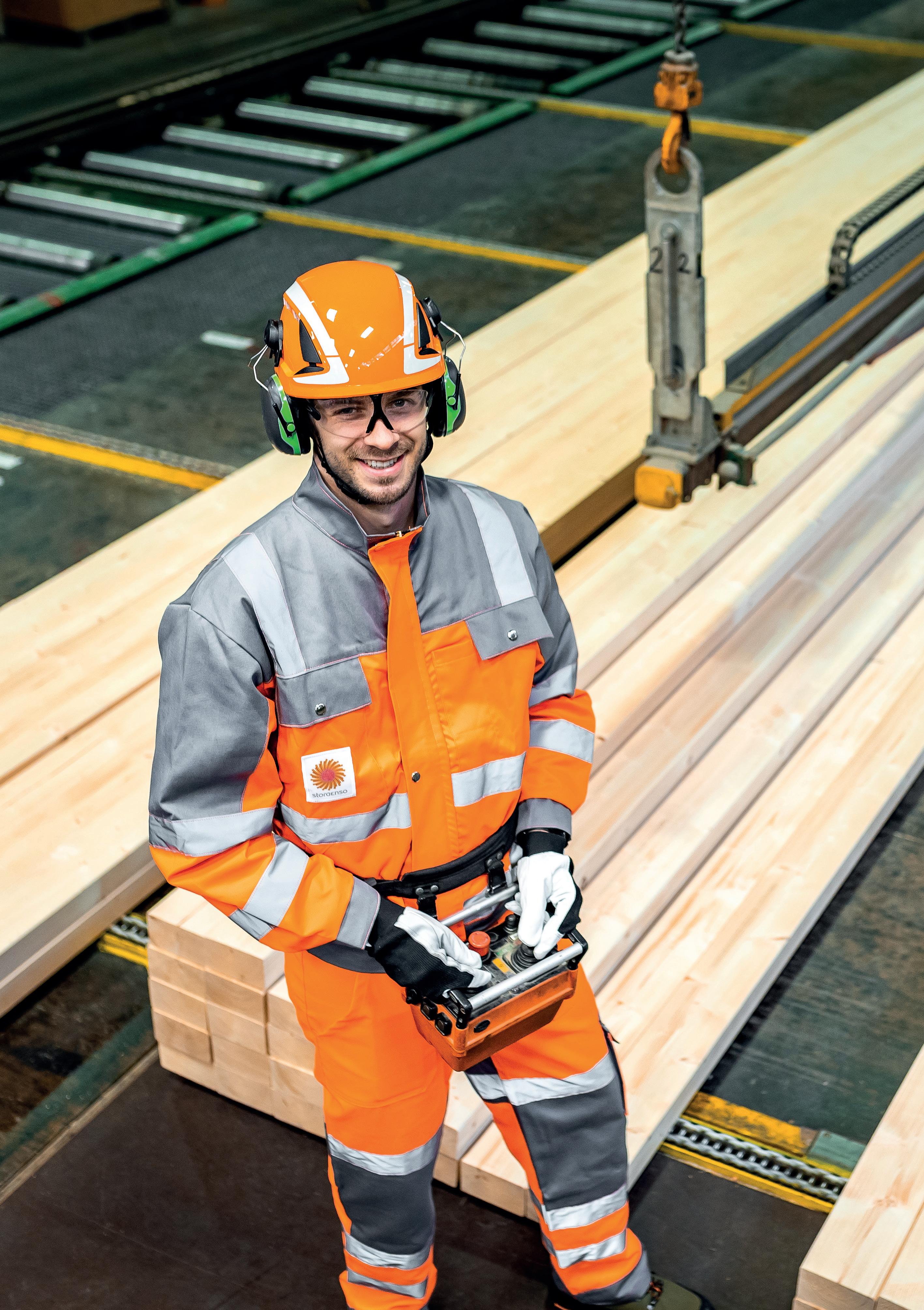
Elsewhere in the world, last year, Stora Enso undertook the project to construct one of the largest wooden buildings in Asia – the Nanyang Technological University (NTU) in Singapore. The 42,000 metres square structure spans six stories and incorporates the company’s crosslaminated components for floors and walls, and its glue laminated timbers for beams and columns. The construction challenge was almost matched by the necessary production and delivery of 7700 cubic metres of CLT, but Stora managed to achieve both.
“Besides the environmental gains of our employment of wood in the structure,” Lars elaborates, “our approach offered our partners a number of other improvements as well. The construction site’s surroundings enjoyed a vast reduction in noise, dust and vibrations and required far fewer personnel – a huge bonus to the construction industry in Singapore. With the project being a

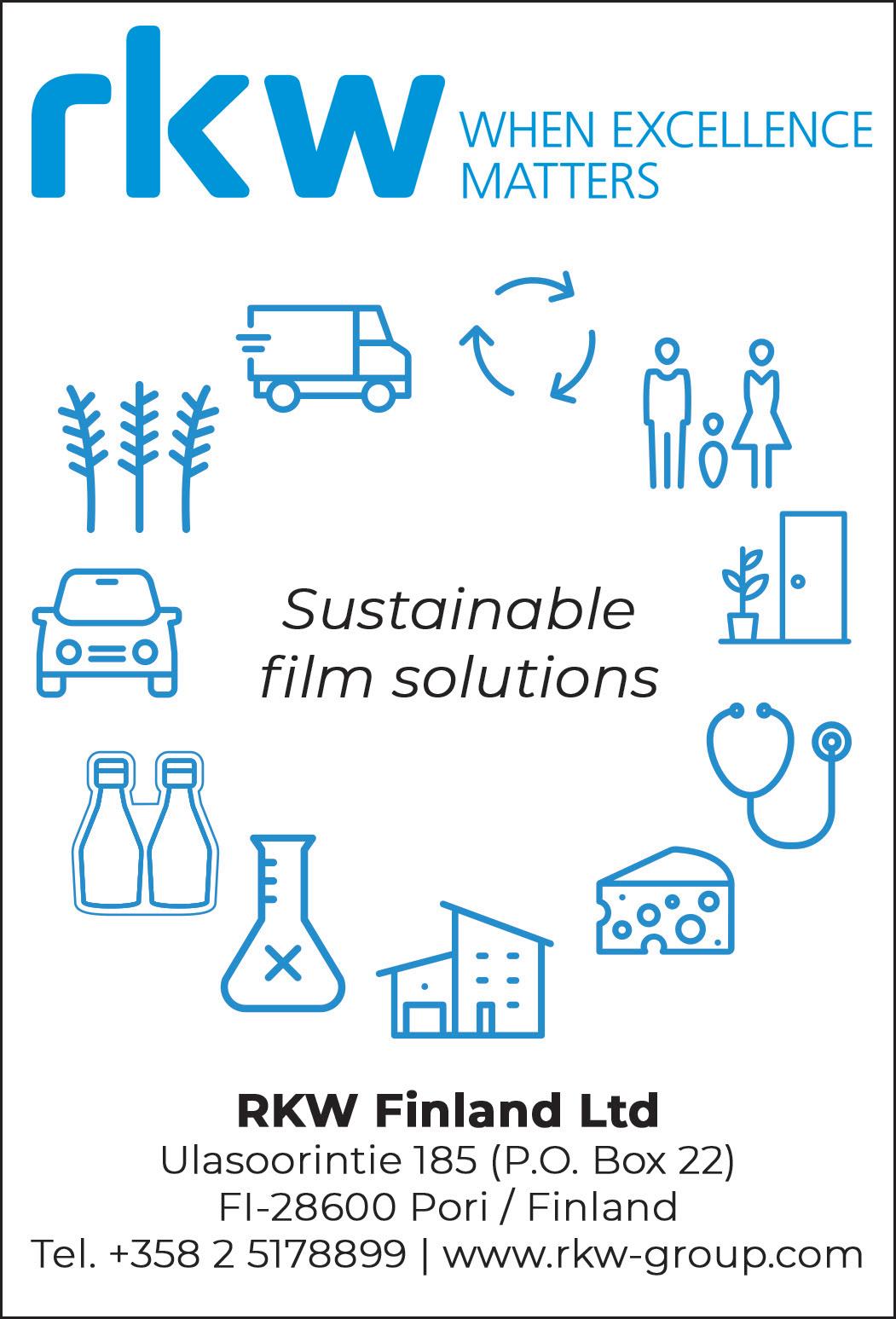
university building, future students will experience the proven benefits of studying in a biophilic environment. The organic eyeline provided by the wooden walls and beams naturally lowers your heart rate, which is conducive to boosting your concentration, learning and overall performance.”
Lars concludes: “We regrow more trees than we harvest in both Finland and Sweden and have set a target for 2050 to be completely regenerative in everything we do. Any company that no longer cares about sustainability or thinks it’s possible to continue by hiding behind empty promises, is wrong, in my opinion. Not just from a societal point-of-view or business model, but on a planetary stage. It’s no longer a question of if you want to be sustainable, but more so, how quickly can you be?” ■
www.storaenso.com/en/


We regrow more trees than we harvest in both Finland and Sweden and have set a target for 2050 to be completely regenerative in everything we do
“ “ “


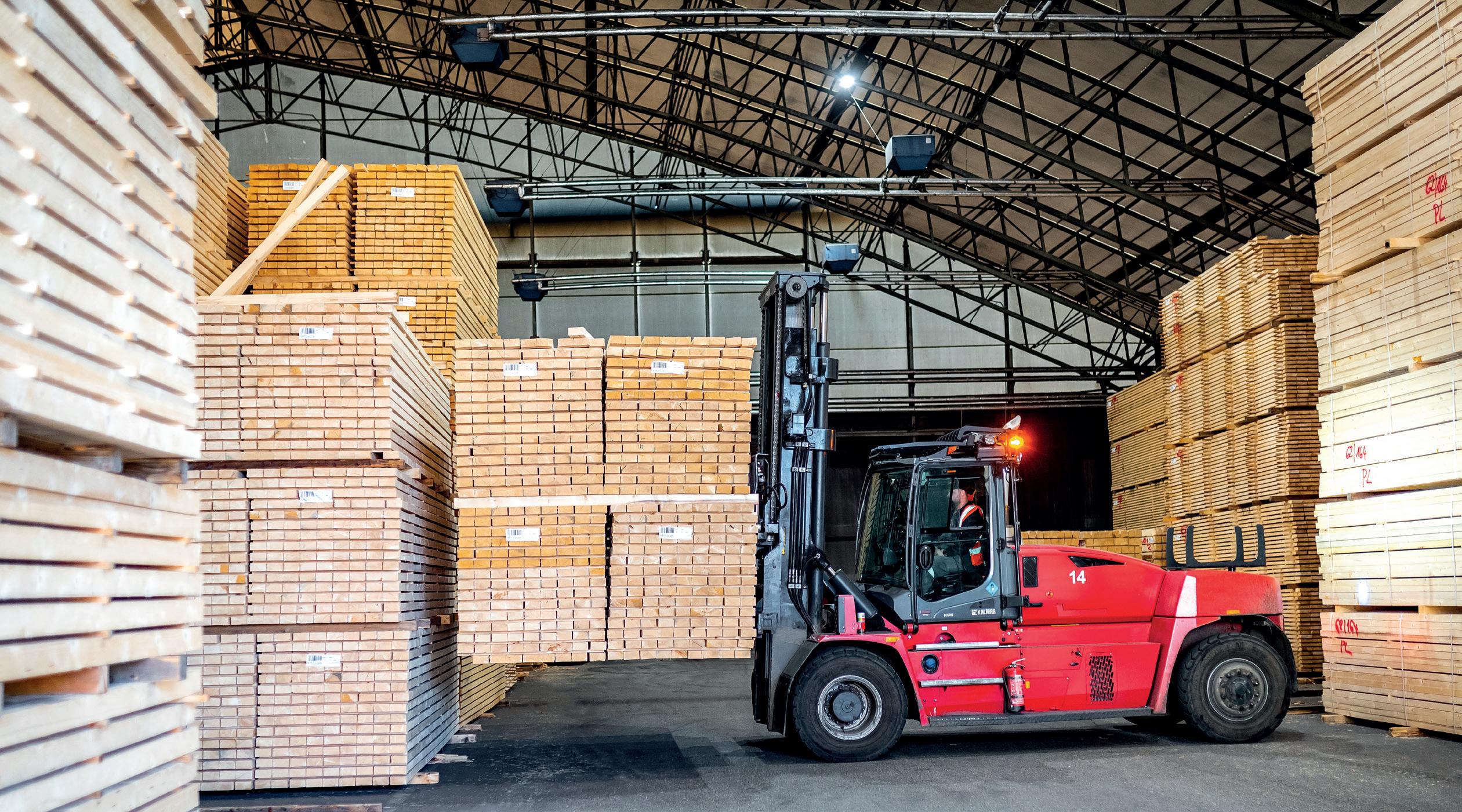

Established over 45 years ago, Arkay Windows started as a trade company, supplying uPVC products to builders and small window companies in North London. “In 2007, we began manufacturing aluminium systems to satisfy a growing demand for high-end glazing products from our existing customer base,” shares Raju Radia, the Managing Director. “We then began manufacturing Aluk products from a 9000-squarefoot site in Watford, and chose to stay within easy reach for our customers.”
The aluminium side of the business quickly took off, and in 2010, it added Schuco products to offer a greater choice to Arkay Group’s customer base, while serving increasingly brand-conscious end users. “The need for greater factory capacity to keep up with demand led us to move to a 17,000-square-foot facility in Watford Business Park in 2013, but we soon hit capacity once more. Two years later, we moved to a larger facility on the same road to allow for future growth.”


In 2016, Arkay Group released its first trademarked range of products, incorporating custom extrusions such as EdgeGLIDE, InfiniGLIDE and InfiniLIGHT. “This coincided with our first ever trade show appearance,” Raju explains, “and saw us quickly expand to serve new areas of the UK. In a short space of time, we had begun to outgrow our factory due to the success of these new products. So, in 2018, we added a second 22,000-square-foot facility nextdoor, dedicated solely to manufacturing.”
The most recent milestone for the business took place in 2022, when Arkay Group completed the acquisition of Quantum Windows Ltd in Northamptonshire. This added an 80,000-square-foot production facility to its own infrastructure, and gave the company a greater presence in the uPVC market, and in a new area of the UK.
“We are mindful that different clients have different preferences and budgets, so rather than focus on a single suite of products as many companies do, Arkay Group develops and maintains an extensive offering of windows, bifolds, sliding doors, minimal doors, and rooflights, with multiple brands and price points for each product type. “This leaves our customers free to take on a variety of work in the knowledge that we will have solutions to achieve the aesthetic and performance required of the project; all under one roof.”

have the option to price and order the entire product range, in an instant
To provide this expansive catalogue, Arkay Group invests heavily in software. Customers have the option to price and order the entire product range, in an instant, through the cloud package, backed up by strong marketing, technical and showroom support. “We offer homeowner sales leads to our partners, as well as featuring them on our website and creating bespoke brochures for them. We also have a brand-new showroom with our full product range on display, where our customers are welcome to bring their clients to see and touch the products in person. This removes the obligation for customers to be marketing experts or have every product in their own showrooms, so they can focus on what they do best.”
Group-wide, the business currently has a combined factory area of 150,000 square feet, and more than a dozen CNC centres for cutting and machining. The entire workflow from initial enquiry through to purchasing, manufacturing and dispatch is driven by its bespoke in-house software. The software also monitors and provides metrics for every single stage of the process to assist in identifying issues ahead of time and bringing down inefficiency. “With changes to building regulations in June, 2022, we became aware of a need for a sliding door, which ticked all the boxes for a modern aspirational glazing product – extremely slim lines, clean square appearance, attractive colour-matched hardware, reasonable price point – but which was simple for the trade to install and crucially could meet the 1.4 w/m2k u-value requirement, which most existing products on the market struggled to do.”


Raju then highlights that launching the EdgeGLIDE+ six months ahead of the regulations coming into effect proved invaluable in getting the company up to full manufacturing speed. “Customers have been extremely pleased that the same product they have been installing all year will now comply with the requirements of new projects with no changes needed and nothing to re-learn. This is not just limited to the EdgeGLIDE+. All of their double-glazed standard windows now meet the 1.4 w/m2k u-value requirement, making it easier
for customers to meet regulations without an increased price tag.
“Tying in with that, we have recently launched an opening version of our InfiniLIGHT flat roof light, opening up the possibility of motorised ventilation or even roof access with the same frameless aesthetic of the classic fixed InfiniLIGHT,” he shares.
Considering its impressive history, it comes as no surprise that Arkay Group is gearing up for a successful year ahead. When it comes to the company’s 2023 strategy, Arkay Group is focused on improving its internal

systems. “Our continuous development team has produced loads of exciting new innovations over the last 12 months to improve pricing speed, processing speed, accuracy of tracking items through the factory, optimisation of deliveries and much more. Our goal as we implement these over the coming year is to provide the best possible customer experience and give our partners a competitive edge.
“We will also be launching several new products to satisfy the requirements of the 2022 building regulations. Day-to-day, having Quantum Windows’ experienced team and facilities behind us will allow us to serve a wider area of the UK with more effectiveness and less waste as we amalgamate our logistics and infrastructure. The acquisition of Quantum Windows was based on its excellent reputation and production split capacity, which complimented that of Arkay Windows,” Raju says.

Sustainability is also integral to the company’s operation. “All of our waste profile is collected and recycled. Waste uPVC can be recycled up to ten times and goes into a closed-loop recycling system where it is used to create new uPVC windows. Aluminium can be recycled infinitely, and this process uses 95 per cent less energy than producing new billet. Aluminium is therefore one of the greenest construction materials available.
“We are currently developing the infrastructure required to create a paperfree production flow from beginning to end, with a fully electronic quote and order processing system already in place and sign-on-glass for deliveries scheduled for spring 2023. We are also working with our largest hardware supplier to replace branded packaging with recycled, unprinted and biodegradable cardboard packaging, and where possible, using a bulk packing method instead of individually wrapped items.
“Our ambition is to be a significant industry leader in the coming years, focussing on maximising efficiency, offering the best possible customer experience and improving on key metrics such as OTIF. If we are able to succeed in these areas, I feel organic growth will naturally follow and this has been the key to the company’s journey so far,” Raju says.
Our ambition is to be a significant industry leader in the coming years
In conclusion, Raju expresses that the overall success of Arkay Group is owed to the network of people and relationships that keep the business going. “The culture of the company is our most important asset and the biggest ingredient in our growth. Maintaining service during periods of growth is always an extremely difficult challenge, and having the right people in place and with access to the information they need to work effectively is key. Going forward, this will be something that we strive to maintain.
“In the same breath, we also believe in working closely with our supply chain and appreciate the challenges they have faced along with everyone else in our industry over the past two years. For a supplier relationship to operate through such turbulent times requires a partnership approach, and with most suppliers, this requires us to be in constant communication at all levels of the business.” ■





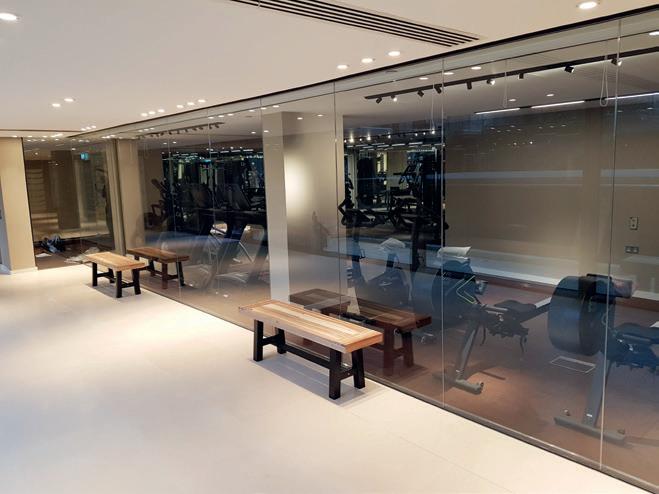

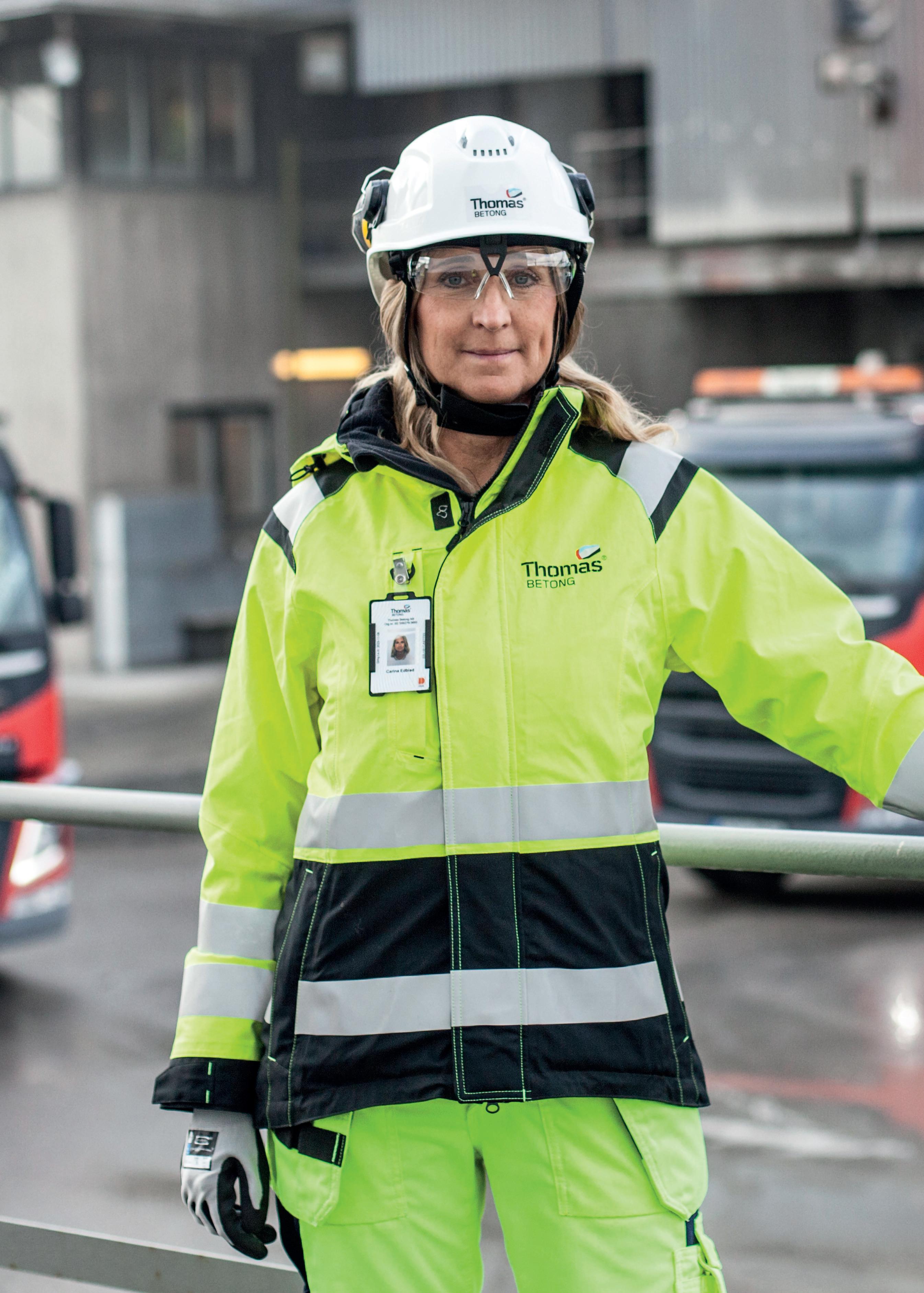
In 1955, the long-standing, familyowned company AB Färdig Betong was founded by Martin Thomas, in the form of a single factory in Karlstad. Martin opened the business’ headquarters in Gothenburg two years later, where it still operates to this day, to be closer to the epicentre of Sweden’s construction market. He used this base to expand the company over the following decade, vastly increasing its geographical footprint by acquiring a great deal of the competition.
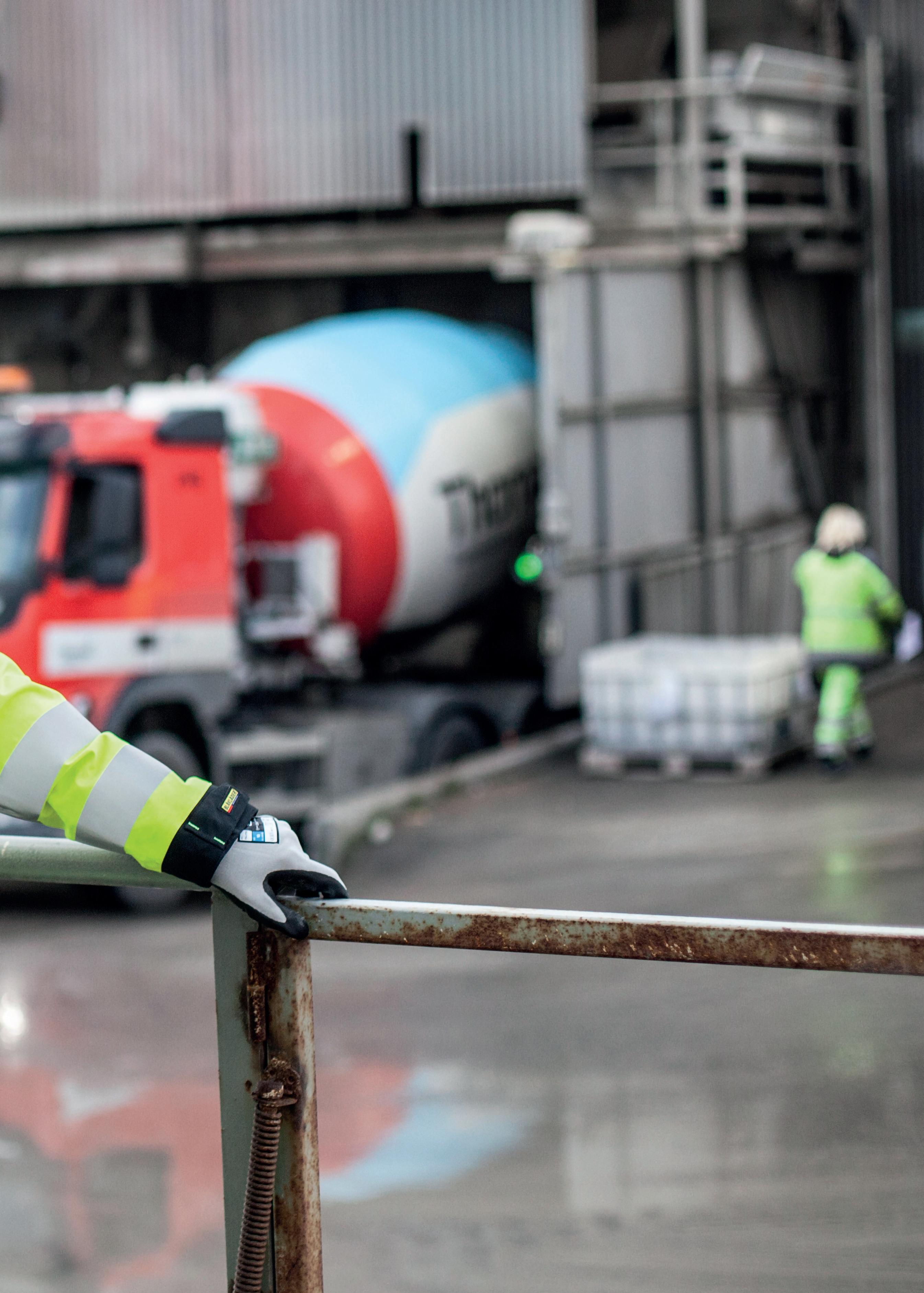 ◀ Carina Edblad, Chief Executive Officer, Thomas Betong
◀ Carina Edblad, Chief Executive Officer, Thomas Betong
This approach set the tone for the run up to the millennium, seeing the company expand into Germany in the 1960s, the US in the 1980s and Poland in the 1990s. Today, the company is known as Thomas Betong and is a part of Thomas Concrete Group AB. The Swedish Group is still owned by the Thomas family and boasts four prefab facilities and 160 concrete factories across the world. The group prides itself on the production and distribution of highquality, ready-mix concrete for both commercial and private customers, and measures its success by the added value of its customer service and technical expertise. Carina Edblad, Chief Executive Officer, details Thomas Betong’s motivations a little further: “First and foremost – we are the concrete specialists. We are entirely focused on concrete and our goal is to be perceived as the best in the industry. This is reflected in everything we do and the people that we employ, as we look for those similar to ourselves, with ambitious profiles. Naturally, as an industry leader, we place huge importance on the development of newer technologies and products.

“Research and Development (R&D) is a crucial part of the business. Our founder was a real entrepreneur and instilled his passion for R&D into the foundations of Thomas Betong. Our inhouse professors work closely with several universities and we even have funding programs to support development outside of the company, due to our involvement with a number of exterior associations and corporations.
“For many years now, we have been developing concrete products with lower carbon footprints. These are available across the entire group,” she continues. “However, it was the Swedish sector, which I manage, that pioneered these products in the market. Ten years ago, we were the first and only manufacturers in the country to be working on environmentally friendly alternatives, which the markets have refused to forget, despite our competitors attempting to jump on the bandwagon. The knowledge that we have obtained over the last decade is truly invaluable, and it’s clear to see by the continuing reductions of carbon in our concrete. It’s not possible to produce all concrete without cement, which would be the ideal, carbon-free answer, but it can certainly be done in parts.”
“ “ “ “
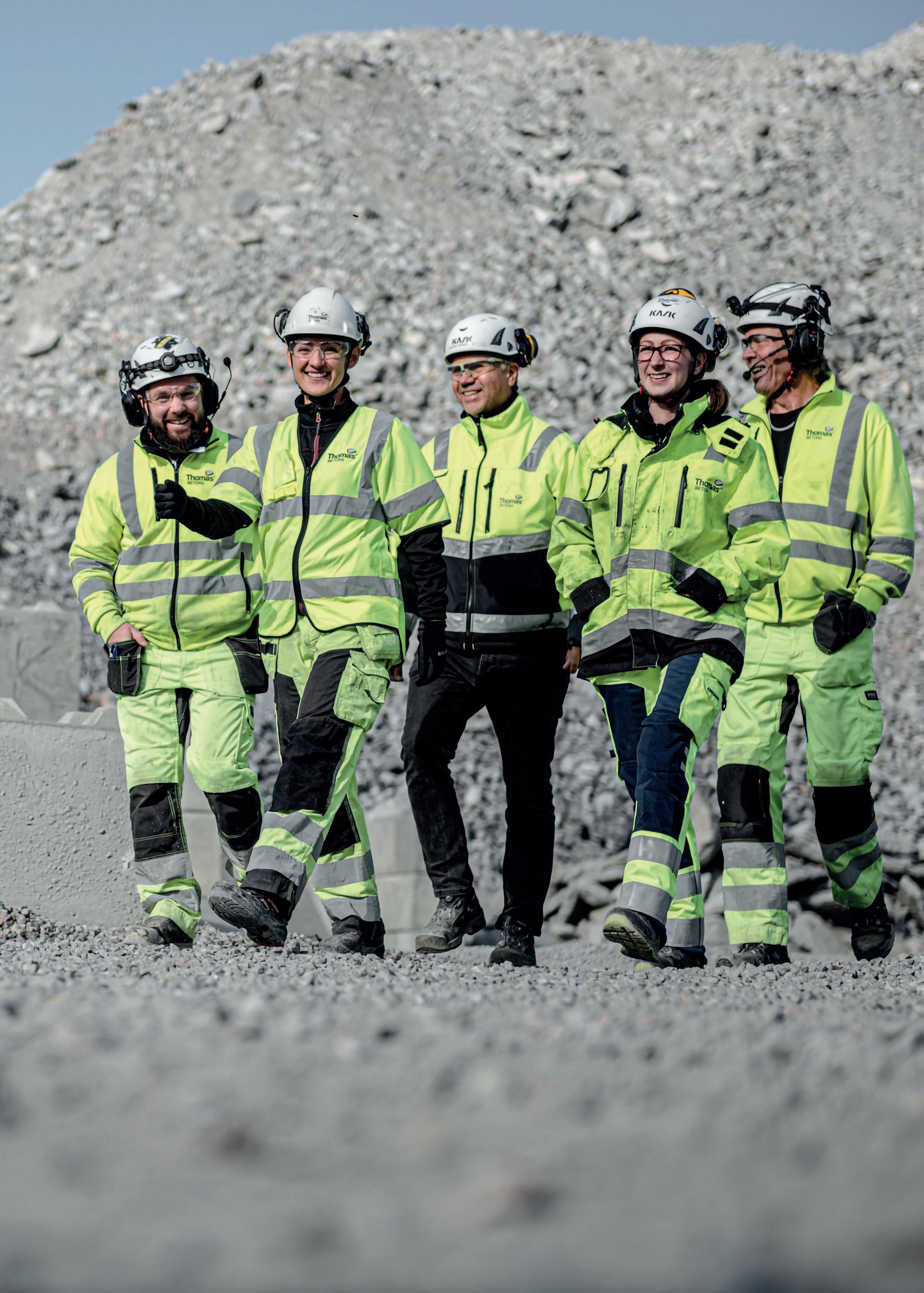
The past is a true point of pride for Thomas Betong with its historic achievements and rich heritage, both resultant of almost 70 years of family-ownership. The business is proudly independent, which is a rarity in these modern times, unlike its major competitors that are mostly large cement manufacturers. These companies attempt to dominate the concrete and construction industries, in the hope of achieving monopolization, whereas Thomas Betong confidently sits in the middle.
Without links to either cement or construction, it can focus on concrete as its absolute priority. This is part of the reason it’s one of the industry’s leaders, along with the agility granted by its ownership status.
The family-feel is extended to the business’ most critical means to success – its staff. “The people are the most integral element of Thomas Betong. Our investments into our plants and technology are worthless if we do not have the correct employees to captain them to fruition. Through careful recruiting, regular training and motivational incentives, all under the guiding arm of strong leadership, we have created a successful working culture. As a management team, we use what we call a strategic platform, from which we can observe what it is to be a member of our company, to really give them what they want.
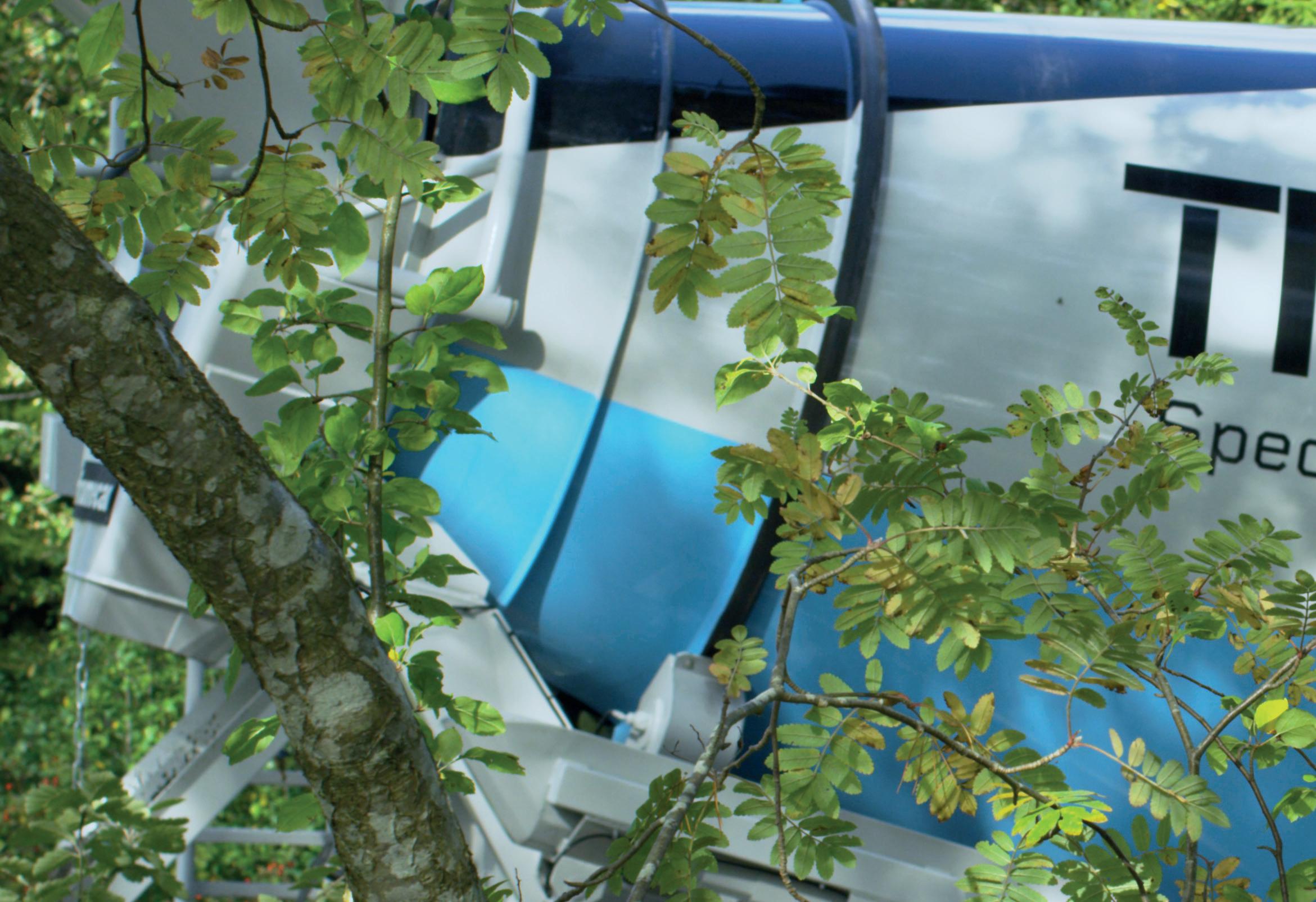
“ “ “ “


“Another key investment that is largely aimed at providing greater customer satisfaction, but we feel also enriches the working lives of our teams, is the digital transformation we are currently undertaking.”

Carina expands: “We have actually been picked as one of Microsoft’s preferred corporate partners, on account of the example that we are setting to other businesses to dare to digitise. We have incorporated a company-wide cloud along with a number of digital solutions for our customers. These include a portal that grants them access to a whole range of data, such as the moisture content of their concrete. We are
striving to be as modern as possible, as a means to increase our value both internally and externally.”
Despite the extra freedoms under Sweden’s differing COVID restrictions, Thomas Betong still felt somewhat of a sting from the pandemic. Staff sickness led to slower production times across the industry and affected general plant operations, however Carina says that most of the issues were manageable through careful planning and problem solving. “Our remaining staff had to work extremely hard in supporting their colleagues who were absent, so it was still very tough on us, but we weren’t affected like the travel industry.”
Moving forward from these troubled times, the company is tapping into one of its ultimate resources in the procurement of the future it wants and deserves: ambition. As Carina concludes: “Our ambition cannot be quelled, as it’s such a key characteristic to our proceedings. Looking towards the coming years, we are striving to develop our products further and expand the company farther. The lust for getting better and better, day-in, day-out, is in our blood. Of course, the market goes up and down, and unfortunately it’s currently on a run of bad years, but even this hasn’t managed to stop us. We have still achieved year-on-year growth in revenue and profit. In terms of what is happening in the world now, the next couple of years are looking to be unstable. We’re unfazed; we’re fully confident in our abilities to find the correct solutions within fresh strategies, to continue to be a strong company.” ■
www.thomasbetong.se

Our ambition cannot be quelled, as it’s such a key characteristic to our proceedings

One of the UK’s largest brick manufacturers, Forterra, is influenced by its past, set within the present and preparing for the future
Forterra is one of the UK’s largest brick and concrete block manufacturers, with offerings across a wide range of clay and concrete building products. Famous for being the sole-producer, internationally, of the iconic London Brick, and proud to remain fully based in the UK, the company cites its purpose as being to keep Britain building efficiently, sustainably and economically. Within the other trusted brands that you will find under its umbrella, are the likes of Thermalite, Conbloc, Ecostock, Butterley, Cradley, Red Bank, and Bison Precast.



Originally founded in 1960, as Hanson’s UK building products division, the business’ history is seasoned with regular acquisitions and a theme of steady growth. In 1968 the company acquired Butterley, which was followed by London Brick PLC in 1984, Marshalls Flooring in 2002 and Thermalite in 2005. The rebranding of the organisation as Forterra took place after it was bought by Lone Star Funds in 2015 and the following year it gained admission to the London Stock Exchange as an independent listed company.











In 2019, the company embarked on the construction of the largest and most efficient brick facility in Europe, which it shall soon be completing. The £95 million investment is set to double the size of its Desford facility and increase the plant’s capacity to 180 million bricks per annum, or in layman’s terms, enough to build 24,000 family homes. As a result, the business’ overall output will exceed 700 million bricks per year, but notably, in a more environmentally friendly fashion. The new site incorporates state-of-the-art processes that minimise the environmental impact of brick production, in the form of two cutting edge kilns that reduce both energy consumption and emissions. This is just one of many developments culminating towards the hundreds of millions of pounds worth of capital that Forterra has been reinvesting to increase its productivity and capabilities. Elsewhere,


it has used £27 million to modernise its Wilnecote location and a further 12 to bring automation to its Accrington factory. The organisation currently employs over 1800 people across its 17 manufacturing sites and operates on a nationwide basis. Fuelled by its expertise in building supplies composed of concrete and clay, Forterra is famed for its bricks and blocks, as well as its precast, roofing, paving and façade products. The company prides itself on hosting a senior
Vibrantz Technologies is a leading global provider of specialty chemicals and materials, with a purpose to bring colour, performance and vibrancy to life. As a reliable brick colourant partner, Vibrantz has provided Forterra with innovative and sustainable solutions for decades through its legacy company, Prince Minerals. Visit vibrantz.com to learn more.
Prince Minerals is now part of the Vibrantz Technologies brand. Learn more at vibrantz.com Supporting Forterra with innovative and sustainable brick colourants for over 70 years.team with a wealth of diversity, in terms of background and industries, which enables it to combine the best tools, techniques and knowledge in operating with the utmost efficiency and resultant success. This portfolio also boosts the business’ customer service abilities and general understanding of the wider requirements of the construction industry. For example, through implementing developments from the aerospace industry, Forterra has begun to introduce intelligent computer systems to provide its clients with real-time feedback.
The business has placed great importance on reducing its environmental impact and highlighting its green strategies. In doing so, Forterra has created a reporting framework to set out a balanced approach composed of the three following pillars: planet, product and people. Within these categories it has devised key future targets and reporting metrics to

ensure it continues to be a good neighbour and responsible employer for many years to come. ‘Planet’ outlines the company’s support of the UK’s target of Net Zero by 2050, ‘product’ refers to the longevity of the structures built with Forterra’s supplies, and under ‘people’, the health and wellbeing of all employees is first and foremost. With regards to tangible changes, the organisation has successfully reduced its plastic wrap usage by 84 per cent annually, through working closely with its engineering department and packaging suppliers to develop a pack format that’s almost entirely plastic-free. It has also invested £40 million on 200 trucks that run on hydrotreated vegetable oil, £2 million on the necessary infrastructure to support them, and purchased a fleet of fully electrified cars.
Elsewhere in its ESG policies, Forterra takes great pride in the support it extends to its local communities, where its current and
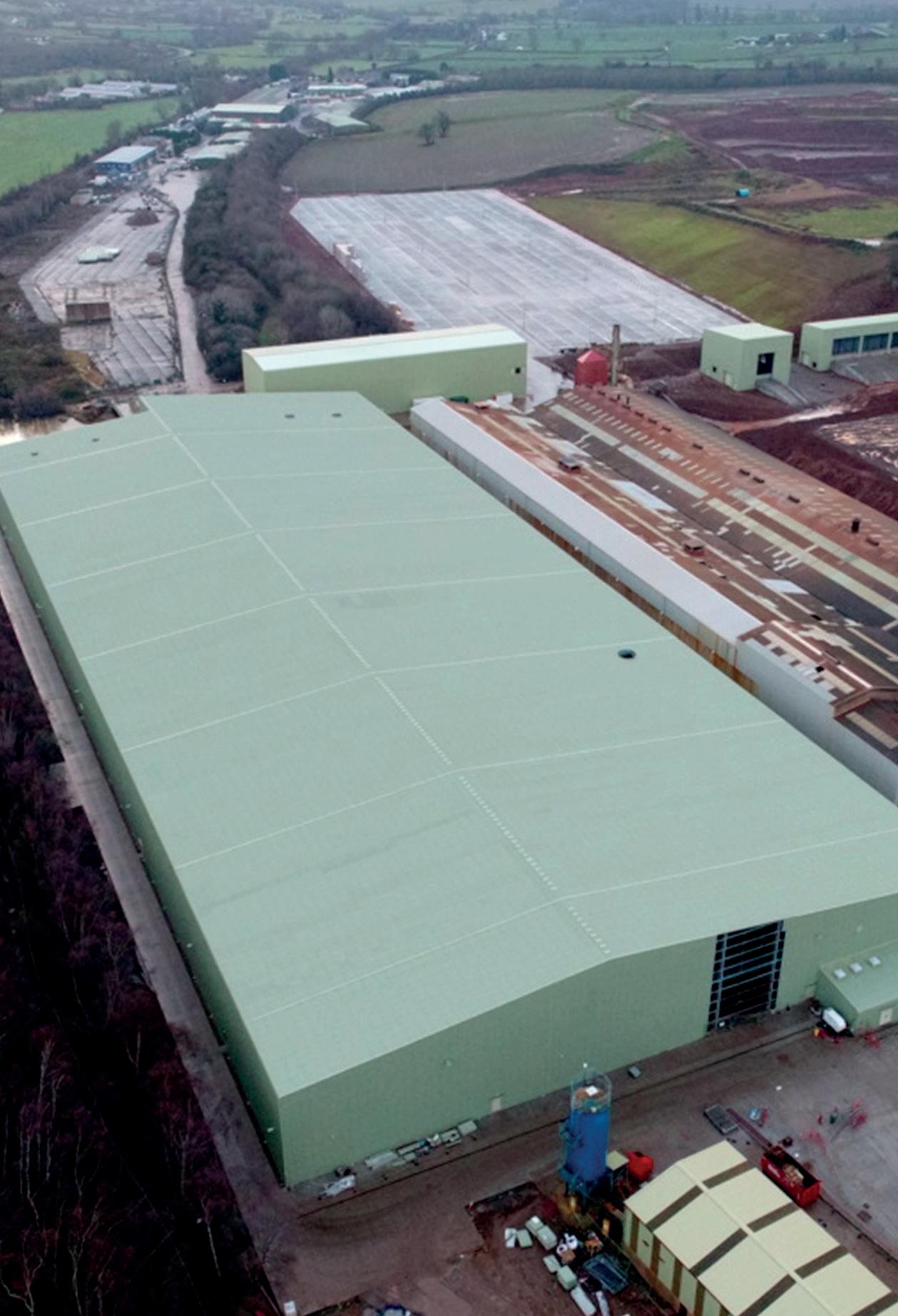
future employees live. Besides establishing the Forterra Community Fund, designed to make it easier for local charities, clubs and groups to apply for funding, the company has also started to invite the local construction colleges to become one of its Construction Hubs. With the aim of furthering the ongoing materials donations to these institutes, the hub initiative provides members with London Brick branded merchandise and opportunities for students to gain exposure to some of the industry’s leading experts. Charity and care in the community are both clearly very close to the heart of the business, and driven through everything it does. ■

www.forterra.co.uk

Franki Foundations (Franki) is the UK leader in the design and build of piling and foundation solutions, employing an experienced team of design engineers and operating a large directly owned fleet of both traditional and patented piling rigs. Franki is using its vast experience and history of innovation, to achieve tremendous success despite the recent supply chain challenges and economic uncertainty and continues to revolutionise the piling industry.
The company’s portfolio of iconic projects includes the redevelopment of the former American Embassy on Grosvenor Square, Lord’s Cricket Ground, One Centenary Way in Birmingham, and
the redevelopment of Leadenhall Street in the City of London. Jonny Miller, Pre-Construction Manager at Franki, joins us to discuss the company’s continued growth, pioneering designs, and motivations for the future.
Franki was born out of innovation with the patent of the Franki pile in 1909. Over the next century, it led the industry through the development of new techniques, such as the Atlas pile in 1960 and the first diaphragm wall in 1962. After tremendous growth in Europe, Franki entered the UK market in 2006 through the acquisition of Able Piling, but it was its own acquisition by Besix in 2008 that further accelerated its expansion in the UK.


Even with its rapid growth, Franki “still undertakes the domestic and small-scale projects that were our stepping-stone into the UK market,” Jonny begins. “Staying true to our roots in this way ensures that we remain humble and value every client, appreciating the importance of the work we are entrusted to carry out for them.”
Similarly, the historical origins of Franki remain central to its mission. “Playing to our historic strengths of quality and innovation enables us to provide our clients with more efficient and costeffective solutions,” says Jonny. “In doing so, we strengthen the partnerships with clients, who appreciate the value we add to their project through identifying opportunities for efficiency and savings.”
He continues: “We recognise the challenges our clients face from the changing market conditions and use our
technical expertise to provide the necessary solutions.” Such collaboration is evidenced in the redevelopment of The Old War Office at 57 Whitehall, which included a five-storey basement and three additional floors on top of the original building.
“Our vast experience and knowledge of deep basement piling helped us to design and deliver the most efficient solution for the client,” recalls Jonny. “Situated in a highly sensitive and prominent location within central London, the landmark project

It is the expertise and dedication of our people that truly sets us apart
at 57 Whitehall required careful planning and installation of 687 piles, comprising a 900mm diameter secant wall and 1500mm diameter bearing piles, complete with plunge columns to depths of up to 40m to enable top-down construction.”
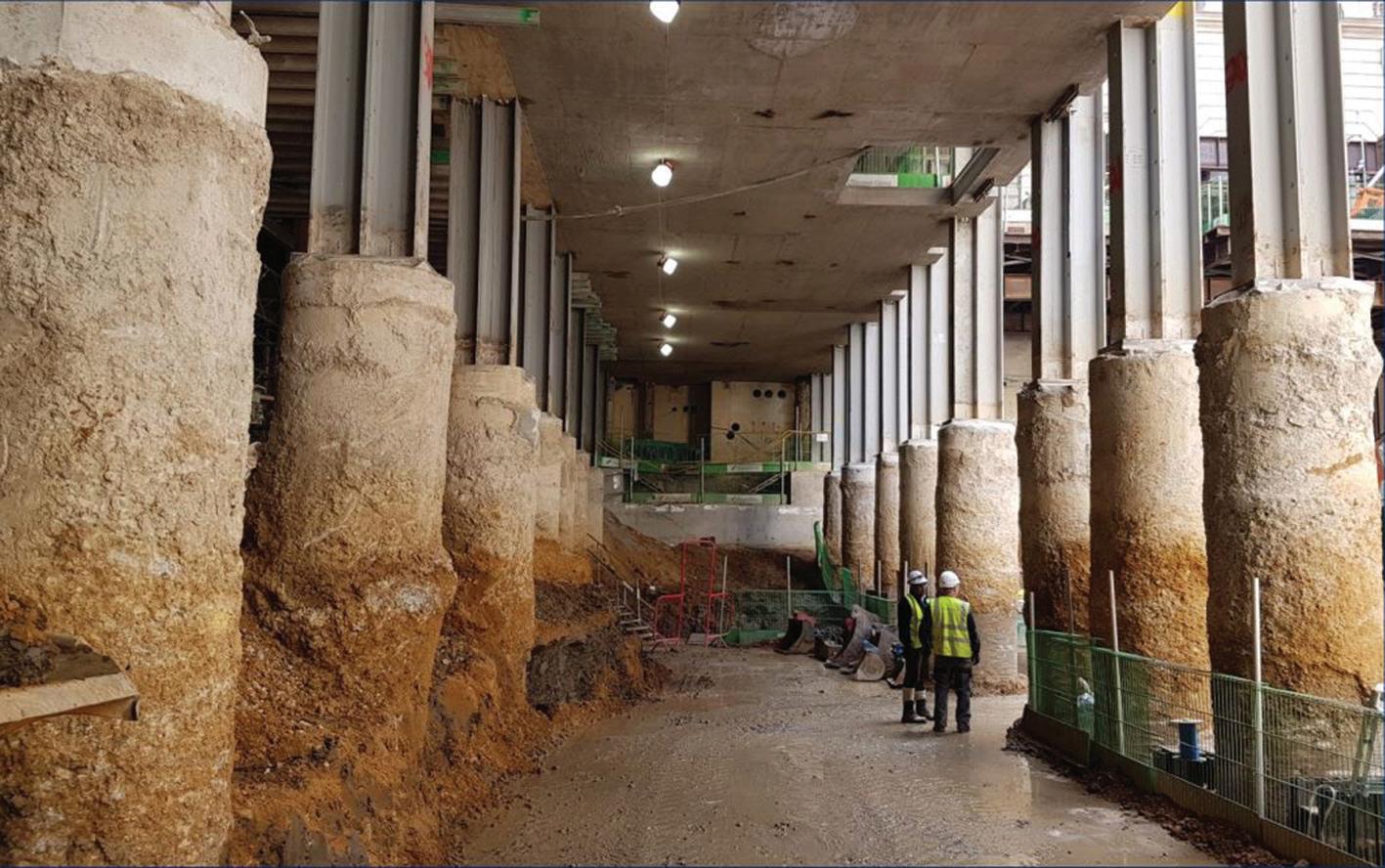
Always looking for ways to improve, the company’s Martello piling division has revolutionised the installation of large diameter piles. It has created a unique method that enables piles of 1050 mm diameter to be installed to depths of 40m within as little as 3.5m headroom. Jonny adds: “We are the only company to offer this service, which has led to Martello being used as part of the solution at 57 Whitehall, as well as many other iconic projects such as Battersea Power Station, The V&A Museum and The Royal Opera House.
“A new range of piling rigs was created and patented to achieve this capability, which offers the potential to shorten build programmes by months and achieve significant overall cost savings,” he continues. It is this kind of innovation that resulted in Franki being finalists at the Ground Engineering Awards for Technical Excellence and at the Federation of Piling Specialists Awards for Efficiency Through Technology. They were also awarded Project of the Year by ASUC for their underpinning work.
“It is the expertise and dedication of our people that truly sets us apart in the industry and keeps our clients coming back to us,” states Jonny. “In keeping with our company history, we are a team of can-do problem solvers, who excel at implementing engineered and
As an industry, we must resist the temptation to race to the bottom
bespoke solutions for a wide variety of projects and sectors. We have our own Research and Development division to create these bespoke solutions in-house, which upholds the company ethos of continuous improvement and innovation.”

The current economic climate poses a challenge to the construction industry. “While the increase in costs will have already been considered in many projects, margins remain squeezed and the overarching challenge for the entire industry for the foreseeable future is to find ways of building sustainably, without compromising on quality and safety,” he explains. “As an industry, we must resist the temptation to race to the bottom, but instead invest in the resources that add value to clients’ projects and this technical, professional approach will maintain healthy businesses.”
Looking ahead, Franki is focused on becoming the leading provider of piling and foundation solutions, particularly in London and across the South of England. Jonny explains: “Our five-year plan is not simply structured around targeting growth or increased turnover, instead we will continue to stand out through our commitment to a quality-led approach, utilising our technical strengths to meet our clients’ needs, providing unique construction sequencing and processes that incorporate true value engineering.
“We come into 2023 with our strongest forward-order book for over four years,” concludes Jonny. Through our proven strengths of technical expertise, innovation, and high quality, we expect this growth to continue through repeat and new business despite the challenging market.” ■ www.frankifoundations.co.uk
KCOM was not always known as such. As one of the oldest communications companies in the UK, it has been part of an ongoing evolution. Founded in 1904, the company was originally called the Hull Telephone Department. It was then bought by Hull City Council ten years later and became increasingly recognisable as a corporate entity thanks to its now-iconic white telephone boxes.
The evolution continued in 1987 with the company becoming Kingston Communications. Under that name, the telecommunications expert would roll out Europe’s first commercially available ‘fast internet’ using ADSL technology in 1998.
Though it would ultimately rebrand as KCOM in 2007, the company’s reputation continued to grow, unhampered by the various changes in name, as it went on to accumulate a greater market share,
while also bolstering an already strong customer base. Since then, the company has become a leader in the UK communications services niche, connecting businesses and residential customers, and investing in better digital solutions for all.

In 2012, KCOM began to roll out Fibre to the Premises (FTTP) broadband connectivity, enabling more than 95 per cent of households in the area to be passed by FTTP technology. This was a massive step for Hull. Thanks to KCOM, the city became the UK’s leading area for broadband, boasting the fastest and highest FTTP coverage across the country.
KCOM carried out its first major network expansion in 2020, bringing full fibre broadband to homes in East Riding of Yorkshire and – for the first time in the firm’s history – over Humber Bridge and into North Lincolnshire.
Why a full fibre future means the best online experience, with no frustrating dropouts, buffering, or endless waiting, according to KCOM


“Across these areas, we currently pass around 300,000 homes,” begins Neil Bartholomew, Managing Director at KCOM, which is owned by Macquarie European Infrastructure Fund 6, a fund managed by Macquarie Infrastructure and Real Assets (MIRA), the world’s largest infrastructure manager.
“There are three major differentiators that set KCOM apart from the competition,” he goes on. “First and foremost, we have a unique passion for progress and innovation, which has been proven by our commitment to driving the industry forward. This brings us to the company’s most recent announcement: Hull will be the first mainland region of the UK to completely upgrade to full fibre.
“To achieve this feat, we will be upgrading
our legacy telephone network from aging copper, which is generally 40-plus years old, to future-proof fibre that can keep up with demands of our modern, digital age.

“The second thing that sets us apart is our network. We invest significantly each year to make sure our network performance stays ahead of the annual 20-to-30 per cent increase in data usage from customers.
“Finally, we invest in and partner with the communities we serve, either through our charity work, grants to local charities, staff volunteering schemes, or support of grass roots organisations, which was recognised with the national award for Commitment to the Local Community at the 2022 Better Society Awards.”
“
“
...we invest in and partner with the communities we serve
“
But how does full fibre provision and ever-faster speeds serve to benefit the common household? In this age of instant communication, Spotify, Amazon, and Netflix, more and more services are following suit and moving online.
Digital entertainment such as gaming and on-demand media require more and more data bandwidth each year. Soon, no doubt, 4K will appear rudimentary at best.
Speeds are going up, too. By meeting this growing demand, network providers such as KCOM seek to stimulate further economic growth by providing businesses with the bandwidth they need to enable flexible working and meet everincreasing connectivity requirements.
“By upping our capacity for highspeed internet, health and wellbeing devices and services can begin to utilise remote health monitoring and online GP
DexGreen has your complete solution for MDU connectivity. It can be difficult to standardise a Bill of Materials (BOM) for MDU Network build and maintenance.

To address this, DexGreen works with operators to develop an appropriate BOM for their network. Some key benefits include:
■ Cable constructions: variety of ruggedised cables suitable for both internal and external use

■ Discrete: low-profile cabling that provides fibre to the premises quickly, easily and is aesthetically pleasing








■ Universal solutions: closures and cables with vast arrays of use cases reduce the variety of products leading to easier planning, less stockholding, improved maintenance, and less training
■ Artificial Intelligence (AI) visualisation: dedicated app provides a planning tool and guides the installer through installations, reducing the time and frequency of access to the premises

■ Connectorised: pre-connectorised fibre cable provides a quick installation method, allowing for a plug-and-play solution, therefore reducing the need for splicing, which can be time-consuming
DexGreen has a complete solution for Optical Fibre Cable Deployment and connectivity with both retro-fit and newbuild MDUs. So why not get in touch today to see how DexGreen can help you!
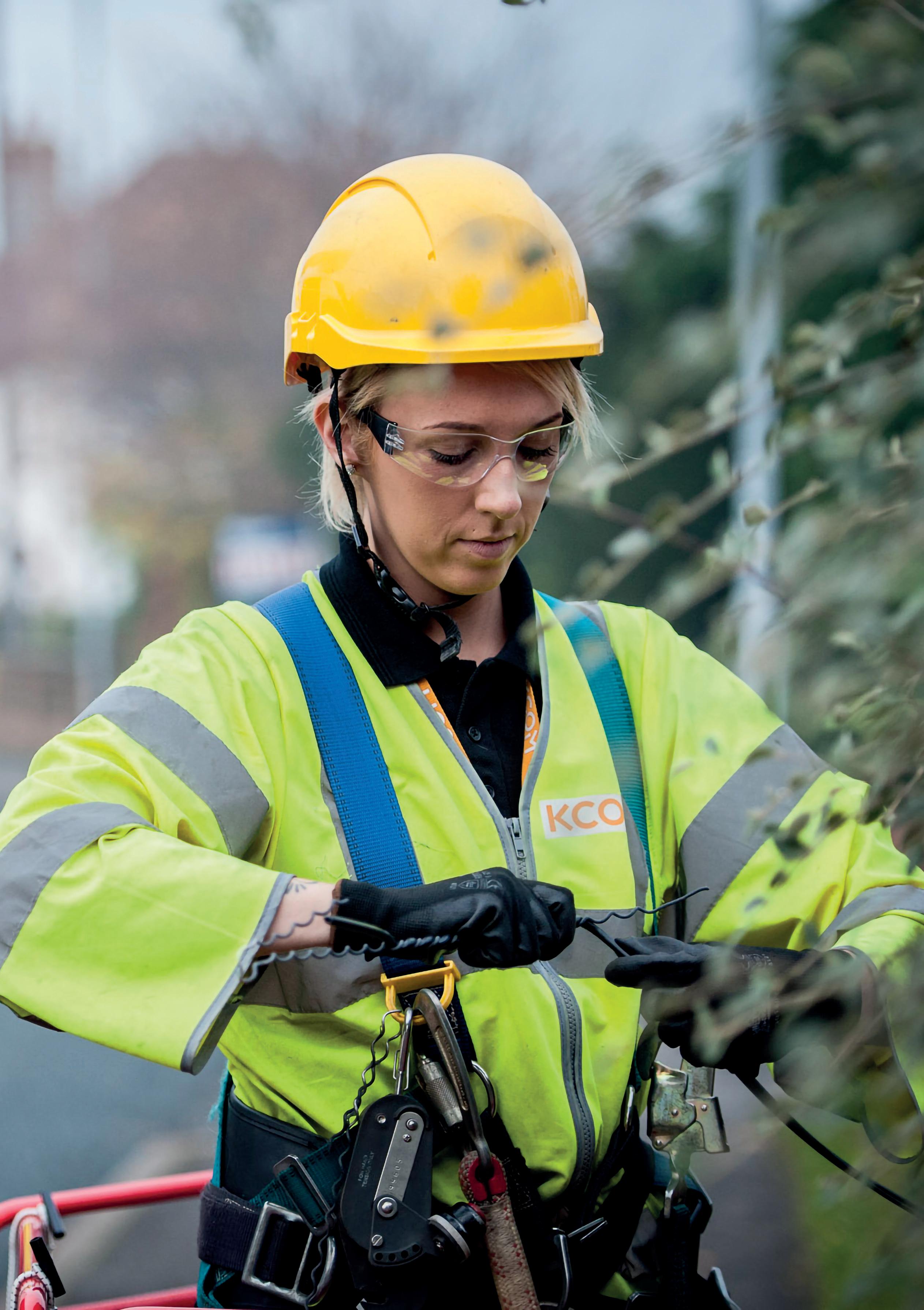

services,” explains Neil. “Further, education provision will improve through the system’s enhanced ability to move schooling to the home dining table, which was particularly highlighted during the pandemic. Another instance is the rise of online university.
“Full fibre can also improve sustainability credentials for organisations by encouraging remote working and supporting the massive increase in connected energy management devices, including smart metres and lighting,” he adds. “In addition, when we upgrade our voice network from copper to full fibre, our own company’s carbon footprint will decrease. Finally, but probably most importantly, our full fibre network will enable digital inclusion, ensuring no one is left behind in the new, digitally enabled way of life.”
And KCOM is putting its money where its mouth is. In 2020, the company announced a £100 million expansion of its full fibre


infrastructure. Neil updates us on the progress.
“Our mammoth investment consisted of a further expansion of our full fibre network across more of East Riding of Yorkshire, North Yorkshire, and Lincolnshire, which will bring full fibre broadband to a further 50,000 premises,” he reveals. “This is in the planning and scaling stage where we design detailed street-by-street plans, and our build partners begin to scale.
“We are also looking to upgrade the final five per cent of homes that are not yet full fibre,” notes Neil. “This is still a workin-progress, but we are already seeing homes being released for upgrade from copper-provided broadband services. We are now working on network solutions in our laboratories to facilitate even higher internet speeds. This will enable symmetrical upload and download speeds of up to ten Gigabits per Second (Gbps). Though this
may sound like a lot – who actually needs those speeds, especially domestically? –as online demands grow, it is quite easy to envisage a time when such speeds will not only be necessary but essential.”
KCOM is also investing £500,000 with the aim of improving digital inclusion across its operating region, creating a social broadband tariff for those on certain benefits. This saw the introduction of a no-contract, low-priced broadband connection to get them online and included. It is estimated that around 4,800,000 people in the UK will never get online, while 11,300,000 people lack the basic digital skills to use the internet effectively, which underscores the importance of inclusivity in the communications space.
Recently, the company has been working on a particularly interesting project, with the aim of expanding its full fibre network in a very rural community in East Yorkshire. As Neil details:

“By working with local community champions, we were able to understand the demand for faster broadband in the rural community and then deploy a network build to 350 properties in the village to increase speeds from around 20 Megabits per Second (Mpbs) to 900 Mpbs.
“We did this while supporting community initiatives, such as providing a digital hub in the local village hall,” he adds. “This provided a remote working facility for the local community, which was a necessary space during the pandemic and remains so as we get used to our new era of hybrid working.”
KCOM’s community work does not stop there. Indeed, as mentioned previously, the company was thrilled to be given the national award for Commitment to the Local Community at the Better Society Awards earlier this year.
“The award recognised our work in the communities we serve across a whole range of initiatives,” reflects Neil. “These include our KCOM Kits scheme, in partnership with Hull City, which donates a full Umbro team strip to a local youth football club every time the Tigers football team scores at home in the Championship.
“This has been phenomenally popular and during the past three years we have donated more than 100 kits to local football clubs. The accolade also recognised our staff volunteering schemes, which in the past six months have donated over 900 staff hours to 18 local charities, including foodbanks, tree planting schemes and beach clean-up initiatives.”

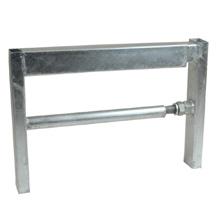



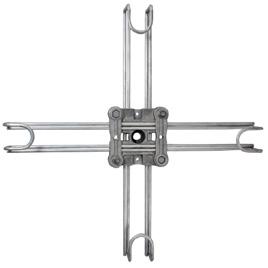


The need for faster, reliable connectivity is only going to grow over time. There is going to be a continued explosion in connected devices and services for both businesses and consumers. The KCOM full fibre network, as Neil has made clear, is all about futureproofing telecommunications technology so that we will – in five or 50 years – have the capability and core infrastructure to meet ever-advancing requirements.
“We will be the first mainland UK region to upgrade the aging copper telephony network to full fibre over the next two years
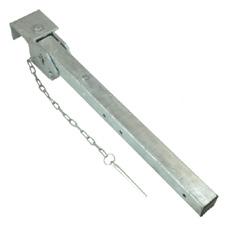


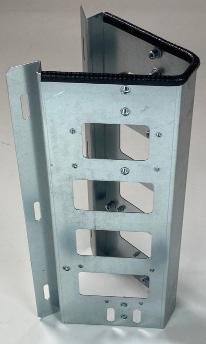








and this will enable even more digital voice services,” Neil concludes. “It is a powerful mission to be involved in. The government has recognised the need for such connectivity, investing over £5 billion in Project Gigabit, a programme that will bring lightning-fast broadband to hard-to-reach communities.
“Our Full Fibre Strategy is a three-year program and when it is finished, we will have a 100 per cent full fibre network, expanded to 350,000 homes and businesses, and a continued investment in digital inclusion. In six months’ time, we will see substantial progress against all these goals. We are determined to stay ahead of the pack and to keep pushing the boundaries of what we can achieve, delivering the best online experiences for our growing number of customers.” ■

From humble beginnings as an electrical contractor in 1948, Gratte Brothers has been committed to providing outstanding service delivery from the very beginning. As such, it is proud of the longterm relationships it builds and maintains as a business. Now in its third generation of family ownership, the Group comprises five companies: Gratte Brothers Limited (GBL), Gratte Brothers Security Management (GBSM), Gratte Brothers Catering Equipment Ltd (GBCEL), Gratte Brothers Technical Services (GBTS) and Gratte Brothers Specialist Services (GBSS). The Group-wide approach combines engineering excellence, constant innovation, and dynamic responses to market shifts with an authentic care for clients and staff alike.
As a family business, the company has incomparable industry knowledge that has been passed down for generations and benefits from a long-term shared vision, unaffected by clashing egos or agendas. The unified leadership of the family board prioritises nurturing, developing, and retaining team members. The Group champions honesty and authenticity in its approach to business and when advising customers. This is no different in the Specialist Services division. Gratte Brothers Specialist Services delivers planned and reactive MEP maintenance services to commercial and mixed-use premises.
Barney Whiting, Managing Director of GBSS, says, “It’s a commonly heard phrase around the office that ‘we do not throw a £100 solution at a £10 problem’.

This is how we build loyalty, trust and respect in our working relationships, and ultimately win contracts.” Barney credits the success of the business to his brilliant team, saying: “Our people are at the heart of everything we do; through their commitment, skills, and constant drive for improvement they are primarily to credit for our high levels of client satisfaction. As such, we invest in and reward our team members as individuals. Equally, we respond to challenges collaboratively, always with the health, safety and wellbeing of our people in mind”.
The GBSS division delivers expert building services maintenance and has access to the wider in-house resources of the Group, providing a unique and integrated building services offering, should the client need it. In providing both planned and reactive maintenance, the division’s overall scope covers the repair and replacement of all existing systems (including Mechanical, Electrical and Public health (MEP) requirements). Unlike other competitors, the company benefits from being large enough to handle bigger projects but small enough to retain the agility needed to offer customers a truly tailored service. Based in King’s Cross, these services cover London and the Southeast, ranging from mobile maintenance arrangements through to multi-resident site contracts. Contract customers also have peace of mind in the form of an emergency call-out service which operates 24/7, 365 days per year.
Barney comments that: “Our reputation has been built on our continued excellence, and our services are accredited to ISO 9001 (quality), ISO 14001 (environmental) and ISO 45001 (health and safety) standards.” On the structures and processes that shape GBSS’ service delivery, he continues: “We
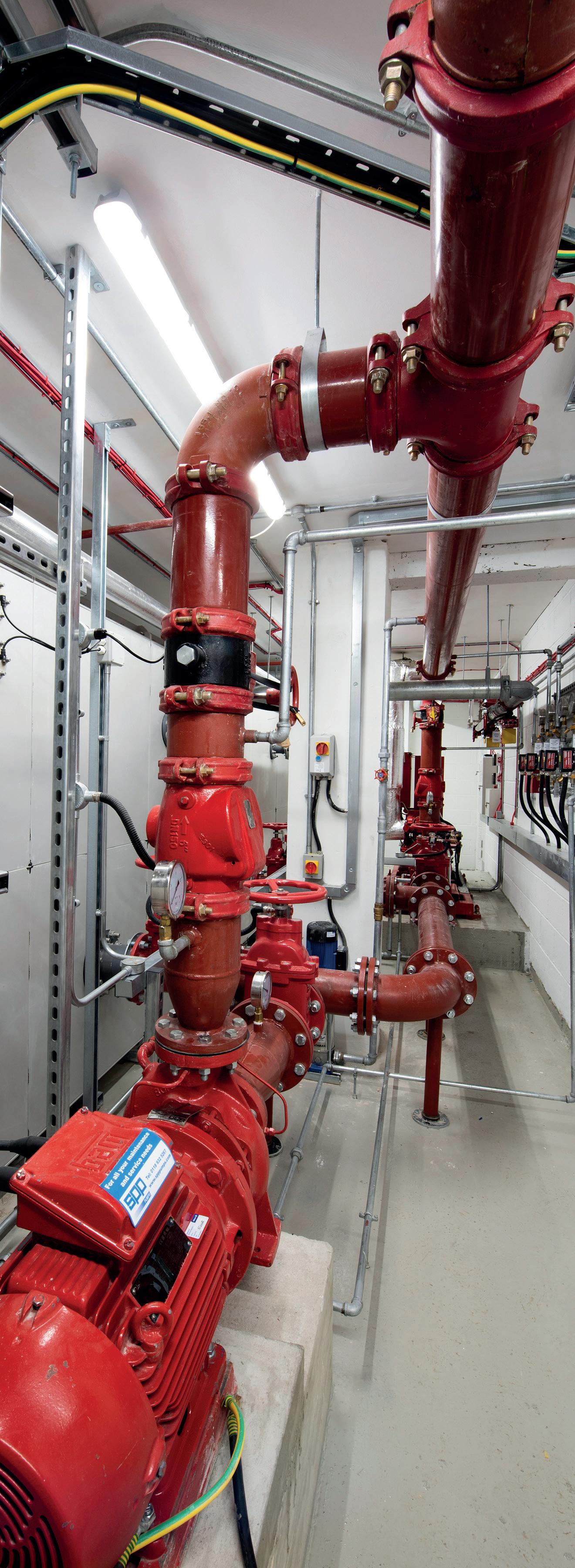


allocate a mobilisation manager to each project who is responsible for driving the contract forward. Starting with an introduction to key external stakeholders, they will then coordinate a kick-off meeting with internal stakeholders. During this initial kick-off internally, tasks are allocated, progress meetings are scheduled and timelines to completion are established. We utilise a tailored questionnaire containing 24 key performance indicators in our face-to-face interviews with clients alongside a report that captures qualitative information provided by the client. We have developed and retained our reputation for the delivery of topquality results with this attention to detail and personalised approach.”
A recent example of GBSS’ quality delivery is the Ilona Rose House project in London’s Soho. The property was developed on the site of the former Foyles’ book shop and employed digital construction techniques, smart building technologies and sustainable materials in its build. The 300,000 square-foot structure combines a nightclub, retail outlets, restaurants, an art gallery, education centre, and eight luxury apartments – with each of the 13 floors and the rooftop featuring garden terraces. In alignment with the client’s sustainability objectives, GBSS maintains the building’s solar panels, rainwater harvesting technology and ground-source heat pump systems, as well as the general 24/7 emergency call-out cover via its resident technicians.
This service also covers the building management system,

landlord HV and LV power, standby power, heating, ventilation and airconditioning equipment, fire services, water hygiene and drainage, and the building’s energy management system too. The main build reached completion in May 2021, with Gratte Brothers Limited (GBL) employed as the electrical services installer. It was during post-construction planning that the landlord reached out to GBSS to prepare a list of maintenance support proposals, which were then revised collaboratively by both parties. Barney details further: “With all our projects, BNP Paribas, Helix, IG Group and Soho Estates included, we aim to be involved as early as possible, and ideally, on a new-build site it would be ahead of the base-build completion to ensure a soft landing prior to occupation. This allows us to not only highlight any potential issues prior to the commencement of our contract, but to also add value to our working relationship in the early days. That’s the foundation of all the robust relationships we build and maintain.”
When considering social values, the Group stands on the three pillars of People, Planet and Places, which is adopted by all divisions, GBSS included. ‘People’ refers to continually improving the support of staff (both present and future) through the championing of equality, opportunities, and development. This includes addressing the gender pay gap, in which the Group has achieved a 5.4 percent reduction in the last year alone. Environmental initiatives and the company’s current journey to net zero are covered within the pillar of ‘Planet’. Finally, ‘Places’ is focused on the communities in which the business maintains

a presence, including both site and office locations, and involves regular fundraisers for local charities and community engagement.


As Barney explains further: “We are committed to sustainability in both our office and site operations – for instance, we have ongoing initiatives to improve the efficiency of our fleet and energy consumption in the office. All our staff are trained in on-site environmental management and provided with the appropriate means to dispose of waste responsibly. This is all recorded by our waste management tracker and removed by a registered company. In furthering our reduction of waste to landfill, we have partnered with a nationwide social enterprise network called Community Wood Recycling, with whom we have saved 79 tonnes of wood waste so far this year. We are equally as committed to providing the safest possible working environment for our staff. Health, safety and wellbeing are an integral element of our core values –especially as an employer of so many sitebased workers. We remain ever aware of the shocking statistics surrounding suicide rates among construction workers. We value each team member as an individual and feel a responsibility to ensure they return home from work every day as safe and happy as possible. Our teams are truly an extension of the family,” he concludes.
 ▲ Barney Whiting, Managing Director of GBSS
▲ David Gratte, Group Managing Director
▲ Barney Whiting, Managing Director of GBSS
▲ David Gratte, Group Managing Director
“
“
As a Group, we are simultaneously proud of our heritage and looking forward to the future
As a result of its values, collaborative approach and authenticity, GBSS has gone from strength to strength over recent years, securing new contracts and continuing to receive repeat business from existing customers. Group Managing Director and member of the Gratte family’s third generation, David Gratte offered the following comment: “As a Group, we are simultaneously proud of our heritage and looking forward to the future. Our long history hints at our commitment to quality, while our dedication to continual improvement ensures we remain at the forefront of innovation. Under the stewardship of Managing Director, Barney Whiting, Specialist Services upholds the Group standard and continues to deliver industry-renowned quality.” ■ Contact Gratte Brothers Specialist Services to see how they can help you with your building services maintenance requirements:

https://www.gratte.com/contact

Lane End Group is a construction company specialising in social housing and affordable homes
The UK is suffering a severe housing crisis. It needs to build around 300,000 homes a year, across all strata. The definition of ‘affordable,’ however, may have been stretched somewhat, with some sources suggesting that once Help to Buy, shared ownership and rental schemes have been considered, it can apply to houses costing up to £600,000.
That said, Registered Providers (RPs), of whom the most widely established are Housing Associations, are at the forefront of providing affordable social housing, usually on shared ownership and rental bases.
Research published by Homes for the North (which represents the 17 largest housing associations in the North of England) found that the region needs a net growth of
two million homes by 2050. The target is to build around 50,000 a year to 2027 and 70,000 annually thereafter.
It’s quite a challenge: achieving it requires a more progressive approach to building homes and communities than the traditional.
Richard Harrison, Managing Director of Warrington-headquartered Lane End Developments, is setting trends and standards to help get there. The company was founded only six years ago, in 2016, but has already grown to become one of the leading housebuilders in its sector. It has completed projects in Greater Manchester, Lancashire, Merseyside, Cheshire and North Wales, in sensitive rural settings such as Delamere Forest, Cheshire, and on industrial brownfield sites like Bromborough in the Wirral, Merseyside. It has built and delivered over 1100 homes in 14 locations, with another 1700 in development. Turnover to the end of May 2021 was nearly £80 million; payroll was around 100. Both are reported to have risen subsequently.
Richard believes in a true partnership approach, in both directions on the value chain. He volunteers the following insights in a series of blogs on the Lane End website. “SME construction

Nothing gives me greater satisfaction than seeing a family enjoy one of the properties we spent a great deal of time, care and expert skill in building
companies like Lane End can move light-footedly across the sector in land procurement, working with a solid supply chain base to deploy all the disciplines that housing associations themselves don’t have internally,” he says. “We have a purpose-built vehicle for procurement of land, which works from initial and detailed appraisal to the diligence needed to administer any risk and enable the safe delivery of government grant-funded housing.”
While being ready and willing to provide additional support services to customers, Lane End is, primarily, a building company – one with a laser focus on quality. This approach enabled it to grow so fast and to reach a leadership role so quickly. Richard maintains that traditional housebuilders are not the organisations that can deliver the homes the country and the region desperately need, for commercial and cultural reasons. The profit-driven mindset is not the same as the partnership approach.

“Strong collaboration, working shoulder to shoulder, allows both RPs and SME building companies visibility and transparency,” he continues. “They know each other’s strengths and attributes and can focus together to make a positive difference, to come together and merge skill sets to deliver the numbers needed. It is only through the RP sector that this will happen.”
Richard sounds positively evangelical in his enthusiasm for social and affordable housing: he clearly is committed to the cause and the sector.
“Nothing gives me greater satisfaction than seeing a family enjoy one of the properties we spent a great deal of time, care and expert skill in building,” he says. He emphasises that Lane End takes the same approach across all homes, from a one-bed apartment to a huge extra care unit. “The location and build may be different but the standards are the same.”
For Richard and Lane End, the commitment does not end when the keys are handed over. In June 2017, it launched New Beginnings, a Community Interest Company (CIC), as a means of giving back to the communities it serves and builds.
“Although we may only be on site for a relatively short period of time in each area, we like to provide sustainable support and make contributions to the surrounding area that have a lasting, positive effect,” says Kate Harrison, CEO of New Beginnings CIC, in a recent newsletter. “Our approach sees us not just contributing monetarily but also investing time in helping not for profit and community organisations in our areas to understand how to truly create a lasting and sustainable positive change, through mentoring or sponsorship, to investments of time or resources. We are involved in tackling social problems, improving local people’s life chances, providing training and employment opportunities, supporting communities and helping the environment.”

But even the most honourable intentions can only be successful if they are built on a solid foundation.
“As Managing Director, it’s my responsibility not just to be fully immersed in the short term and what sites we have today – my focus is also on long-term planning and securing the business for the next seven years and beyond,” says Richard. Working closely with and knowing the supply chain is crucial. “We can tailor the supply chain more efficiently and hand over jobs to them that suit them best. Not every subcontractor we use can move towards a large scheme, so allocation and deployment depends on resources they have themselves.”
Lane End is creating a culture where suppliers consider themselves to be embedded with the team and its values. It recently held two engagement days with the supply chain and will be continuing with that approach.


“We have become more efficient and we are now attracting different supply chain partners to accommodate the complexities of the contracts we have but more so, it’s about people, processes, and delivery,” Richard says. Lane End is investing in apprenticeships, to attract more youngsters into the industry, and it doesn’t stop there. A major announcement of a new, lightweighted panelised metal system is due in 2023. It will help to greatly improve build speed, while maintaining traditional skills.
Lane End has come a long way in a very short time – and shows no signs of stopping any time soon. ■
www.laneend.org
“
“
...even the most honourable intentions can only be successful if they are built on a solid foundation
Combining 55 years of experience with a strong commitment to corporate social responsibility, McCann continues to grow as a safe, sustainable and inclusive business
As one of the UK’s leading civil and engineering construction companies, McCann Ltd has been completing work on major road, rail and airport infrastructure projects since 1967. During this time, the company has evolved from its traditional role as a lighting specialist into a civil engineering specialist, acting as a key player in creating and maintaining crucial elements of the country’s infrastructure whilst meeting the business needs of its clients. With its Nottingham base and strategically positioned regional offices, McCann is well placed to deliver its wide range of specialist contracting services up and down the country.
McCann understands the essential role that good lighting plays in road design, helping to improve visibility for drivers and reduce the risk of road traffic accidents. The company’s wealth of experience in this area, as leading experts in road lighting installation and design, has helped it to secure a series of impressive lighting installation projects, including a four-year, £3.8 million project installing energy efficient LED streetlights in Birmingham as well as completing a series of lighting and improvement works projects for Highways England. In addition to its lighting expertise, the in-house civil engineering team at McCann is able to provide a range of professional, bespoke services, ranging from road and


footpath construction to earthworks and drainage and public realm work. The company is currently undertaking an exciting £8 million contract in York on the old Nestlé site ‘Coca West,’ carrying out drainage installation as well as major earthworks and groundworks for a housing redevelopment project.
McCann also offers high quality practical training opportunities, providing a series of courses within the highway, electrical, construction and allied industries. As a HESA approved training organisation, McCann is able to provide fully compliant training for HESA or

Lantra accredited certification, as well as providing first aid courses, in-house courses in a range of subjects and Driver CPC training.
A key part of the company’s growth strategy focusses on upskilling its staff, looking to broaden its existing services and growth within new sectors so as to expand the company portfolio by attracting more clients. Leading on from the exceptional growth that the company has experienced, McCann aims to increase its turnover to £100 million within the next five years, with a turnover target of £106.5 million by the end of 2023-to-2024. This ties in with the company vision to become the contractor of choice, providing leading services in creating and maintaining UK infrastructure, benefitting communities by providing safe and sustainable solutions and having a positive impact on the environment.
As a values-focussed company, McCann places a huge degree of importance upon its commitment to sustainability and its corporate social responsibility. McCann manages its impact on the environment by maximising recycling and minimising waste, as well as ensuring that its use of natural resources is carefully controlled. McCann’s commitment to sustainability is demonstrated by its ‘Go Ultra Low’ status, which it achieved by committing to convert the entire company car fleet to electric by 2025. Further, McCann has signed up to ambitious targets for reducing its CO2 emissions and is focussed on creating a safe and sustainable workplace for its employees.

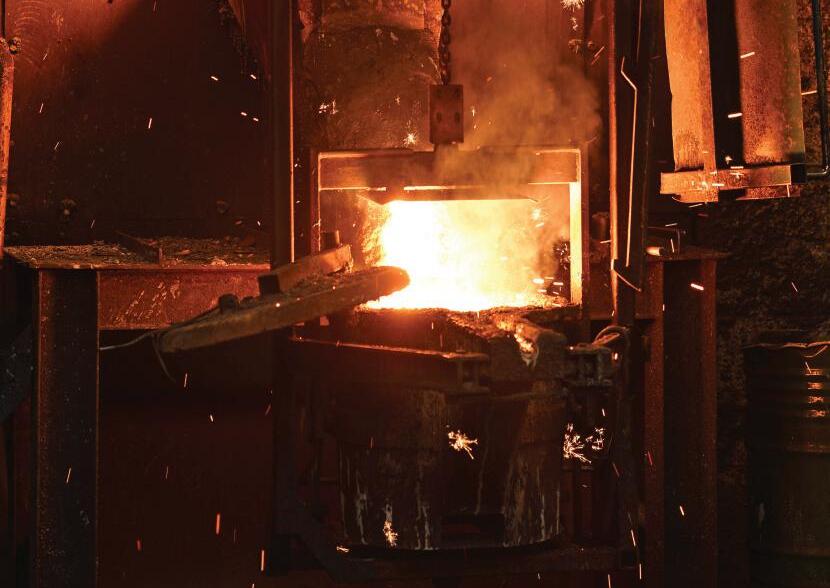
McCann is continually working to strengthen equality and embed diversity and inclusion initiatives within its everyday practice, policy and procedures, striving to contribute towards positive change both internally and externally. The company is passionate about promoting a culture centred around employee wellbeing, as is demonstrated by the training of new mental health champions to support staff in the workplace. The success of this new initiative is shown by McCann being named as a finalist at the 2022 Highways Awards for Excellent Mental Health and Wellbeing. The numerous volunteering activities and outreach programmes that the company is involved in, such as its support for the Canaan Trust and volunteer work with local schools through the STEM Ambassador programme, further exemplifies its commitment to playing a positive role within the community.
A wealth of professional experience alongside McCann’s commitment to being a responsible employer has fuelled the company’s success and resulted in it receiving numerous accolades and commendations for its work. The company was highly commended in the Project of the Year category at CECA Midlands Annual Awards Dinner as well as in the
Employer of the Year category at this year’s CIHT Annual Awards Ceremony.

Continuing on its journey of providing effective and responsible services to meet the needs of its clients, alongside its role in championing sustainable practice and corporate responsibility, McCann is perfectly positioned to maintain its status as a leading civil and electrical engineering construction company as it continues to evolve and grow. ■
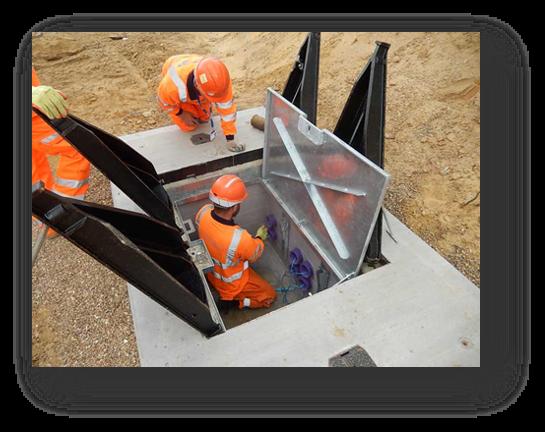

“
“
McCann is continually working to strengthen equality

Premier’ is an appropriate name for Premier Modular Ltd (Premier).
Founded in 1956 in a small factory in Blackburn, England, as a manufacturer of timber garages, it lays claim to being one of the first modular construction companies in the United Kingdom. It was a good time to get into the business, as the UK had a desperate need for rebuilding after the devastation of WW2.
By the early 1960s it had expanded into building schools and healthcare facilities, to meet the needs of the Baby Boom and growing National Health Service. In 1968 it began manufacturing full-scale modular buildings.
Premier is now based around 120 miles east of its original home, in the village of Brandesburton in East Yorkshire. Its high quality, bespoke,
permanent and temporary solutions are in demand, for customers across public sectors, supporting the UK’s infrastructure projects, alongside working in both private residential and a number of commercial/ industrial areas. Revenues are in the region of £130 million and have been doubling year-on-year since 2018, which is quite an achievement in light of disruption from the Covid-19 pandemic and other events.
“We offer a range of services to our clients, from initial design through project management, completion and aftercare support,” says David Harris, Managing Director. Projects range from single relocatable buildings to large bespoke buildings of up to six storeys.
“The solutions are often incredibly complex and have to be delivered to the highest quality at almost unbelievable pace,” David explains.
Long-established modular building manufacturer, Premier Modular, is investing in technology and processes in its bid to become net zero by 2035
“That takes a blend of skillsets, from design and manufacturing, through construction and installation to Mechanical and Electrical (M&E) and finishing trades.” He goes on to say that Premier focuses on bespoke solutions for its customers’ exact needs, which may seem contradictory to its role as a factory-based producer of modular buildings, but Premier is constantly driving for new and better ways of working. The buildings it makes today are quite different from those being built just five years ago, never mind 50 years ago.
“It’s the skills of our people, including ‘soft’ skills, that lead to a better understanding of clients’ needs and enable Premier to produce individual solutions with the ‘wow’ factor. Modular building is the sustainable, responsible future of construction,” he says and is keen to highlight the company’s focus on Environmental, Social and Governance (ESG) issues.
“We’re making huge efforts to be net zero by 2035. We implement low and zero carbon technology, use renewable energy, generate zero waste to landfill in our factories and produce energy-

““efficient buildings,” David says. “While traditional construction is struggling with labour shortages, we have access to the fullest range of skillsets. Our factories are controlled environments, with clearly defined manufacturing processes that deliver high quality solutions, on time, within clients’ budgets.”
2022 has seen industry and international recognition of its efforts. In April, it received the first ESG award in Europe for a manufacturing company; two months later, it delivered a new hospital building with audited carbon emissions 48 per cent lower than standard. It’s looking to build on these gains for the future and, in February, launched the Premier Academy; a new training academy that has enabled Premier to triple its annual apprentice intake.
“Modular solutions support the circular economy with highlyefficient manufacture, rigorous quality control and significant reuse of products or even buildings,” he continues. “Our modular buildings are reusable, flexible and reconfigurable, which means clients can adapt them to changing needs and to meet decarbonisation goals.”
““While traditional construction is struggling with labour shortages, we have access to the fullest range of skillsets


Additionally, modular solutions offer lower levels of onsite disruption which is an advantage, crucial to sectors such as healthcare and education. Programme times can be halved, massively reducing disruptive site deliveries and labour hours. When Discovery Special Academy in Tees Valley Multi Academy Trust, in North East England, needed modular classrooms for children with special educational needs while their permanent facility was built, it took Premier just eight weeks to design, manufacture and install a fully-serviced single-storey block with five modular classrooms with sensory areas; a hall with offices; cleaning facilities; accessible toilets with motorised sinks; and changing rooms.
“A current project we’re really excited about is Luminate Printworks, a muchneeded city centre education facility. It’s complex, being built on a gantry alongside a protected building. The new 11 classroom space is over 1150 square metres,” says David. Onsite installation was completed in just four days in October 2022; completion is set for January 2023.
The past decade has presented business with major challenges, from Brexit to Covid-19 and the war in Ukraine. Energy, raw material and wage inflation have become an everyday reality. David is confident that Premier Modular is fit for the future.
www.premiermodular.co.uk Premier Modular

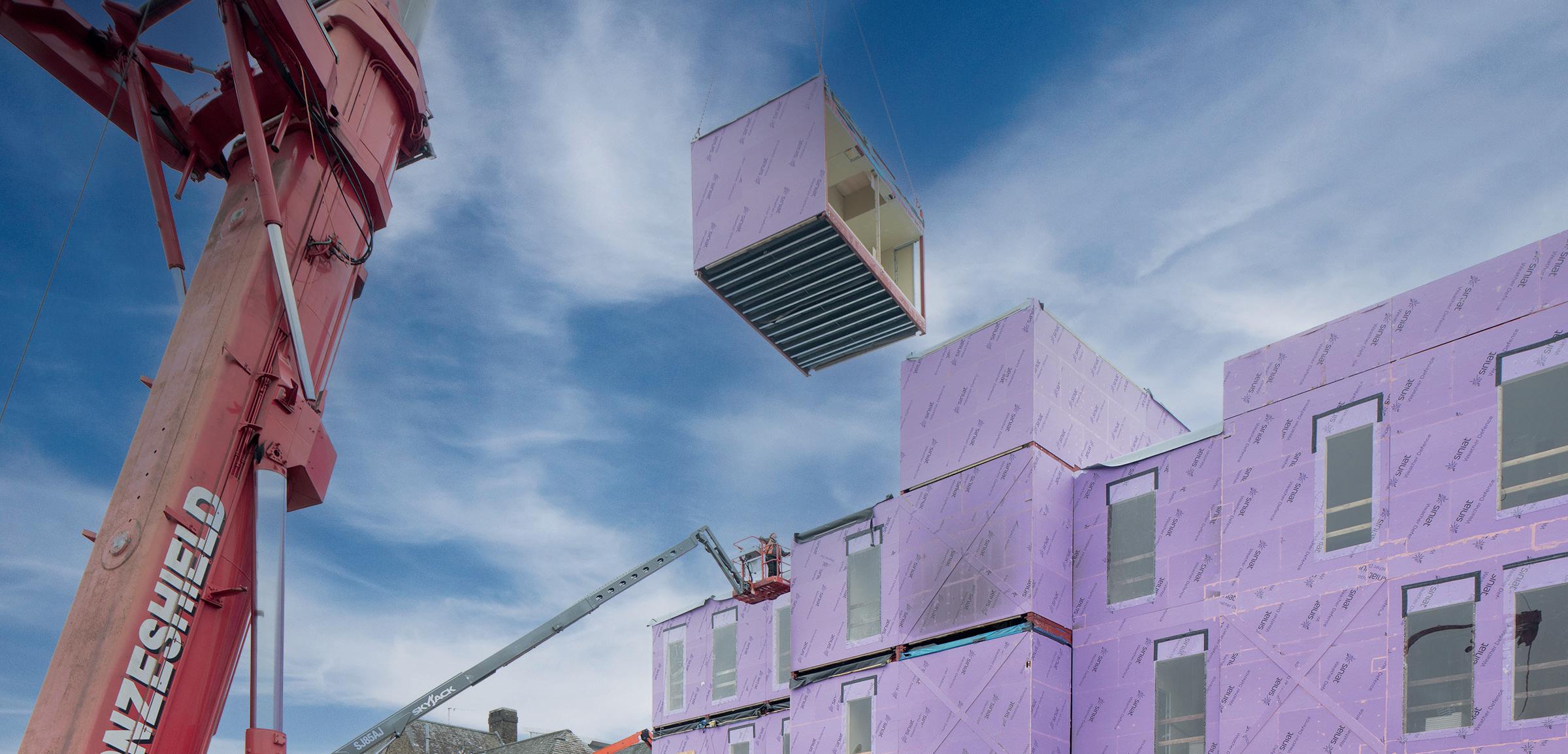
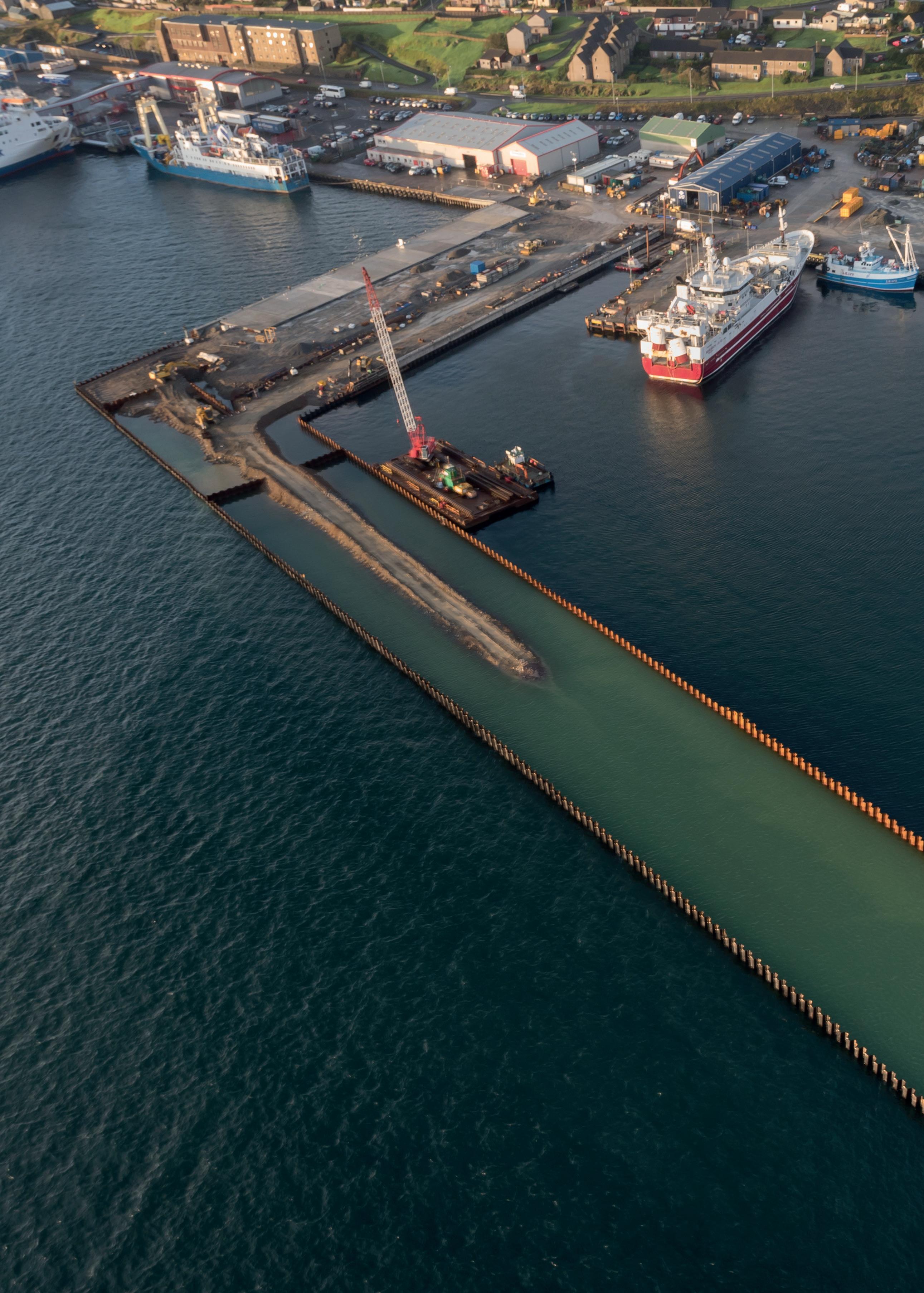
Tulloch Developments’ team are looking forward to celebrating their 50th anniversary
Fifty years in business is usually a huge deal for any company no matter what industry you’re in. But for the team at Tulloch Developments the champagne and celebrations are being balanced against an ever-growing workload as they approach their golden trading anniversary in 2023.
Why? Because the Shetland-based civil engineering and construction firm is on a roll in delivering large-scale projects that are making a real difference on the Scottish island.
The family-run business is currently working on a £9 million contract that will ultimately see Shetland hooked up to the national grid with a supply of renewable energy from windfarms. Tulloch Developments has been working with national energy supplier, SSE, to play its part in constructing the necessary infrastructure required for the connection.
And with other important commitments as Shetland’s most-respected large construction company, as well as being the biggest and most versatile civil and marine engineering contractor on the island, the 50th anniversary celebrations are taking a backseat to the demand in the island’s construction sector.


“ “
“ “
“The anniversary has quite rightly taken a back seat at the moment simply because Shetland has a micro economy that is extremely buoyant right now with the work that is going around,” says Joe Smith, Director of Tulloch Developments.
“That’s not just the case for us. All the local companies involved in our sector, and probably every other sector, are doing well. When it comes to construction and engineering in particular, there is no shortage of work for any of the local firms – so everybody is focused on maximising their input to that.
“For the next five years or so that doesn’t look like it will slow down. I think that the connection to the national grid opens up the
door for other renewable projects. That will almost certainly provide continued work for a lot of local companies, along with more.”
Tulloch Developments has come a long way from the days when founder Peter Tulloch set up the business to focus on building houses. His two sons, Frank and Alistair, who later took over the company in the 80s, helped steer the business in a new direction towards civil engineering projects.
In 2004, George Smith came on board. From that point on, Tulloch Developments focused heavily on civil and marine engineering and the company continued to go from strength to strength.
It’s become a real family affair since because, after Alistair retired and Frank
we know the ropes

As the principal commercial port for Shetland we’re experienced in dealing with a wide range of maritime sectors and are equipped with a host of modern facilities, including 24 hour all-weather access and exceptional deep water quays.
www.lerwick-harbour.co.uk

and George stepped down as directors, the next generation has taken control of the ship. George’s sons, Joe and Peter, along with Frank’s sons, Shaun and Stewart, are all now main Directors of the company.
Joe says: “Frank and George are both still actively involved but the day-to-day management of the company is on the four of us. The business is three generations in now.”

With Tulloch Developments expanding over the last few decades, and the firm building a solid reputation, a natural by-product of that has been a steady stream of large-scale projects and lucrative contracts on Shetland.
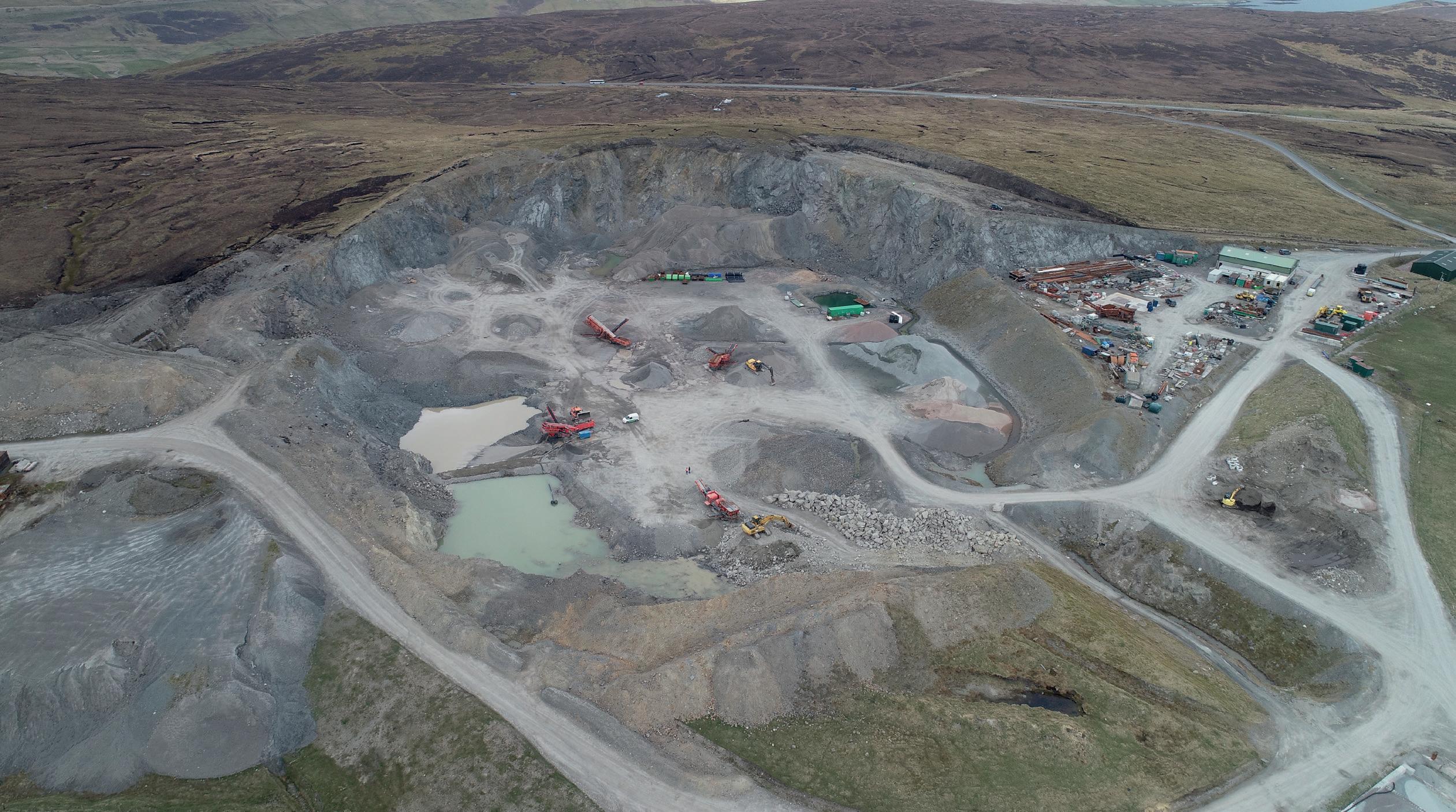
In 2016, Tulloch won the contract for the new Holmsgarth North Pier Development. This £16 million marine project for the Lerwick Port Authority required the construction of a sheet-piled pier and concrete deck, which meant that a lot of heavy marine and civil engineering was involved.
Two years later, Tulloch Developments was hooked onto making the new Lerwick
Fish Market a reality. The team was awarded an £8 million contract, which involved a large building element, as well as constructing new offices for the agents.
“Marine and civil engineering is our main work scope,” insists Joe. “In 2020, we completed the new fish market in our local town. Being solely based on the island, we can take our company into the direction that suits what Shetland needs. That sets us apart from quite specialised companies that might tender specific jobs from the mainland.
“Our work scope really is quite dynamic and tailored to what is available in Shetland at the time. We solely operate on Shetland as our primary focus and that is what makes us unique.
“We have a core staff of around 50 yearto-year, it sits between 49 and 51 some years, and with minimal staff turnover. The guys that are with us have been with us for a long time. Which shows they appreciate the way the company operates and the diverse jobs that we undertake.”
While civil engineering and construction for the port, marine and fisheries is the bread and butter for Tulloch Developments, the company is also seeing an upturn in demand elsewhere for its specialist expertise. In particular, there has been an increase in work for wind power installations, utilities, and power distribution.

In the major contract currently being undertaken supporting SSE in connecting Shetland to the grid with renewable energy, Tulloch Developments has been tasked with 9km of civils works for the new HVDC link cable. The team have been installing ducting from the shoreline to the new converter station, which involved laying cable ducts along 2km of local roads and the rest through grazing land – after overcoming some environmental constraints.
Tulloch’s part of the contract is nearly finished and then it’s up to SSE to move forward with rest of the works and connect to the grid by the
end of 2024. Is the implementation of renewable energy sources a direction the company is looking to for the future?
Joe says: “The scale of the project undertaken in Shetland is nothing like we have seen before. Probably any renewables we can look at is a good idea, and the fact we can play a part in delivering some of it is all the better.” ■
www.tullochdev.co.uk
“
“
The scale of the project undertaken in Shetland is nothing like we have seen before
 The £227 million extension to Wembley Park –and the construction company behind it
The £227 million extension to Wembley Park –and the construction company behind it
It’s been over 160 years since family-owned business John Sisk & Son (Sisk) was founded in Ireland. Today, the company is active on construction and civil engineering projects across the UK, working for a range of large public and private sector clients, and has developed its presence across Europe, providing construction and fit-out projects in the data centres, life sciences, and retail sectors, among others. The company boasts 1900 employees across a network of regional offices, with premises in St. Albans, Solihull, and Warrington, and has also recently expanded into new locations: in Central London and Leeds city-centre.

Despite its history, however, Sisk sits within a rapidly changing industry. Technological advances - combined with a growing push towards sustainable construction methods - are forcing companies to evolve. For Ger Hayes, Managing Director, UK South at Sisk, it’s crucial to be at the forefront of that change.

“We’ve successfully expanded our growth in the UK, Ireland, and Europe across key markets, and that growth is getting stronger, as can be seen in the group’s excellent financial performance in its latest results,” Ger tells us. “Sisk has the track record, scale, and capacity to successfully undertake large, complex, multidisciplinary programmes, aside from residential, and we are recognised by our global customers as world leaders in safe and effective delivery.
CampbellReith has a long-standing and successful working relationship with Sisk and Quintain providing civil, structural and geo-environmental design services on several milestone projects as part of the long term regeneration of Wembley Park.

london@campbellreith.com


T: +44 (0)20 7340 1700 www.campbellreith.com
campbellreith @crh_llp

“Now, we want to be at the forefront of transitioning the industry towards becoming a more sustainable, productive, and inclusive industry for all,” he continues. “Our 2030 Sustainability Roadmap targets include employing data apprentices and enhancing data analysis. Meanwhile, our Digital Twin Whole Project Lifecycle offering allows Sisk, working in collaboration with our supply chain, to provide our clients with an array of tangible benefits that go way beyond the certainty of delivery during the construction phase. We strongly believe in our vision, capability, and commitment to driving this technology forward for the industry with a view to continuing to unlock significant additional value for all our key stakeholders.”
It’s been a turbulent few years for Sisk, and for construction more broadly. Like many, the sector was hit hard by the Covid-19 pandemic, with travel rules and restrictions, as well as social distancing measures significantly reshaping ways of working across the country. But for Ger, it was a period that demonstrated Sisk’s “resilience, empathy, and evidencebased leadership” in the face of adversity, and which saw the company continue to hand over projects in line with revised programmes.
The brunt of the pandemic having now passed, Sisk is in good shape. The company boasts a strong pipeline of work, and recently announced the extension of its work on the Wembley Park development in London until 2025. The company has been

involved with the project since 2004, when it struck an agreement with the developer, Quintain. Now, after completing ten projects worth more than £813 million, Sisk has successfully delivered over 2000 homes for the community at the dynamic 85-acre regeneration scheme. Crucially, however, the project is also a testament to Sisk’s capacity for innovation.
“The Wembley project, and the Eastern Lands phase in particular, has been a particular hotbed for new technology for us in the UK,” Ger reflects. “By leveraging 4D and Digital Project Delivery (DPD) with tools such as BIM360, we ensured the sequence and methodology we planned in the virtual world back in 2016, was exactly what we delivered in the build phase. It’s meant that we’ve been able to deliver an array
of complex high-rise residences on-time and to-budget – an even more impressive feat considering that the pandemic struck about 70 percent of the way through the completion.
“In the next phase, North Eastern Lands, we’ve pushed the limit of design even further, with the largest amount of DFMA off-site that we’ve ever designed into the delivery of a residential project,” he continues. “This approach has led to increased sustainable credentials, driving value through platform design for our client. It has also been a key factor in being able to sign a contract in August 2022 in an incredibly volatile market, coupled with early engagement with our client’s teams, cultivating transparency and a fair allocation of risk.”

“
“
The brunt of the pandemic having now passed, Sisk is in good shape
At £227 million, the extension of the Wembley Park project represents Sisk’s single-largest construction contract to date

At £227 million, the extension of the Wembley Park project represents Sisk’s single-largest construction contract to date, and is set to deliver 769 homes across two new residential building plots. “The completion of the two buildings, covering 9593 metres in total, is expected in early 2025, with 74 per cent of the homes to be build-to-rent alongside over 100 affordable homes of mixed tenure,” Ger reveals. “It’s a landmark contract signing, and a credit to our success at Wembley Park alongside Quintain over the past 20 years, as well as our continued momentum.”

Wembley Park isn’t alone in Sisk’s work. The company also recently completed Moda, The Mercian – Birmingham’s tallest residential tower. Designed by Birmingham-based award-winning Glenn Howells Architects, the 42-storey tower was delivered by Sisk at a cost of £260 million, it will be home to 481

intergenerational apartments for rent, ranging from studios to three-bed apartments. Sisk has also recently completed the Swindon Radiotherapy Centre – an expansion of Oxford University Hospitals NHS Foundation Trust’s radiotherapy service, which is set to save over 13,000 journeys to Oxford for treatment every year. The company is now working under PCSA with Great Ormond Street Hospital, as well as being part of the Procure 23 Framework for the NHS.
“We’re clear in our strategic direction, and we are continuing to invest in it with other Sisk Group businesses such as Vision Built and Sensori FM, offering additional elements,” Ger comments. “Our focus on key sectors such as data, healthcare, and life sciences in the UK has been supported by key appointments to bolster our capabilities.”
Underpinning Sisk’s development is the hard work and dedication of the company’s people – its ‘biggest asset’, according to Ger. “Our people always go above and beyond, and they are what sets us apart,” he confirms. “We have some of the most committed and dedicated people in the industry. This is evident in the quality of outstanding projects they have delivered under difficult circumstances over the past couple of years. Our graduate and apprenticeship schemes have attracted some of the brightest, youngest and most diverse talent, who are rising through the ranks, and will be the future of our business.”
It’s faith that Sisk aims to repay. “We live by our values: care, integrity, and excellence,” Ger continues. “This is evident in our engineering

capabilities, and in how Sisk has treated its workforce. It’s to that end that, in 2020, we launched our ‘I Am Here’ evidence-based mental health programme, and we now have over 500 Sisk staff trained as ‘I Am Here’ ambassadors. We also provide our Employee Assistance Programme and digital wellbeing platform, LifeWorks, to all our staff. This offers everything from free 24/7 counselling to health and financial advice. Our approach has been identified as one of excellence at the 2020 Irish Business and Employers Confederation (IBEC) Keepwell Awards, where we won the Best in Class – Mental Health award.”
Sisk prides itself on a track-record of sustainable growth, securing places on major UK frameworks, including Highways England £218-million framework to revitalise ageing roads and NHS/SBS Public Works £15-to-35-million framework plus the national Scape Framework for public sector projects at +£75 million. This year, Sisk also secured repeat clients with Moda, Highways England, and Quintain, demonstrating its reliability and reputation.
“We have an incredibly stable business, and our ambition is to uphold our core company values of care, integrity, and excellence, which complement our purpose, vision and mission,” Ger reiterates. “We will continue to futureproof our business by investing in innovative tech to streamline our delivery, blended with MMC, to ensure sustainable delivery for our clients and future growth for the company.” ■
www.johnsiskandson.com

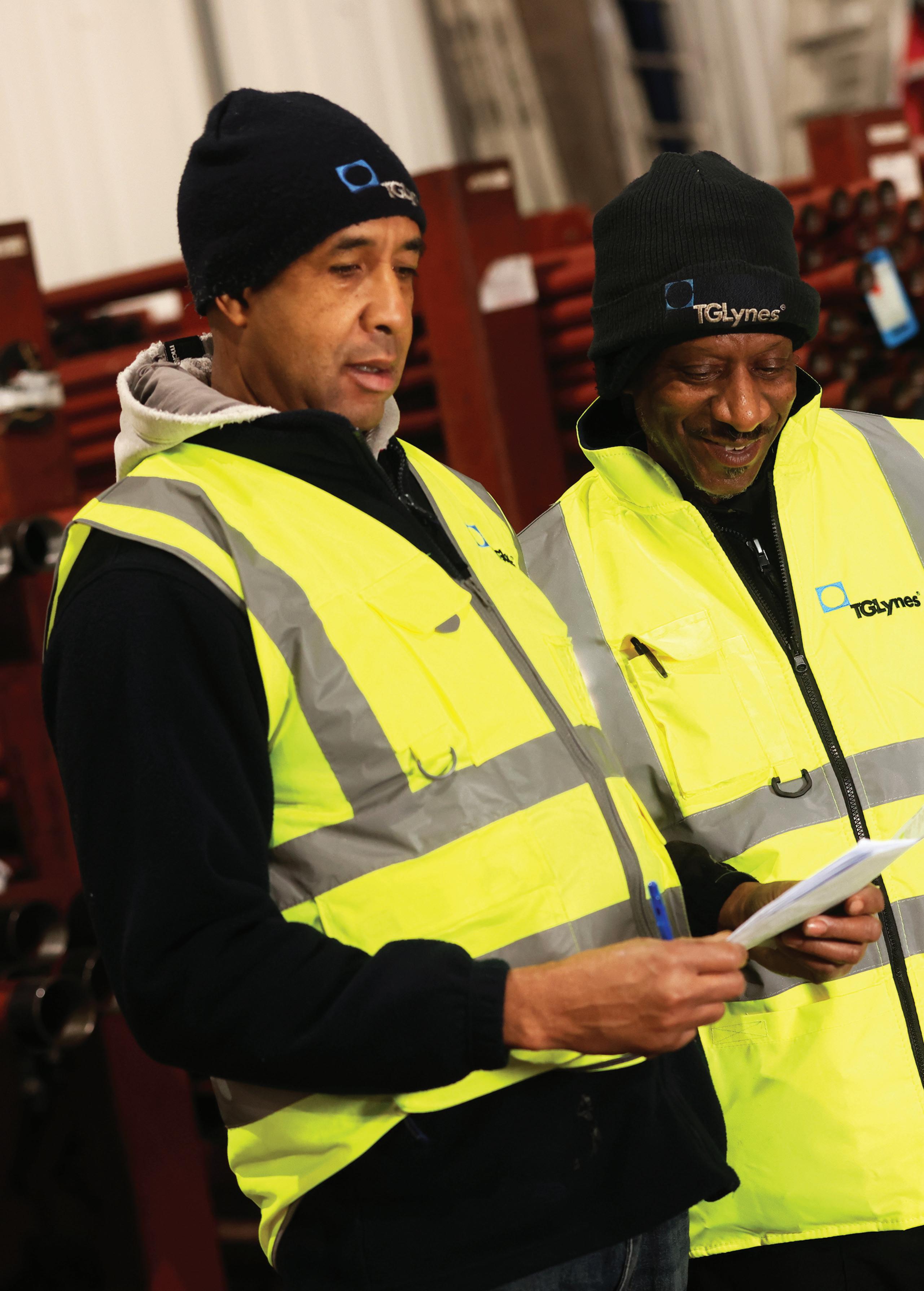
London’s leading 24-hour materials and plant merchant, TG Lynes, has been serving the trade for over 110 years
Based in Enfield, North London, TG Lynes (TGL) is a merchant and distributor of plant and materials for mechanical, heating, plumbing and air-movement services. The company was founded in the King’s Cross area over 110 years ago by the Lynes family, and changed hands in 2015 when it was acquired by the Grafton Group PLC. Since the new ownership, the business has gone from strength-to-strength, and today, it operates out of a 60,000-square-foot facility, with a 2000-square-foot, fully stocked trade counter, and its own plant hire division. In sitting down with Construction & Civil Engineering, Andrew Ingram, Managing Director, describes the enterprise as a true one-stop shop.

“The ethos of TGL has always been to provide our customers with what they need, where and when they need it,” Andrew begins. “The overall aim is to be the ultimate supply chain partner, and we strive to ensure that all of our customer interactions are as smooth as possible. We understand that our clients have incredibly hectic, stressful lives and working schedules, which is why we try to take any angst out of procuring materials or plant and tool hire.
“We generally offer a next day service between London, the home counties and the surrounding areas, meaning we’ll travel over to Norfolk and north towards the Midlands and Birmingham, then southwards down to Southampton. That’s not to say we

don’t have customers outside of the South East and beyond the Midlands. For those with specialist requirements for specific projects, TGL offers a bespoke nationwide service on a pre-booked basis. Currently some of our colleagues are starting as early as two in the morning to prepare scheduling and loading so that our orders are ready to be delivered by our fleet of 22 vehicles, on time.”
In ensuring that it can continue to offer these exceptional services for the long-haul, TGL prioritises a large fraction of its capital for reinvestments in greener technology and equipment. The company’s fleet is fully euro six compliant – and it recently took the next step on its road to net zero by introducing
Armacell is the global leader in the invention, manufacture and supply of flexible elastomeric foam for technical applications. We offer a wide range of high-performing products and unparalleled technical and project expertise, applications training and CPDs, directly from our manufacturing and administration site in Oldham, UK.





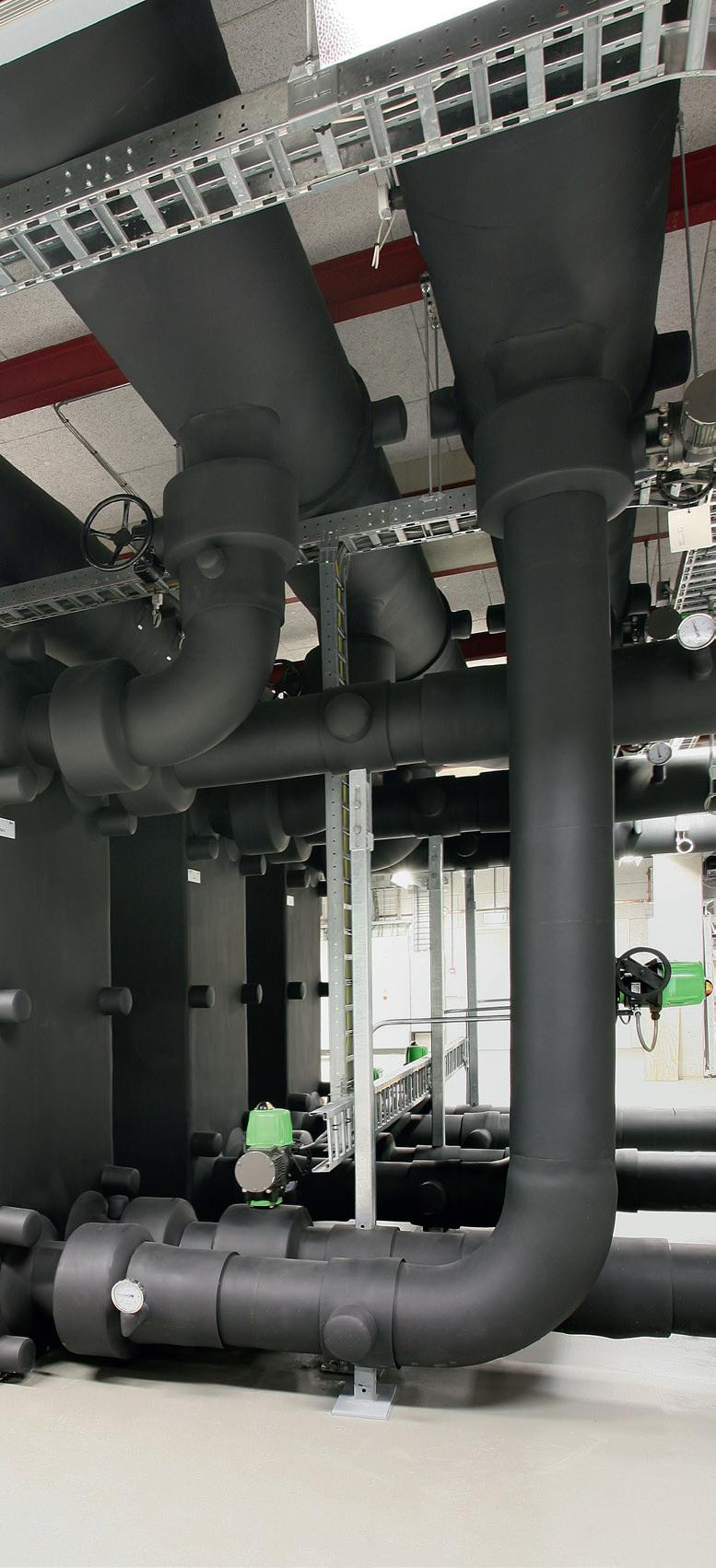


Hydrotreated Vegetable Oil (HVO) to two 18 tonne vehicles in its fleet which were previously running on diesel, making them 90 per cent more carbon efficient. TGL is now considering rolling out HVO across its entire fleet of delivery vehicles throughout 2023, potentially saving 220 tonnes of carbon. A number of new electric alternatives are also being introduced into the commercial fleet later this year, including a 3.5-ton, dropside van and a 7.5-ton Tevva truck. Around 18 months ago, the site was fitted with photovoltaic panels to reduce the business’ reliance on mains energy, and LEDs have replaced the original lighting solution.
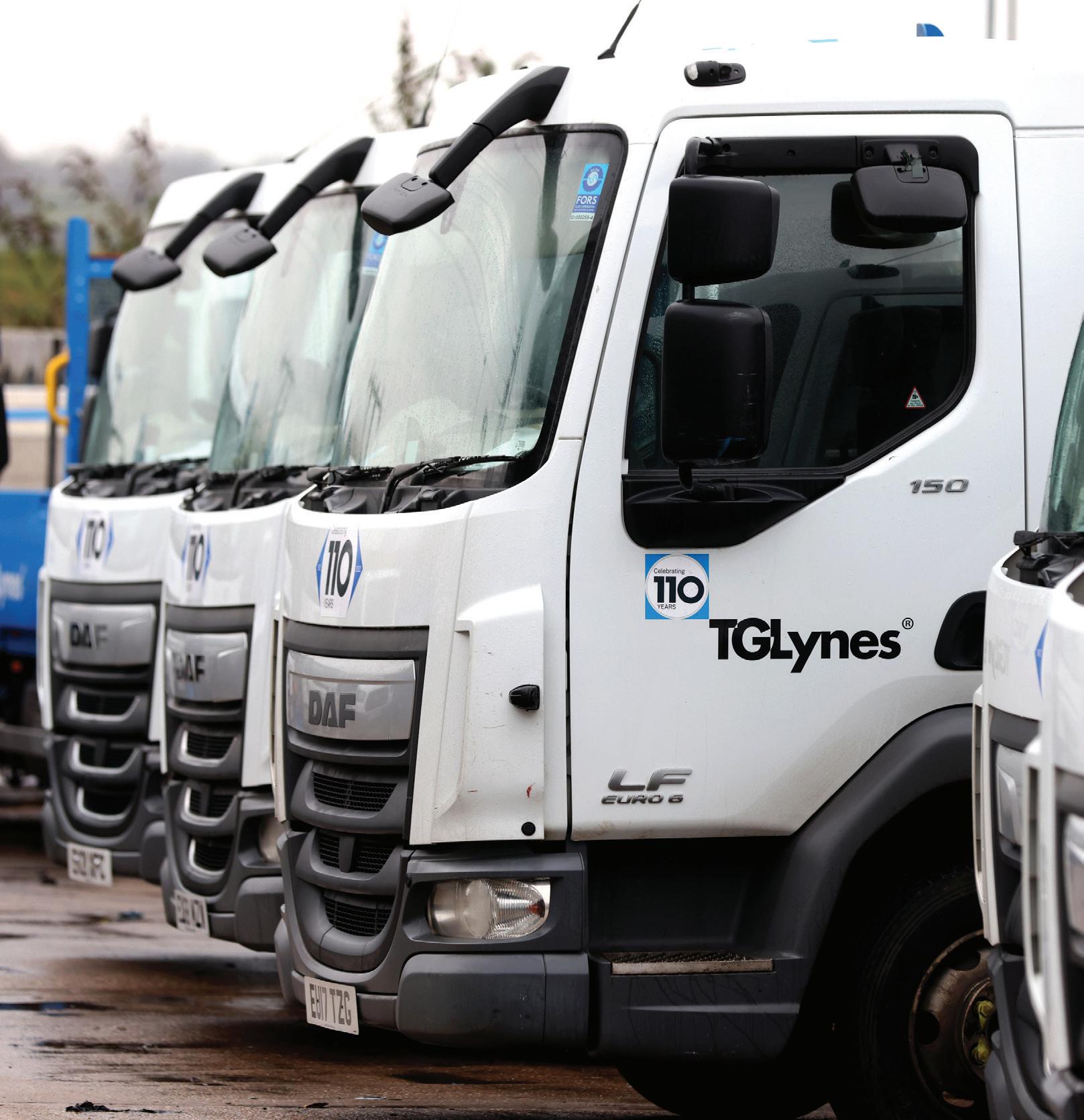
“We are not a company that rests on its laurels,” Andrew continues. “Hydrogen is certainly a fleet option on the horizon, and we will soon see whether that’s going to be an option for us. We are continuing
to look into site improvements, what we have completed thusfar is not the end of the journey. Replacing the current heating system with more environmentally efficient options is high on our list, as well as battery storage for the power being produced by our photovoltaic panels. That way, none of it will go unused and it can replace some of the renewable energy that we source from external wind farms. There’s no longer any single use plastics within the organisation and we have a huge recycling programme to compliment the recycled and recyclable PPE we procured from Wentworth.”
Alongside funding advancements on the technological side, TGL also invests heavily under the banner of ESG, as Andrew details: “Continued investment in our colleagues is crucial to what we do. We have a holistic approach to ensure we’re providing more
TGL is now considering rolling out HVO across its entire fleet of delivery vehicles throughout 2023, potentially saving 220 tonnes of carbon
than just professional development for our employees, we attempt to equally focus on their wellbeing. It’s a huge part of our culture, and the legacy that we’ll pass forward, because without our people, TG Lynes is nothing. It’s a real team effort to achieve the company’s continued success.
“Playing an active role in the community is also vitally important. That’s why last year we launched our Helping Hands campaign to award more than £15,000 worth of product and labour to good causes in our vicinity, something we’re looking to do again in 2023.
“Externally, the same principles apply to the relationships that we have with our supply chain partners. Our procurement and sales teams are in a constant dialogue with our suppliers and vendors to secure the right goods at the right times. Without this, we can’t distribute to our customers. Challenges

...we launched our Helping Hands campaign to award more than £15,000 worth of product and labour to good causes in our vicinity
“ “ “
will always present, but we feel confident that by leading with our strong relationships and consistent communications, we can generally overcome anything thrown our way.” Amongst TGL’s suppliers, the company has significantly developed their working relationship with Armacell UK, which provides lagging products for insulation solutions. “The procurement team at Armacell has been a joy to work alongside, we have one of those symbiotic partnerships. Both of us have succeeded through our collaborative work, and it’s always a pleasure to watch a partner experience such exponential growth, especially over the last two years. It shows you that good working relationships, developed in conjunction with our own procurement team, can benefit both sides, and Armacell have certainly helped provide our customers with such a great service.”
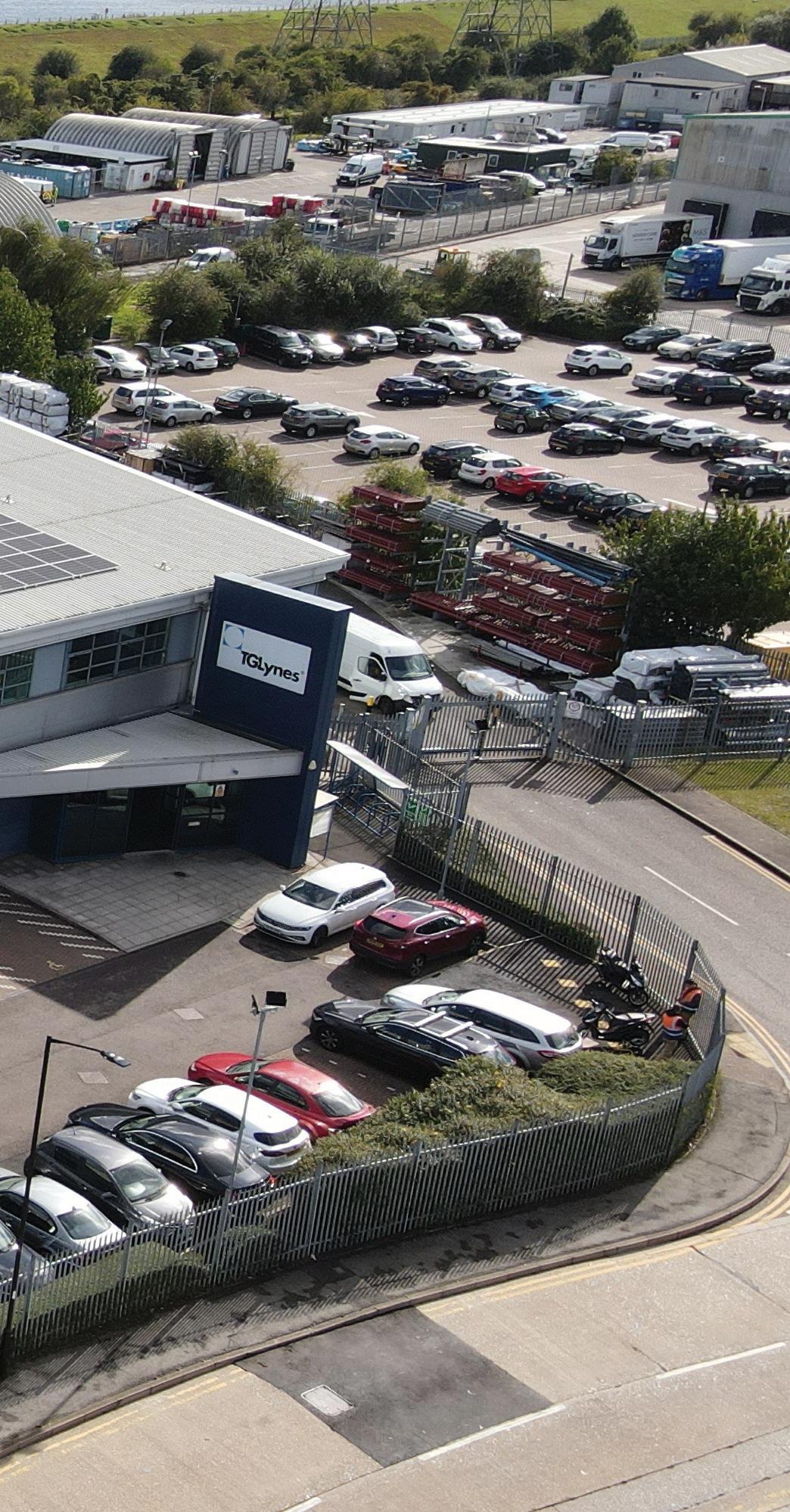
In driving towards a greener and fairer future for all, Andrew cites continued growth and success as being TGL’s main motives. “I hope to see us working hard at the things that we’re good at, and look to improve them further, and offer even greater levels of service. Integrity and quality have been the backbone of TGL for many years and that is the foundation of our relationships with our valued customers. Moving forwards, TGL will continue to review and enhance our current portfolio, as well as our distribution patch. With this as a focus, I don’t think further growth is going to be a problem.” ■ www.tglynes.co.uk

Joseph Gallagher Ltd (JGL), part of the Joseph Gallagher Group, is the UK’s largest specialist tunnelling and civil engineering subcontractor, turning over in excess of £100 million per annum. Having celebrated its 40th year in business last year, JGL continues to grow and diversify into new markets.
The Joseph Gallagher Group is a combination of specialist companies established in the 1990s via the acquisition of several subsidiary companies, which allowed the business to offer complete service packages. It was brought together by Group Chairman and founder, Joseph Gallagher, who continues to play an instrumental role in the company.
It has been involved in some of the UK’s largest infrastructure projects, including London’s infamous Super Sewer (Tideway Tunnel), HS2 and numerous works on high-profile Transport for London underground stations. It currently has 45 live projects in the UK and Middle East and supplies equipment across the United States and Europe. JGL offers a broad range of services to its clients, with the capacity to deliver all tunnelling techniques. Tunnelling is a precise service requiring a wealth of knowledge and experience, due to the wide range of environments in which work is carried out. The team begins a project by assessing ground conditions to identify the best technology and approach and has access to the specific equipment required for every type of job.
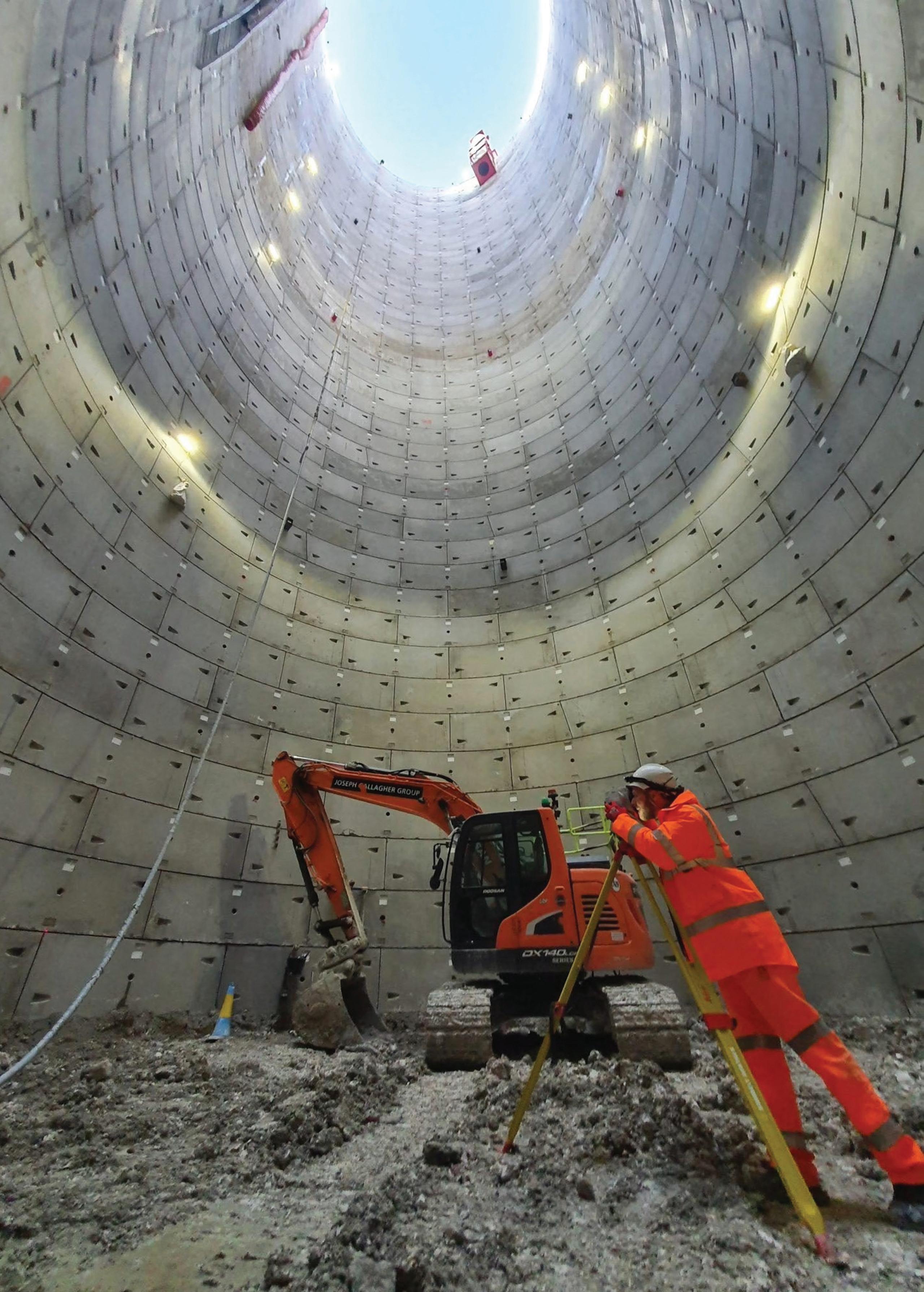
The company is proud to deliver popular tunnelling methods, such as pipe jacking, Sprayed Concrete Lining (SCL), and auger boring, which is favoured for its accuracy and efficiency. It is also well-positioned to provide niche services. Its subsidiary, Specialist Plant Associates (SPA), provides unique microtunnelling services, for example, and is the only UK-based company offering compressed air solutions.
Having expanded into the structures sector in 2004, JGL offers solutions in structural alterations and refurbishments. It has since worked on some of the UK’s most prestigious landmarks, such as the Royal Albert Hall, the British Museum, and Harrods. It has also been partnered with the Berkeley Group since the late 2000s to assist with residential projects, accurately completing basement works by lowering foundations through underpinning.
JGL consistently completes projects on time and within budget, satisfying clients and encouraging repeat custom. The business has, for example, been contracted for several major works across all three sections of the Thames Tideway project. Its access to subsidiary assets, such as specialist equipment and crane hire, combined with its extensive tunnelling workforce brought a unique efficiency to the project.
Specifically, JGL was commissioned to deliver a combined sewer outfall shaft and an SCL connection tunnel into the Tideway main system. It was approached again to install a new 900-millimetre concrete pipeline and connections into two utility access hole chambers. Success on both projects led to yet another appointment on the Tideway project: to push a 30-metre pipe beneath the river Thames from one side of Vauxhall Bridge to the other,

using the trenchless tunnelling technique of pipe jacking. Due to the project’s proximity to the river, JGL specially manufactured an open-face pipe jack shield, which was successful in preventing any spills throughout the duration of the works.
Furthermore, in a joint venture with Bahraini marine contractor, Al Hassanain, JGL has recently completed work on one of the largest pipe-jacked sea outfalls in the world as part of the Umm Al Hayman Wastewater Treatment project in Kuwait. This $1.6 billion project has seen the construction of a 6.2-kilometre-long emergency sea outfall with three tunnels and will provide complete recycling for up to 700,000-metrescubed of wastewater each day.

Difficulties were inevitable on a project of this scale, but JGL’s expertise ensured it could solve any challenges as they arose. It developed a new pipe-jack lubricant,

JGL consistently completes projects on time and within budget, satisfying clients and encouraging repeat custom
for example, which reduced anticipated pressures by 80 per cent. It also achieved a world first, creating a bespoke marine lifting beam to allow air recovery and a precise route for 39-kilometres, sub-surface towing of the tunnel boring machine.
JGL is passionate about its core values of hard work, integrity, and safety. Its mission is to create a high-performance culture that focuses on collaboration, its environmental impact, and the safety of both its employees and the wider community. Its teams are continuously pushing boundaries, improving quality, and delivering high standard workmanship whilst respecting the communities in which it works.
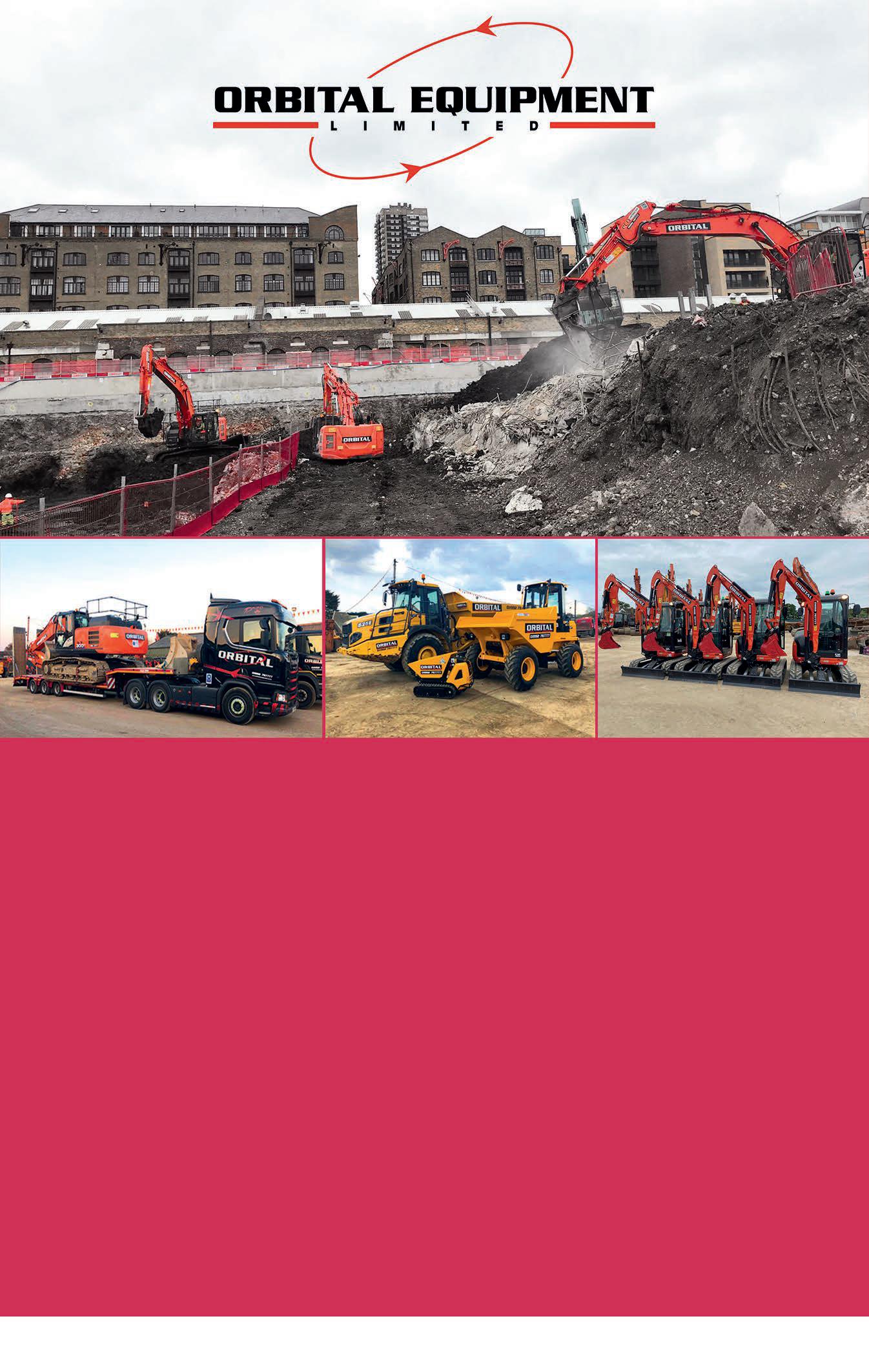
It aims to provide a positive and empowering working environment for its employees, encouraging its people to reach their full potential as individuals, whilst successfully delivering projects


as a team. As a family business, JGL is committed to investment in training and development for people across all levels of the business. It recognises the equal importance of mental health and has a growing community of mental health champions, having trained 28 employees in mental health first aid this year alone.
The business boasts its own awardwinning cultural and behavioural support programme: LIFE (Living Incident Free Everyday) underpins JGL’s core values surrounding safety and wellbeing. It is more than just a safety programme – it forms the company’s entire culture. Introduced in 2014, the LIFE scheme emphasises the significance of five values: teamwork, respect, integrity, excellence, and determination. LIFE aims to change employees’ thinking around health and safety to ensure the concept is not merely a collection of words, but rather, a behavioural foundation for every individual to implement in their everyday roles.
Part of the scheme includes the LIFE Leadership team, who offer employees financial rewards as a way of celebrating success. In 2022, the team presented 600 Best Practice Awards to site workers and office staff who embodied core LIFE values, thereby helping to promote a consistently positive work environment.
JGL recognises that many of its projects are in the heart of neighbourhoods and natural habitats. Its social mission is to add value to the locations in which it operates
By collaborating with clients and its supply chain, JGL is reducing its material use and landfill waste
by supporting groups and organisations that serve those communities. Additionally, it is passionate about expanding its work with young people. For instance, JGL partnered with Tunnel Skills to develop a unique virtual reality experience that gives young people the opportunity to immerse themselves in a 60-foot-deep tunnel, with the vision that this will help to engage and inspire its young visitors.
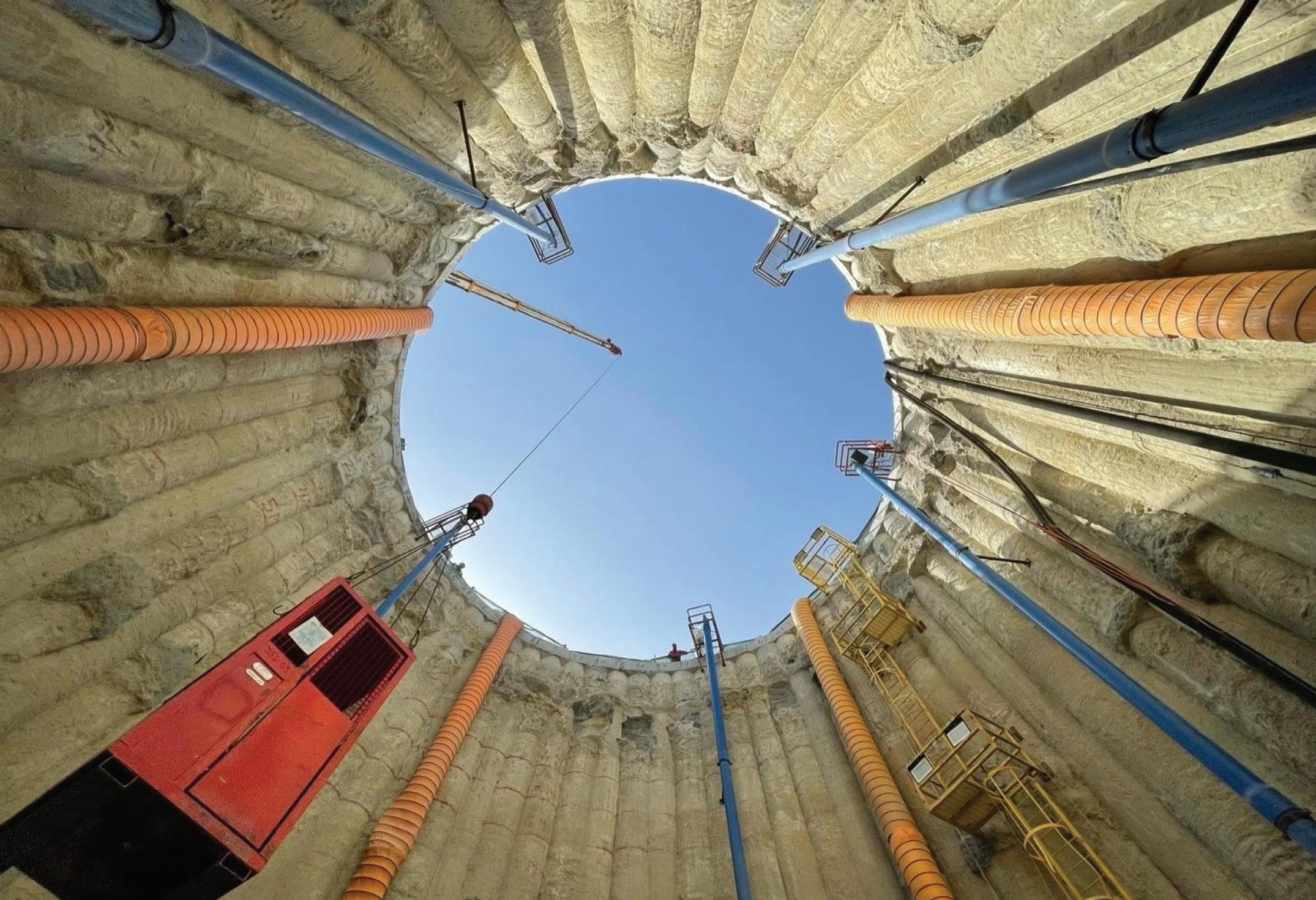
Each of its projects is driven by sustainability, in line with its ambitious target to achieve Net Zero by 2030. By collaborating with clients and its supply chain, JGL is reducing its material use and landfill waste, whilst increasing its recycling opportunities. It recently acquired an energy management accreditation and is constantly trialling new methods and products with a lower carbon footprint or high-recycled content.
In a recent press release, Ian Ford, Group Environmental and Sustainability Manager, commented: “We’re passionate

...its commitment to adopting green processes and embedding cleaner materials in its services was recognized by the World Green Organisation (WGO) last year



about championing our environmental commitments, ensuring that we give careful consideration to the planet’s resources, both in the long and short term.”


Indeed, its commitment to adopting green processes and embedding cleaner materials in its services was recognized by the World Green Organisation (WGO) last year. WGO selected Joseph Gallagher to become a World Green Ambassador after it scooped three Green Apple Awards in 2022, including a Gold award in the category of Sustainable Development in Carbon Reduction.
Moving forward, JGL’s environmental strategy provides a clear process for the company to reduce its carbon footprint year-on-year and remain on target to be net zero by 2030. ■

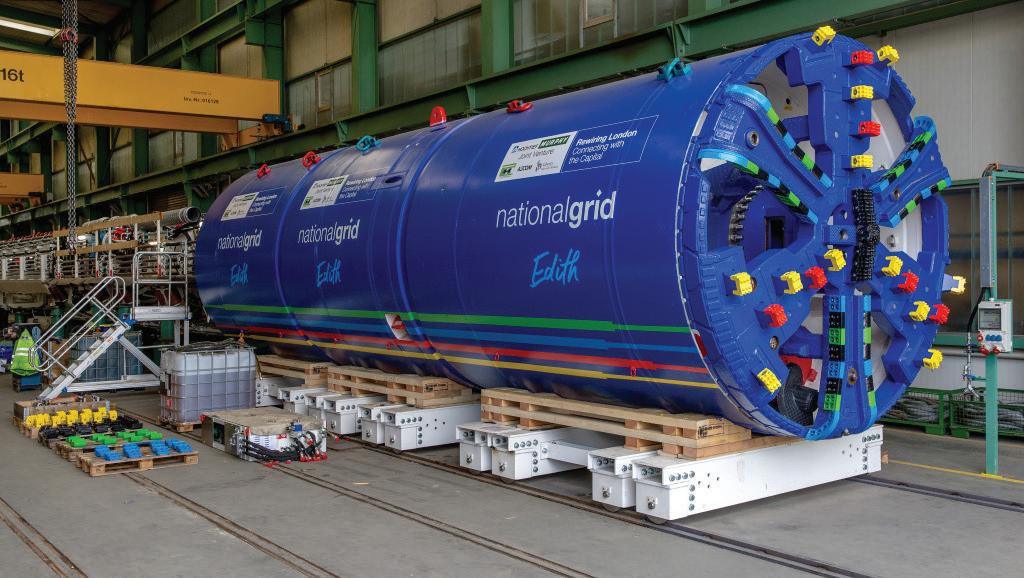
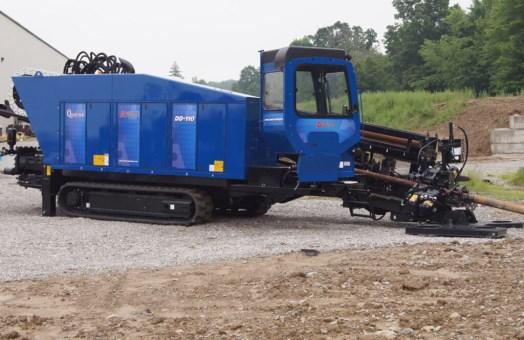


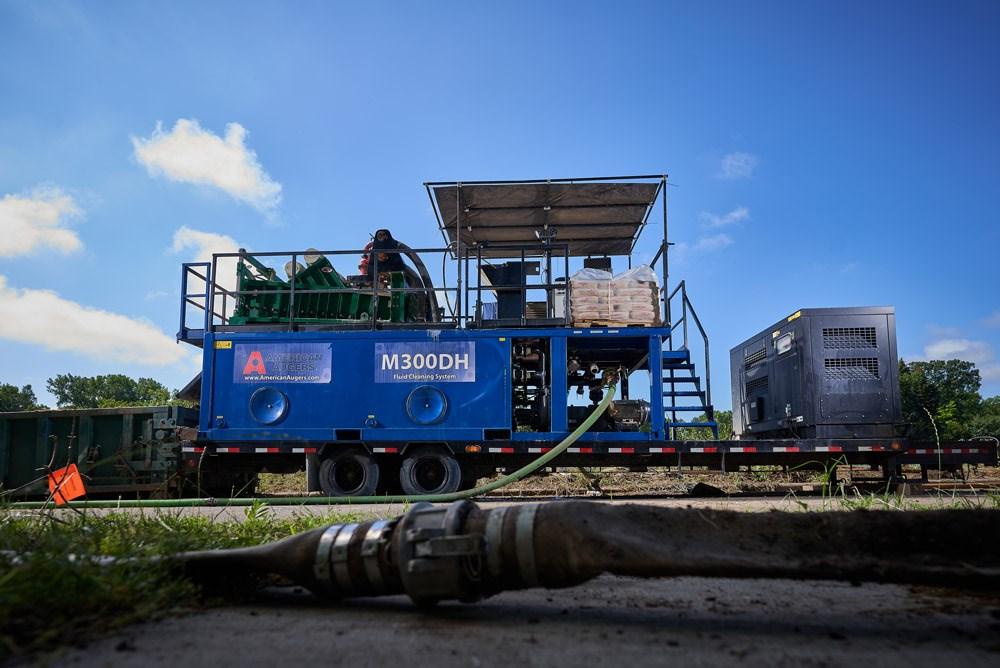

www.josephgallagher.co.uk

Cormac Ltd may be an enterprise that is part-private and part-public, but at its core sits environmental alignment, sustainability and increasingly, a growing social value culture
The Teckal exemption allows for local authorities to establish an arms-length, limited company, and is the legislation under which the Call Serve Group operates. This is Cornwall Council’s group of companies, made up of five subsidiaries including: Cornwall Housing, Newquay Airport Ltd, a facilities and management business, a care company and Cormac Solutions Ltd (Cormac). Founded in 2012, Cormac is a local authority company, wholly owned by the council, which provides services both to itself as a department and elsewhere commercially.
Dominic Bostock, Cormac Managing Director, describes the ownership of the business further: “I always say that the hybrid nature of the organisation is truly what makes us unique. We are not strictly public sector but, at the same time, we are very much owned by the public sector and carry its ethos and responsibilities, however, we combine this with our private-sector, commercial flair. This is the blend that I have been working to maintain since I became MD, an important balance in instilling the requisite confidence in our shareholder, the council.

“The mission of the company has always been aligned to Cornwall and working together to improve the lives of the people who live here. It’s very aligned to our council ownership and our role within the local society and communities. We have three primary strands of activity. The first is the value that we create for communities in Cornwall, through the vision of our turn services, and the second is rooted in the major infrastructure and civil engineering that we are designing and building to contribute to the area’s economic growth. Finally, our third strand is what we refer to as regional business, which covers our contracts and revenue with external organisations, privatesector clients and other local authority customers, outside of Cornwall council.
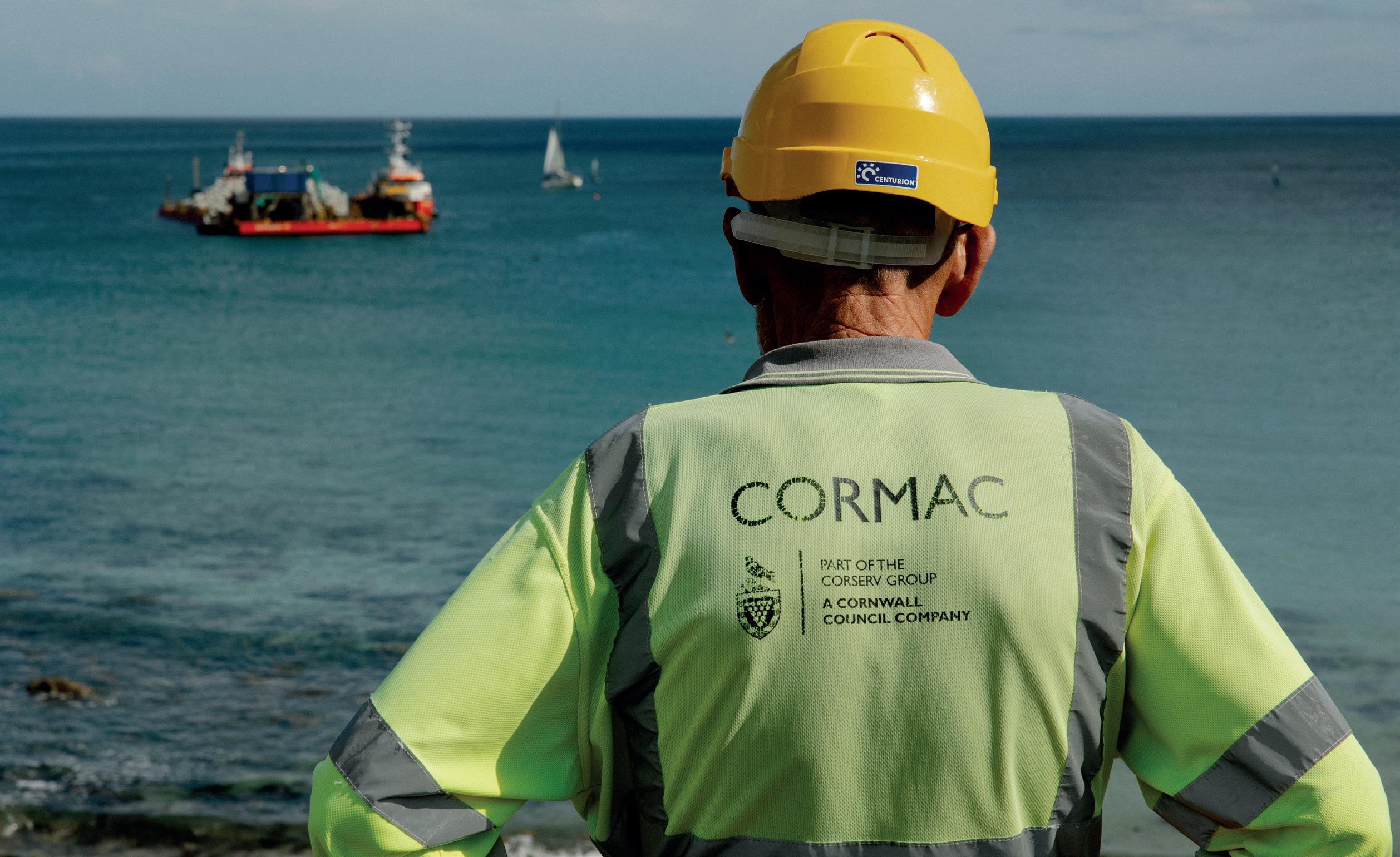
“Establishing these three strands of the business has been my focus for
the last 18 or so months, along with assigning clear objectives to each to create an organisational structure in terms of accountability,” he continues. “Meaning that my business director for term services is on course to delivering maintenance ministrations to the council, as is my director for infrastructure for providing D&B solutions for urban extensions, which will ultimately ensure residential and commercial growth in the area.”
Cormac Business Development supports these strands by leading a four year plan of strategic growth, aligning with like-minded organisations who carry similar values in the region. Business Development is proactive at business and charitable events, driving the social value message, and encouraging engagement to schools, colleges and career based events.

• Geotechnical
• Industrial
• Arboriculture
• Rigging Solutions
• Performance Rigging
• Rescue Cover
Vector rope access UK LTD provide construction and rigging solutions bespoke to your needs covering all aspects of the vertical world.

Unit 30, Treloggan Industrial Estate, Newquay, Cornwall TR7 2QL
01637 498585
missioncontrol@vectorropeaccess.co.uk www. vectorropeaccess.co.uk
Trusted by clients around the UK on sites big and small, whether you need cliff stabilisation, building/bridge/cliff inspection, performance rigging or anything in between, our innovative team can get your project underway.


The largest project that Cormac currently has on its books is the £30 million Langarth Garden Village in Truro, which is essentially an urban expansion set to bring up to 3550 new homes as well as schools, health facilities and workspaces over the next 25 years. The business is also constructing an 80-meter-long, rock-armour revetment to work as a sea defence at North Corner Cliff, Coverack Beach, as well as the St Austell Bay Resilient Regeneration (STARR) initiative to reduce the risk of flooding to local communities.
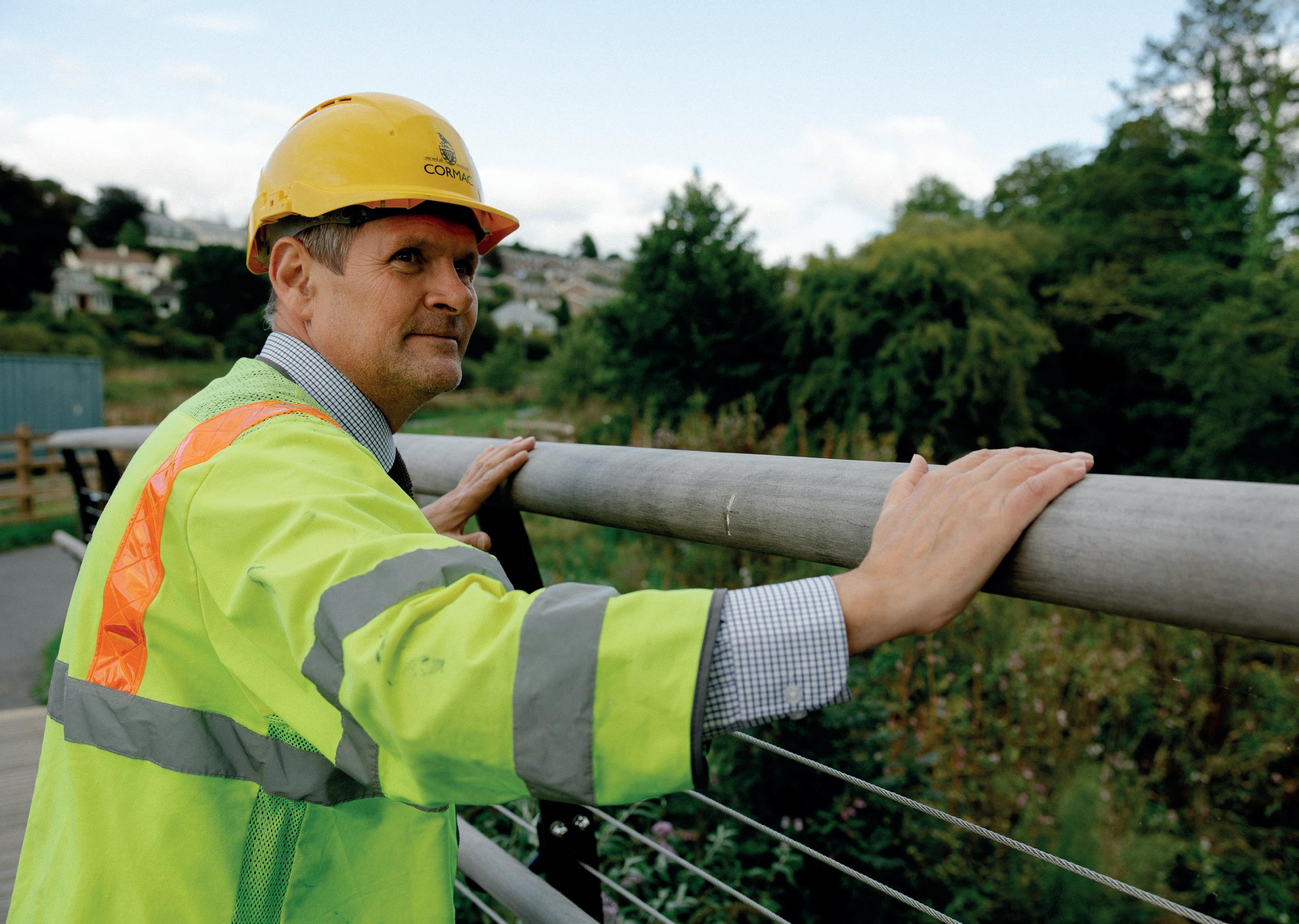
“Our director for the regional business side has got a real focus on growing geographically within the
south west and has been winning work with Devon Council and other clients further outside of Cornwall,” Dominic explains. “One of our key metrics is the measurement of how our revenue breaks down and this financial year we are anticipating that around 80 per cent will be with Cornwall council, with the remaining 20 coming in from a number of other organisations, accumulating to around £110 million turnover. Our current four-year plan is to get that revenue split closer to 50-50.”
Dominic cites Cormac’s infrastructural opportunities for growth, such as homes, workplaces and sustainable communities, as
being the projects that best depict the company and its qualities. These are in line with Cornwall’s local plans for ongoing expansions, which highlight all three as key necessities. “I can count three projects we currently have on the go; two of which are in the construction phase and one that is soon to be, where we will be providing the means for further local growth. Another interesting aspect to our region is drainage, something that we are working with to help deal with flooding, however it’s ultimately the effects of climate change that we’re working against. Water is going to be increasingly problematic for us.
“We are completing a development at St Austell at the moment, with the aim to reduce the flood risk to an area that, prior to this, couldn’t be developed. The STARR project is a collaboration between South West Water, the Environment Agency and Cornwall council

Our director for the regional business side has got a real focus on growing geographically within the south west and has been winning work with Devon Council

to alleviate these issues to enable future regeneration. It’s a combination of what we call blue and green infrastructure, as it isn’t about heavy drainage, but solutions that work through infiltration and use softer, greener techniques as opposed to hard, concrete discharge channels.
“We take great pride in successfully bringing biodiversity and environmental net-gains to areas that we work in and have won multiple awards over the last few years for our work with green infrastructure,” he adds. “The most recent has been Making Space for Nature and prior to that it was a program called Green Infrastructure for Growth, which was focused on creating high-quality, natural spaces for residents and communities to enjoy, whilst also increasing biodiversity and the area’s contribution to sustainability. It’s been great to see the legacy of the volunteer groups that have been established to maintain the estates and the resultant sense of community ownership.”
Every year, Velocity carry out tens of thousands of repairs to help Cormac keep Cornwall’s communities connected.

We use our innovative technology to carry out far more highway repairs than traditional techniques at a significantly lower cost. Repairs that take just minutes to complete, are ready for traffic immediately and built to last.
That’s something customers and drivers really appreciate.
Contact us today to find out how we can help to make your highways maintenance budget go further.

Sustainability is instrumental to Cormac’s ethos and practices, with its carbon reduction policy having sat high on its agenda for the last few years. Since 2019/2020, the company has already seen a reduction of 14 per cent, but that’s just the beginning. Its plant and fleet emissions make up a large portion of its overall carbon footprint, and although it employed an electrification strategy for its smaller vehicles, this didn’t cover its three and a half to five tonne tippers and load-carrying rigs.


“We have undertaken an R&D program with an organisation called Bennamann over the last couple of years, of which the Core Serve Group is a small shareholder. Between us we have been developing a strategy to use slurry, processed in plants on half a dozen or so local, council-owned farms, to produce a bio-methane alternative fuel to power our larger vehicles. We have had the initial prototype operating for the last 18 months and are now awaiting an order of 12 or 13 additional models of the same kind. Going forwards, we are looking to implement power plants and storage facilities for bio-methane among our network of depots, to hopefully enable us to provide a carbon-neutral, environment maintenance service for Cornwall council and its district.
“Carbon is huge factor for the construction industry,” Dominic concludes. “Reducing our carbon and innovating softer solutions within civil engineering, for me, has become far less about concrete and the impact of using natural resources. The focus has shifted towards creating infrastructure that better interfaces with people, communities and nature.” ■
We take great pride in successfully bringing biodiversity and environmental net-gains to areas that we work in
